precautionary principle
description: risk management strategy emphasizing caution in scientific proceedings
143 results

The End of Doom: Environmental Renewal in the Twenty-First Century
by
Ronald Bailey
Published 20 Jul 2015
Now modern environmentalist elites would similarly restrict access to technologies that they find too dangerous and socially disruptive. The precautionary principle empowers a self-selected elite of the timorous to obstruct progress for the majority. In a sense, the precautionary principle is a return to the era when clerics and nobles (environmentalist ideologues and bureaucrats today) had the power to halt innovations on the grounds that they were bad for the common folk. The precautionary principle is the opposite of the scientific process of trial and error that is the modern engine of knowledge and prosperity. The precautionary principle impossibly demands trials without errors, successes without failures.
…
Consequently, implementing the strong version of the principle will instead make us “more sorry than safe,” as Case Western Reserve University law professor Jonathan Adler has cogently argued. Why? The central issue is that proponents of the precautionary principle tend to focus on hypothetical dangers while generally failing to consider fully the power of new technologies to reduce risk. The closest thing to a canonical version of the precautionary principle was devised by a group of thirty-two leading environmental activists meeting in 1998 at the Wingspread Center in Wisconsin. The Wingspread Consensus Statement on the Precautionary Principle reads: When an activity raises threats of harm to human health or the environment, precautionary measures should be taken even if some cause and effect relationships are not fully established scientifically.
…
The commission concluded that with respect to the benefits and harms of synthetic biology, the current regulatory system is robust enough to protect people and the environment. Nanotechnology is also being targeted by proponents of the precautionary principle. Nanotechnology basically encompasses a suite of new technologies involving the use of materials at scales measuring in billionths of an inch, including tools like 3-D printing and carbon nanotubes. When it comes to regulating nanotechnology, Georgia Miller from Friends of the Earth asks, “Who is afraid of the precautionary principle?” She argues for “a more comprehensive application of the precautionary principle [that] would see nanotechnology’s broader socio-economic and political implications considered and assessed alongside its toxicity risks.”
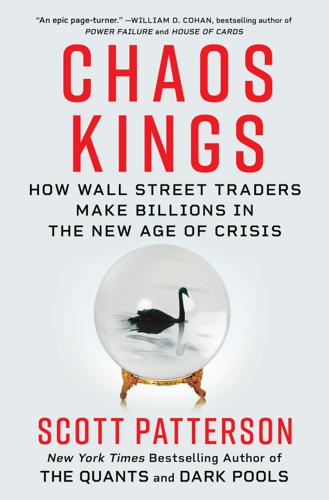
Chaos Kings: How Wall Street Traders Make Billions in the New Age of Crisis
by
Scott Patterson
Published 5 Jun 2023
Reading voraciously on the topic, he stumbled across a 2001 report by the EU’s European Environment Agency called “Late Lessons from Early Warnings: The Precautionary Principle 1896−2000.” The report examined a selection of environmental, medical, and chemical controversies, ranging from nineteenth-century British fisheries to radioactivity to asbestos, and how the precautionary principle could be applied to them (global warming is barely mentioned, a follow-up in 2013 would address it). Read began studying the long and tangled history of the precautionary principle and became convinced it provided a template for taking on the growing threat of global warming and other looming risks and catastrophes.
…
The first paper he coauthored there was “The Precautionary Principle.” It went through multiple drafts circulated between Taleb, Read, Norman, and Bar-Yam. They finally completed the paper in the fall. On October 17, 2014, at 12:30 p.m., Taleb hit a button on his computer and published “The Precautionary Principle (with Application to the Genetic Modification of Organisms)” on Cornell University’s arXiv.org. With the push of that button, Taleb had taken a leap into one of the hottest public firestorms of his life. CHAPTER 18 RUIN IS FOREVER Abstract—The precautionary principle (PP) states that if an action or policy has a suspected risk of causing severe harm to the public domain (affecting general health or the environment globally), the action should not be taken in the absence of scientific near-certainty about its safety.
…
In other words, it was a ruin problem. It was just such problems that prompted Taleb, Bar-Yam, Norman, and another collaborator, the English philosopher and climate activist Rupert Read, in 2014, to write “The Precautionary Principle,” a preview of the January 2020 note that recommended dramatic, immediate action to stop the spread of Covid-19 despite overwhelming uncertainty about its properties. The precautionary principle itself is designed to guide actions and policies in the realms of uncertainty and risk “in cases where the absence of evidence and the incompleteness of scientific knowledge carries profound implications and in the presence of risks of ‘Black Swans,’ unforeseen and unforeseeable events of extreme consequence,” Taleb and his coauthors wrote in the 2014 paper.

Green Philosophy: How to Think Seriously About the Planet
by
Roger Scruton
Published 30 Apr 2014
North, The Mad Officials, London, 1994. 121 The best source is Simon Fairlie’s website, www.tlio.org.uk, and his book, Low Impact Development cited in n.96, p. 80. 122 Wingspread Statement on the Precautionary Principle, drafted and finalized at a conference at the Wingspread Conference Center, Racine, Wisconsin, 23–25 January 1998, www.gdrc.org/u-gov/precaution-3.html. 123 Commission of the European Communities, ‘Communication from the Commission on the Precautionary Principle’, Brussels, 2.2.2000, COM (2000) 1 final. 124 ECJ, 9 September 2003, reported in Official Journal of the European Union, C 264, 01.11.2003, p. 10. 125 See also, for further illustrations, Gary E. Marchant and Kenneth L. Mossman, Arbitrary and Capricious: The Precautionary Principle in the European Courts, Washington DC, 2004. 126 See Bill Durodié, ‘Plastic Panics: European Risk Regulation in the Aftermath of BSE’, in Julian Morris, ed., Rethinking Risk and the Precautionary Principle, Oxford, 2000. 127 The story is related of Franklin D.
…
This Principle probably began life in pre-war Germany, and was invoked later in the sixties as the blanket justification for state planning. Reissued in the seventies under the name of the Precautionary Principle, it is now being advocated at every level of European politics as a guide to regulation, legislation and the use of scientific research. Addressing the Royal Society in 2002, British prime minister Tony Blair told the assembled body of distinguished scientists that ‘responsible science and responsible policy-making operate on the Precautionary Principle’. Yet nobody seems to know what the Principle says. Does it tell us to take no risks? Then surely it is merely irrational, since everything we do has a risk attached.
…
And the reference to a ‘high level of protection chosen for the Community’ naturally leads to the question ‘chosen by whom?’ The statement is in fact a licence to forbid any activity that a bureaucrat judges, on whatever grounds, to have a possible cost attached to it. Although there is little or no agreement as to what the Precautionary Principle says, it has now become a doctrine of European law. A recent decision of the European Court of Justice, having invoked the Precautionary Principle, concluded that the government of Italy is justified in preventing the sale of genetically modified food on the basis that ‘no human technology should be used until it is proven harmless to humans and the environment’.124 Taken literally that would forbid every innovation in food technology that we have recently witnessed.

The Collapse of Western Civilization: A View From the Future
by
Naomi Oreskes
and
Erik M. Conway
Published 30 Jun 2014
Social scientists introduced the concept of “late lessons from early warnings” to describe a growing tendency to neglect information. As a remedy, they promoted a precautionary principle, whereby early action would prevent later damage. The precautionary principle was a formal instantiation of what had previously been thought of as common sense, reflected in the nineteenth-century European and American adages, “A stitch the precautionary principle in time saves nine” and “An was a formal instantiation ounce of prevention is worth of what had previously been a pound of cure.” Yet this tra- thought of as common sense, ditional wisdom was swept reflected in the nineteenth- away in neoliberal hostil- century european and ameri- ity toward planning and an can adages, “a stitch in time saves nine” and “an ounce of overconfident belief in the prevention is worth a pound power of markets to respond of cure.”
…
As we explain in the piece, and in Merchants of Doubt, it provides no defense against many other kinds of error. 8. So what about the “precautionary principle”—the idea you describe in CWC, that we must take early action to prevent later disaster? Critics of this notion argue that the precautionary principle is more of a rhetorical and advocacy tool than a responsible way to explore and develop policy options. Do you think a market-based, neoliberal political and economic regime can act with long-term caution? I N t e r v I e w w I t h t h e A u t h O r s 75 eC: The claim is nonsense. In terms of anthropogenic climate change, the precautionary principle is moot. Precautions are taken in advance of damage, not after it has already begun.
…
In the twentieth L e x i c o n o f A r c h A i c T e r m s 61 century, the term was sometimes confusingly associated with the nearly opposite stance: that scientific theories are to be believed come hell or high water. Thus, scientists were sometimes accused of being “positivists” for believing in the truth of their theories, when in fact a true positivist would only believe in the truth of the observations (or observation statements) on which those theories were built. precautionary principle “First, do no harm,” a doctrine supposed to descend from the ancient Greek physician Hippocrates. The basis of all policies designed to protect human life and health. sagan effect In 1959, U.S. astronomer Carl Sagan identified the greenhouse effect as the cause of Venus’s hotter-than-molten-lead surface temperature; as anthropogenic global warming took hold in the late 2000s, the term Sagan effect was used to refer to the runaway greenhouse effect on Earth.
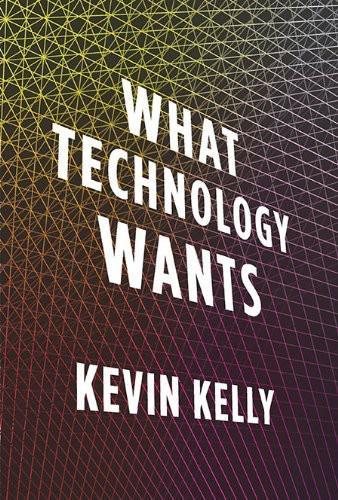
What Technology Wants
by
Kevin Kelly
Published 14 Jul 2010
Better safe than sorry. Unfortunately, the Precautionary Principle works better in theory than in practice. “The precautionary principle is very, very good for one thing—stopping technological progress,” says philosopher and consultant Max More. Cass R. Sunstein, who devoted a book to debunking the principle, says, “We must challenge the Precautionary Principle not because it leads in bad directions, but because read for all it is worth, it leads in no direction at all.” Every good produces harm somewhere, so by the strict logic of an absolute Precautionary Principle no technologies would be permitted.
…
Fireproof asbestos is toxic, but most of its substitutes are equally if not more toxic. Furthermore, the removal of asbestos greatly increases its danger compared to the low risk of letting it remain in place in buildings. The Precautionary Principle is oblivious to the notion of substitute risks. In general the Precautionary Principle is biased against anything new. Many established technologies and “natural” processes have unexamined faults as great as those of any new technology. But the Precautionary Principle establishes a drastically elevated threshold for things that are new. In effect it grandfathers in the risks of the old, or the “natural.” A few examples: Crops raised without the shield of pesticides generate more of their own natural pesticides to combat insects, but these indigenous toxins are not subject to the Precautionary Principle because they aren’t “new.”
…
These immensely powerful inventions have unleashed a level of creativity not seen since the Renaissance, but when (not if) they are abused, their ability to track and anticipate individual behavior will be awful. If a new technology is likely to birth a never-before-seen benefit, it will also likely birth a never-before-seen problem. The obvious remedy for this dilemma is to expect the worst. That’s the result of a commonly used approach to new technologies called the Precautionary Principle. The Precautionary Principle was first crafted at the 1992 Earth Summit as part of the Rio Declaration. In its original form it advised that a “lack of full scientific certainty shall not be used as a reason for postponing cost-effective measures to prevent environmental degradation.” In other words, even if you can’t prove scientifically that harm is happening, this uncertainty should not prevent you from stopping the suspected harm.

The Transhumanist Reader
by
Max More
and
Natasha Vita-More
Published 4 Mar 2013
By single-mindedly enforcing the tyranny of safety, this principle can only distract decision-makers from such an examination. Environmental and technological activism that wields the precautionary principle, whether explicitly or implicitly, raises clear threats of harm to human health and wellbeing. If we apply the principle to itself, we arrive at the corollary to the Paradox of the Precautionary Principle: According to the principle, since the principle itself is dangerous, we should take precautionary measures to prevent the use of the precautionary principle. The severity of the precautionary principle’s threat certainly does not imply that we should take no actions to safeguard human health or the environment.
…
Structural wisdom comes not only from the fact of structuring itself, but also from structuring in a way that relies on the best methods, models, tools, and procedures available. Structural wisdom is all about guiding our decision-making by the smartest possible methods. The Proactionary Principle embodies the wisdom of structure. The precautionary principle does not. The Failure of the Precautionary Principle The version of the precautionary principle from the 1988 Wingspread Statement says: When an activity raises threats of harm to the environment or human health, precautionary measures should be taken even if some cause and effect relationships are not fully established scientifically.
…
Since unaltered nature is implicitly an absolute value in the principle, no tradeoffs are to be allowed. The precautionary principle is all about avoiding possible harm – and human-caused harm, and primarily harm to the environment – rather than respecting a wider set of values. This absolutist, univalued approach conflicts with the more balanced approach to risk and harm derived from common law. Common law holds us liable for injuries we cause, with liability increasing along with foreseeable risk. By contrast, the precautionary principle bypasses liability and acts like a preliminary injunction – but without the involvement of a court. By doing this, the precautionary principle denies individuals and communities the freedom to make tradeoffs in the way recognized by common-law approaches to risk and harm.

Whole Earth Discipline: An Ecopragmatist Manifesto
by
Stewart Brand
Published 15 Mar 2009
They say it is destroying the balance of nature, with unacceptable risks to human health and natural ecology. They talked a great deal about a rule called the Precautionary Principle. The Precautionary Principle says that if some course of action carries even a remote chance of irreparable damage to the ecology, then you shouldn’t do it, no matter how great the possible advantages of the action may be. You are not allowed to balance costs against benefits when deciding what to do. The Precautionary Principle gives the Europeans a firm philosophical basis for saying no to GM food. In response, the Africans pointed out that the Precautionary Principle can just as well be used as a philosophical basis for saying yes.
…
As Dyson noted, the precautionary principle, as currently applied, is deliberately one-sided, a rejection of what is called risk balancing. The convener of the Wingspread gathering, Carolyn Raffensperger, is widely quoted as saying, “Risk assessment embodies the idea that we can measure and manage or control risk and harm—and we can decide that some risk is acceptable. The Precautionary Principle is a very different idea that says that as an ethical matter, we are going to prevent all the harm we can.” Net-benefit analysis is ruled out. One consequence of the precautionary principle is that, in practice, it can be self-canceling.
…
” • The precautionary principle has been so widely recognized as a barrier to progress that, according to England’s Prospect magazine, in 2006, the House of Commons select committee on science and technology recommended that the term “should not be used and should ‘cease to be included in policy guidance.’ ” Various attempts have been made to draft a substitute—the proactive principle (Max More and Kevin Kelly), the precautionary approach (Nuffield Council on Bioethics), the reversibility principle (Jamais Cascio), and the anti-catastrophe principle—that one from an excellent book, Laws of Fear: Beyond the Precautionary Principle (2005), by behavioral economist Cass Sunstein, who now heads Obama’s Office of Information and Regulatory Affairs. I would not replace the precautionary principle. Its name and founding idea are too good to lose. But I would shift its bias away from inaction and toward action with a supplement—the vigilance principle, whose entire text is: “Eternal vigilance is the price of liberty.” The precautionary principle by itself seeks strictly to stop or slow new things, even in the face of urgent need.
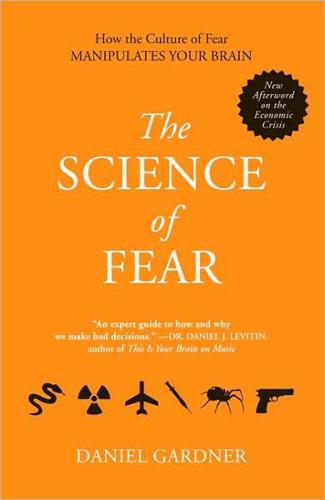
The Science of Fear: How the Culture of Fear Manipulates Your Brain
by
Daniel Gardner
Published 23 Jun 2009
And this is only one of more than twenty definitions of the precautionary principle floating about in regulations and laws. Many are quite different and some are contradictory on certain points. As a result, there is a vast and growing academic literature grappling with what exactly “precaution” means and how it should be implemented. Politicians and activists like to talk about the precautionary principle as if it were a simple and sensible direction to err on the side of caution. But there’s nothing simple about it. Nor is it all that sensible. As law professor Cass Sunstein argues in Laws of Fear, the precautionary principle is more a feel-good sentiment than a principle that offers real guidance about regulating risks.
…
Immediately after 9/11, writes Suskind, Cheney directed that “if there was even a one percent chance of terrorists getting a weapon of mass destruction—and there has been a small probability of such an occurrence for some time—the United States must now act as if it were a certainty.” In effect, if not in name, Cheney was invoking the precautionary principle. This is a contradiction that goes to the heart of the politics of risk. On the left, the precautionary principle is revered. It is enshrined in European Union law. Environmentalists are always talking about it. But the right loathes it. In fact, the Bush administration is openly hostile to the European Union’s attempts to apply the precautionary principle in health and environmental regulations. In May 2003, shortly after the United States had invaded Iraq on better-safe-than-sorry grounds, John Graham, the White House’s top official in charge of vetting regulations, told the New York Times that the Bush administration considers the precautionary principle “to be a mythical concept, perhaps like a unicorn.”
…
Risks are everywhere, he notes, so we often face a risk in acting and a risk in not acting— and in these situations, the precautionary principle is no help. Consider chlorine. Treat drinking water with it and it creates by-products that have been shown to cause cancer in lab animals in high doses and may increase the cancer risk of people who drink the water. There’s even some epidemiological evidence that suggests the risk is more than hypothetical. So the precautionary principle would suggest we stop putting chlorine in drinking water. But what happens if we do that? “If you take the chlorine out of the drinking water, as was done in South America, you end up with an epidemic of 2,000 cases of cholera,” says Daniel Krewski.

The Brussels Effect: How the European Union Rules the World
by
Anu Bradford
Published 14 Sep 2020
This principle dictates that precautionary regulatory action is proper even in the absence of an absolute, quantifiable certainty of the risk, as long as there are reasonable grounds for concern that the potentially dangerous effects may be inconsistent with the chosen level of protection.119 The precautionary principle emanates from Swedish and German environmental law dating back to the 1960s,120 and the Maastricht Treaty, which officially embraced the principle at the EU level in 1992,121 largely reflecting Germany’s effort to “Germanize” European environmental policy.122 The additional impetus for the precautionary principle came from various food safety and environmental scandals that made the general public eager to preempt regulatory risks with precautionary regulation. As the public support for the precautionary principle grew, all institutions were eager to capitalize on it and endorse precaution to earn greater legitimacy in the eyes of the public.123 The Commission has sought to curtail the excessive reliance on the precautionary principle by member states as a pretext for limiting trade from other member states by emphasizing the importance of science as a foundation for risk regulation.124 At the same time, the Commission is clear in its willingness to retain the ability to defend EU-level risk regulations vis-à-vis the EU’s trade partners in instances where regulation was enacted in response to “potential risk” or based on “inconclusive” or “imprecise” evidence.
…
In contrast, while scientific evidence remains central to regulating risk in the EU,118 it is tempered by the EU-wide adoption of the “precautionary principle.” This principle dictates that precautionary regulatory action is proper even in the absence of an absolute, quantifiable certainty of the risk, as long as there are reasonable grounds for concern that the potentially dangerous effects may be inconsistent with the chosen level of protection.119 The precautionary principle emanates from Swedish and German environmental law dating back to the 1960s,120 and the Maastricht Treaty, which officially embraced the principle at the EU level in 1992,121 largely reflecting Germany’s effort to “Germanize” European environmental policy.122 The additional impetus for the precautionary principle came from various food safety and environmental scandals that made the general public eager to preempt regulatory risks with precautionary regulation.
…
For instance, in its 2000 communication, the Commission reserves for the EU the ability to act when faced with a “level of risk that the public considers appropriate,”125 acknowledging citizens’ fears as a legitimate basis for regulatory intervention. In practice, the precautionary principle has become a central component of the EU’s regulatory decision-making. It has been systematically incorporated into key policy documents,126 providing a foundation for many regulations, such as REACH, the regulation of beef hormones, and GMOs.127 The European courts have also been consistent in endorsing the principle128 by granting the Commission wide discretion to act based on precaution.129 The ECJ even elevated the precautionary principle to the status of a “general principle” of EU law in its Artegodan judgment,130 further demonstrating the Court’s strong approval of precautionary standards.

Safe Food: The Politics of Food Safety
by
Marion Nestle
Published 1 Jan 2010
Commission of the European Communities. Communication from the Commission on the Precautionary Principle. Brussels, February 2, 2000, at http://portal.unesco.org/shs/en/ev.php-URL_ID=6615&URL_DO=DO_PRINT PAGE&URL_SECTION=201.html. 32. Foster KR, Vecchia P, Repacholi MH. Science and the precautionary principle. Science 2000;288:979–981. Groth E. Science, Precaution and Food Safety: How Can We Do Better? (discussion paper for the US Codex Delegation), February 2000, at www.consumersunion.org/food/codexcpi200.htm. 33. Montague P. The precautionary principle. Rachel’s Environment & Health Weekly, 586, February 19, 1998, at www.seismo.unr.edu/htdocs/academic/ ANDERSON/Papers/Precaution/Montague_PrecautionaryPrinciple.pdf. 34.
…
Whether or not to invoke the Precautionary Principle is a decision exercised where scientific information is insufficient, inconclusive, or uncertain and where there are indications that the possible effects on the environment or human, animal or plant health may be potentially dangerous and inconsistent with the chosen level of protection. . . . The appropriate response in a given situation is thus the result of a political decision, a function of the risk level that is “acceptable” to the society on which the risk is imposed.31 In practice, invocation of the precautionary principle can be used to require companies to demonstrate that foods are safe before they are marketed.
…
On the basis of such precautions, the European Union banned American and Canadian beef from cattle treated with growth hormones and delayed introduction of genetically modified crops. Thus, the precautionary principle has implications for international trade as well as domestic food policy and has become a major rallying point for advocates who favor environmental protection or oppose food biotechnology.32 In January 1998, for example, a group of such advocates met in Wingspread, Wisconsin, to formulate what is now known as the Wingspread statement on the precautionary principle: “When an activity raises threats of harm to human health or the environment, precautionary measures should be taken even if some cause and effect relationships are not fully established scientifically.

The Non-Tinfoil Guide to EMFs
by
Nicolas Pineault
Published 6 Dec 2017
328 singularityhub.com © 2017 N&G Media Inc. 97 Choice #2: The Precautionary Principle The Precautionary Principle instructs us that in the face of serious threats, a lack of scientific certainty never justifies inaction. - Yes, Martin Blank, PhD, once again. Can’t get enough of this guy.329 Remember when I told you that believing that “Science” has everything figured out is like believing in Santa? The same goes for people who still think that if you can purchase a cell phone, it means it’s inherently safe — because the Government and regulatory agencies have your back, and always rely on the precautionary principle. But as you can already guess, it’s a philosophy that’s in fact very rarely applied in our money-driven society. 98 I would explain what the precautionary principle is to the average Joe on the street using two words: common sense.
…
But as you can already guess, it’s a philosophy that’s in fact very rarely applied in our money-driven society. 98 I would explain what the precautionary principle is to the average Joe on the street using two words: common sense. Following this principle, even if there were just one study, one warning sign that maybe the EMFs we’re constantly bathing in might be harmful in the long run… we should probably force manufacturers to create safer devices that emit less EMFs, right? Just in case! Of course, you need to give these manufacturers time to change their ways. It’ll likely cost them billions to create safer products, and we don’t want to crash the economy, do we? But still, using the precautionary principle is all about putting human health before profits, and most of all — learning from our past mistakes that clearly show that humanity has this uncanny ability to screw up its environment, and then feel sorry it has to clean up its mess afterwards. 329 Blank, M., PhD. (2015).
…
Trust me — none of these scientists want to destroy cell phones, ban wifi routers, and go back to the Stone Age. But they all agree that the way we currently do things isn’t right, and that guidelines need to change, like yesterday. These good folks all agree that the precautionary principle should be applied here — which means we need to act now, not in 40 years when EMFs will finally be deemed totally safe, totally unsafe, or somewhere in the middle. Applying the precautionary principle isn’t some kind of flowery utopia invented by barefoot hippies — it’s been applied before in recent history. The most obvious example is the entire Endangered Species Act (ESA) of 1973,339 which “provides for the conservation of species that are endangered or threatened throughout all or a significant portion of their range, and the conservation of the ecosystems on which they depend.”

Artificial You: AI and the Future of Your Mind
by
Susan Schneider
Published 1 Oct 2019
For instance, consciousness in one kind of machine may lead to empathy, but in a different kind may lead to volatility. So how should we proceed when IIT or the chip test identifies a marker for synthetic consciousness, or when ACT says an AI is conscious? Should we stop developing those systems lest we cross an ethical line? It depends. Here, I’ll suggest a precautionary approach. THE PRECAUTIONARY PRINCIPLE AND SIX RECOMMENDATIONS Throughout this book, I’ve stressed that using several different indicators for AI consciousness is prudent; in the right circumstances, one or more tests can be used to check the results of another test, indicating deficiencies and avenues for improvement in testing.
…
THE PRECAUTIONARY PRINCIPLE AND SIX RECOMMENDATIONS Throughout this book, I’ve stressed that using several different indicators for AI consciousness is prudent; in the right circumstances, one or more tests can be used to check the results of another test, indicating deficiencies and avenues for improvement in testing. For instance, perhaps the microchips that pass the chip test are not those that IIT says have a high Φ value; conversely, those chips that IIT predicts will support consciousness may actually fail when used as neural prosthetics in the human brain. The Precautionary Principle is a familiar ethical principle. It says that if there’s a chance of a technology causing catastrophic harm, it is far better to be safe than sorry. Before using a technology that could have a catastrophic impact on society, those wanting to develop that technology must first prove that it will not have this dire impact.
…
Although the evidence for the causal link between the pump and the spread of cholera was weak, the simple measure effectively halted the spread of cholera.13 Heeding the early warnings of the potential harms of asbestos would have saved many lives, although the science at that time was uncertain. According to a UNESCO/COMEST report, the Precautionary Principle has been a rationale for many treaties and declarations in environmental protection, sustainable development, food safety, and health.14 I’ve emphasized the possible ethical implications of synthetic consciousness, stressing that, at this time, we do not know whether conscious machines will be created and what their impact on society would be.

The Skeptical Economist: Revealing the Ethics Inside Economics
by
Jonathan Aldred
Published 1 Jan 2009
There is no space to discuss this framework in depth here, but it is worth a brief look at just one aspect of it, to illustrate how it can provide a real alternative to CBA. A key concept in sustainable development, particularly in discussions of climate change, is the precautionary principle. There are many versions of the precautionary principle in circulation, and its status in European law is confused.54 But the essential ideas are easy to summarize. The strongest case for ‘taking precautions’ arises when (i) there is pure uncertainty about the future; and (ii) at least one possible outcome in the future is catastrophic.
…
This emphasis reflects the underlying economic theory of rational choice that we met in Chapter 2: it takes both preferences and options as given, and has nothing to say about their origins. In contrast, it is central to the precautionary principle that both are likely to evolve over time, so we take precautions now in order to preserve flexibility for the future. This brief glimpse at the precautionary principle aims just to illustrate that alternatives to CBA already exist. But the focus here has been on a critique of various practices of quantification, because that way of thinking remains overwhelmingly dominant, and exploring it has yielded some important insights.
…
Land Economics 73: 492-507 Index ability to pay 87 absolute consumption 58-59 accountability 199, 205-206, 230 see also audit culture adaptation 23-24, 25, 237 and increasing happiness 66-67, 98, 140-141 to economic growth 55-57, 61-62 addictive consumption 22-24, 98 advertising brand recognition 16 consumer sovereignty 19-21 increased choice 41 restricting 236-237 affluenza 3, 235-238 altruism see unselfish behaviour animal lives 160 Aristotle 134, 135 audit culture 192-198, 202, 204-205 availability 15-16, 122 babies, markets in 181, 209 Baumol’s cost disease 68-74, 78, 237-238 affordability of personal services 74-77, 191 Baumol, William 68, 75, 76, 77 Bayesianism 164-166, 178, 224-225 Bayes, Thomas 164 Becker, Gary 27, 34 behavioural economics 26, 232-233, 234 belief 13 benefit transfer 157 Bentham, Jeremy 120-121, 130-131, 135 best practice 201, 202 Bewley, Truman 229 biodiversity 160 black box economics 1-2, 4 Blanchard, Oliver 48 Blinder, Alan 232 blood donation 33, 197, 217 body shape and weight 42 brand recognition 16, 21 Breyer, Stephen 156 Broome, John 154 Bush, George W. administration 146, 153, 156 capital investment 168 capital punishment 215-216 Caplan, Bryan 226-227 carbon trading markets 222, 223 cars advertising 20 ownership 42-43, 63 catastrophe, precautionary principle 173 charitable giving 27, 28, 33-34 choice 25-26 costs to consumers 39, 191 economic analysis 12-14, 25-26, 43-44 increasing options 39-43, 182-184, 192 inequalities of 43, 189-190, 209-210 ofjobs 101-102 psychologist analysis 14-19 in public services 184-186, 188-192, 205 rational 11-12, 21, 28, 164-165 see also decision making choice advisers 191 citizen’s income 97 citizens’ juries 214, 215 climate change 2, 21, 146, 147-151, 159, 218 precautionary principle 173 valuing the future 161, 162 commodification 179-181, 206-216 alternatives to CBA 213-216 limits to monetary valuation 216-219 meaning of monetary valuation 207-210 rational decision making 211-213 commuters 56, 57 compensation argument for rates of pay 99-103, 105 competitive consumption 24-25, 57-62, 62-63 congestion 60-61 consumers 11-45 addictive consumption 22-24, 98 choice in public services 182-192 competitive consumption 24-25, 57-62, 62-63 preference satisfaction 37-43 rational choice 11-12 self-interest 26-36 shopping 12-19 sovereignty myth 19-22, 25, 156, 158, 225 consumption future 168 see also consumers context-specific valuation of risk 157-158 contingent valuation surveys 152, 157 contracts 203-204 contribution argument for rates of pay 103-108 coordination problem 63 cost-benefit analysis (CBA) 145-178 alternatives to 173-174, 213-216 best practice 201, 202 climate change 2, 146, 147-151, 159 determining preferences 39 of emotions 30-31 limits to monetary quantification 175-178 valuing the future 161-173 valuing human life 147-148, 151-160, 209 valuing nature 160-161 Coyle, Diane 2 cream-skimming 189-190, 210 cultural differences in perception of happiness 118-120 cultural value 207 Damasio, Antonio 44 decision making 174, 175, 176-177, 211-214 see also cost-benefit analysis (CBA) declining discount rates 169-170 democracy and accountability 199, 206, 230 and CBA 172-173, 176-177, 214 economics as 225, 227-228 valuing life 158-159 see also politics deserving what we earn 99-109 desire 13 Dickens, Charles 138 digital TV 41, 42 diminishing marginal utility 95, 158-159 disappointment 41 discounting 149, 166-173, 176, 178, 226, 234 doctors 2, 70, 91, 106-107 decisions on behalf of patients 186-187 drugs 128 earnings 79-80 differences in 99-109 personal services sector 70-71 see also performance-related pay (PRP); taxation economic growth 47-78, 168, 170 adaptation to 55-57, 61-62 affordability of personal services 74-77 alternative form of 236-238 and consumer sovereignty 21-22 and happiness 48-55, 61-62, 66-68, 141-142 meaning and measurement of 64-66 rivalry 57-62, 62-63 self-help 62-64 and taxation 88, 89 and work 235-236 see also Baumol’s cost disease economic imperialism 180, 222-223, 233 ecosystem services 160-161 education as a positional good 60-61, 190 reflected in pay 100, 105, 106 to enable pursuit of a good life 136, 236 education services 69, 237-238 choices 185-186 goals 202 inequality 189 supply and demand 190 efficiency 4-6, 8, 177 personal services 75, 191 taxation 93, 94, 95-98, 111-112, 237 effort 108 Ellsberg Paradox 164-165 emotions and choosing public services 185 and complex choices 40-41, 42 and monetary incentives 197 and prediction of satisfaction 16 and self-interest 30-31 employment 48, 53, 142, 235-236 Environmental Protection Agency (US) (EPA) 151 ethics 7-9, 224-228, 239 consumers 34-36, 37-38, 44 desert 108 and efficiency 5-6, 112 impartiality across generations 166-167, 171-172 limits to monetary valuation 216-219 monetary value for human life 150, 159-160 personal 138 principled disagreement 201-202 for public policy 133-139, 140-141, 142, 177, 234 view of discount rates 170-171 Experience Machine 127 Experience Sampling Method 123,124 fairness and efficiency 94-98 framing effects 14-15, 16, 18, 197 Frank, Robert 56 Freakonomics 1, 31-32, 34, 233 free trade 5-6 Friedman, Milton 7 future generations, discounting 166-167, 168-169, 171-172 future outcomes discounting 149, 166-173 precautionary principle 173-174 see also probabilities gambling games 164 game theory 222, 233 goals happiness 125, 126, 129-133 monetary incentives 200-201 for public services 199, 201-202 self interest 17, 37 Goodhart’s Law 141, 192, 194, 202, 223-224 governments auditing public services 203-204 consumer sovereignty 30, 38, 186 economic growth 47-48, 49, 68 Greatest Happiness principle 137-138 policy and CBA 150, 154, 157, 160, 172-173, 175, 215-216 policy for maximizing happiness 141-143 rights of ownership 81-82, 84-85 setting priorities 210 trust in 230-231 Greatest Happiness principle 127-133, 136-138 growth paths 65, 66 guilt 27, 28, 30-31 habitat destruction 160 Hahn, Robert 163 happiness 113-143 adaptation to material improvement 55-57 defining 114-116, 120-121, 134 and economic growth 48-55, 61-62, 66-68 maximized through extending choice 183 maximized through pay incentives 109 maximized through taxation 94-98 measurement of 53-54, 116-126, 139-140, 141, 224 philosophy of 126-133 and public ethics 133-139 as public policy 140-143 of service providers 191 happiness economics 50-55, 64, 78, 115, 122 alternative form of economic growth 236-237 and politics 137-138, 141-143 happiness treadmill 23, 24, 55 see also satisfaction treadmill Harrod, Sir Roy 59 Hayeck, Friedrich von 27-28 health insurance (US) 189-190 health services 69, 71-72, 237-238 difficulty in choosing 184-185 inequality in 189-190 productivity improvements 70, 74 see also doctors Heckman, James 188 higher pleasures 130-131, 135-136 Hirsch, Fred 59, 63 holiday entitlements 58, 59 holidays 17 Homo economicus 27, 29-36, 44, 111,178 and behavioural economics 232 determining preferences 39 location in brain 225-226 self-fulfilling assumption 224 service providers 187 and trust 230-231 useful context for 222-223 hours of work 91-92, 105, 108 House of Lords (UK) report on climate change 148, 150 human life discounting 168 monetary value of 21, 147-148, 151-160, 207-208 Quality-Adjusted Life Years 176 Hume, David 129 identity 24-25, 42, 154 ignorance 162 incentive to work 89-92, 104, 109 and tax 109-112 see also audit culture; monetary incentives income adaptation to 23-24 and happiness 52-54 relative 57-58, 59-60, 62 see also earnings; taxation income effect 91, 92 income tax see taxation inconspicuous consumption 59 inefficiency see efficiency inequality acceptability of 79-80 and choice in public services 188-190, 209-210 effect on happiness 54 rates of pay 99-109 information for consumers advertising 19-20 complexity in public services 184-185 inheritance 81, 86, 99 genetic 101, 108 in-kind valuations 213—214 intellectual diversity 229 interest rates 167—168, 169 Intergovernmental Panel on Climate Change (IPCC) 147-148, 158 internet 43 interpersonal utility comparisons 49-50 Israeli day-care centres study 32 Japan, economic growth and happiness 52 Jefferson, Thomas 130 Jevons, William Stanley 49 job centre case workers 188, 202 Kahneman, Daniel 25-26, 124 objective happiness 114, 121, 125, 126 Peak-End evaluations 17, 122, 125 Keynes, John Maynard 6, 177, 235 Kyoto Protocol 146, 148 labour costs see Baumol’s cost disease labour market 5, 72, 142 language 87, 239 and reporting happiness 116-117, 118-119 law-breakers 34-35 Layard, Richard 121, 126, 137 alternative form of economic growth 236-237 Greatest Happiness principle 129-130, 132-133 happiness drugs 128 Le Grand, Julian 184, 186, 187, 188-189, 195-198 libertarianism view of taxation 82, 84, 86 widening choice 183, 205 libertarian paternalism 227-228 life expectancy 54 limited edition products 60 Locke, John 84 lost wallets 27, 28, 30 love 27, 208 luck and responsibility 105-106 marginal tax rates 96-97 market imperfections 218 market prices 33, 107 market rates of pay 99 compensation argument 100-101, 102, 103 contribution argument 103, 104, 106-107 putting a value on human life 147-148, 152-155 mental illness 3, 42, 54 Mill, John Stuart 130-131, 135-136, 183 mobile phone spectrum auctions 222 monetary incentives 30, 31-33, 195-198, 217 public services 200-201 see also performance-related pay (PRP) monetary quantification see commodification; cost benefit analysis (CBA) money corrosive effects of 209 see also monetary incentives mood 121-122, 125 moral convictions 217 motivation intrinsic 33, 195, 197, 200-201 public service staff 186-188, 191-198, 199, 200-201, 206 see also self-interest; status seeking national product 64-65, 70 natural talents 99, 101, 102, 105 nature ownership rights 210 putting a value on 160-161, 208, 213-214 neuroscience 50, 115-116, 117-118, 225-226 news media current perceptions of economics 6-7 doctrine of self-interest 34 silence on Baumol’s cost disease 68-69, 77 Nietzche, Friedrich Wilhelm 119 non-economic impacts 7 non-renewable resources 168 Nozick, Robert 127 Nussbaum, Martha 131 objective happiness 114, 121, 125, 126, 127 objective list theories 134-136 optimal tax theory 95-98 optimization 233 options 13-16 increasing 39-43, 182-184, 192 ownership principle 80-87, 218 pay see earnings; performance-related pay (PRP) Peak-End evaluation 17-18, 122, 125-126 perceived happiness 140 perfect preferences 37-39, 43, 135-136 performance-related pay (PRP) 33, 193-194, 195-198, 200, 237 performative contradiction 231 performative economics 223-224 personal services 69-77, 237-238 Peter the plumber 92-93 pleasure 22-23, 130-131, 134, 135 policy entrepreneurs 1-2 political economics 230-231, 233 political forums 214, 215 politics democracy and CBA 172-173, 177, 215 and happiness economics 137-138, 141-143 poll taxes 93-94 positional goods 59-61, 63, 190, 236, 237 post-tax distribution 85—86, 87, 98 precautionary principle 173—174 preferences 13, 14, 135—136, 225 and advertising 19—20 of future generations 168-169 pure time 166-167, 172 revealed by choices 21, 64 risk 156, 159, 176 satisfaction 37-43 pre-tax economic activity 92-93, 94 pre-tax income 80-84 pricelessness 209, 210 principled disagreement 201-202 priorities audit culture 193, 202 government policy 38, 50, 141,142 private property 80-81 probabilities 150, 154, 155, 161-162, 164-166 productivity 65-66 high earners 96-97 personal services 70-72, 73-74, 75-76 and taxation 88, 89, 90 progressive tax systems 96, 97 psychological well-being (PWB) 134-135 psychology 14-19 see also behavioural economics public opinion 214 public perception of risk 153, 155-156 public service ethos 194, 199-201, 205, 210,219 public services 68, 74-75, 180 affordability 74-77, 237-238 and attitudes to taxation 110-111 audit culture 192-198 complexity and importance 184-185 distinctiveness of 198-206, 216-217 ensuring real choice 188-192 implications of choices for others 185-186 motivation of service providers 186-188, 191-198, 199, 200-201, 206 trust 203-206 widening choice 182-184 see also Baumol’s cost disease pure time preference 166-167, 172 qualitative factors 163 Quality-Adjusted Life Years 174 quality of life 3, 236 measurement of 49-50, 50-55 and public ethics 135-139 quantifying the unquantifiable 162-166 targets 193 Ramsey, Frank 167 rational choice 11-12, 21, 28, 164-165 see also decision making Rawls, John 99, 101, 102 redistribution 86, 88, 92-94 maximization of happiness 95-98 Rees, Bill 232 regret 41, 42 relationships, putting a value on 208 relative consumption 58-59, 61 relative income 57-58, 59-60, 62 research objectives and methods 228-230 responsibility 41, 100, 105 rights 82, 83, 181, 210, 218 rigour in research methods 229 risk monetary value of 21, 151-158, 178, 211 versus uncertainty 161-166 rivalry 24-25, 57-62, 62-63, 237 and increasing happiness 66-67, 98 sacrifice 196 satisfaction treadmill 125, 126, 140 see also happiness treadmill scarcity 59-61, 106-107 science and economics 1, 8, 50, 224, 225,227, 228-230 Greatest Happiness principle 131-133 see also neuroscience self-control 18-19 self-help 62-64 self-interest 12, 13, 17-19, 26-36 and consumer sovereignty 21-22 politicians and economists 230-231 public service providers 187, 188 self-fulfilling assumptions of 31-34, 223 self-reported happiness see surveys, happiness Sen, Amartya 132, 136, 234 Shaw, George Bernard 208, 210 shopping 11, 12 addiction and compulsion 22-26 economist perspective 12-14 psychologist perspective 14-19 smiley-face sampling 124, 130 smiling 119-120 Smith, Adam 6 smoking 18-19, 132, 135 spare capacity in public services 190 standard of living 48 state benefits 85-86 statistical lives 151-152, 154, 207-208 status anxiety 24-25 status seeking 58-61, 62-63, 236 Stern Review 148-149, 150, 166 substitution effect 91, 92, 96 subtractive method 117 supply and demand in public services 189, 190 rates of pay 100, 101, 105, 106 surveys 214 contingent valuation 152, 157 happiness 53-54, 114-115, 116-117, 118-124, 130, 137 public services users 182 sustainability 171 sustainable development 173 Sutton, Willie 34 targets see audit culture taxation 76, 79-98 cigarettes 132 effect on work 88-92 evasion 35 incentive to work 109-112 ownership principle 80-87 redistribution 86, 88, 92-94 to maximize happiness 94-98, 237-238 teachers 70 team working 193, 194 technical innovation 65, 70, 73-74 theory and self-fulfillment 223-224 Titmuss, Richard 33 trade-offs 13 complex choices 40-41 economic growth 63-64 life 160, 211 taxation 94, 95, 97 The Truman Show 127 trust 203-206, 230-231 TWA Flight 800 163 ultimatum game 29, 33-34 uncertainty and the precautionary principle 173 and risk 161-166 unselfish behaviour 27-28, 29 reaction to manipulation 31-32 service providers 187-188 utilitarianism 120-121, 126-133, 135,136,138-139, 183 Uttal, William 117 value judgements see ethics value for money 212 veto economics 2-3, 6, 227 Viscusi, Kip 153 volunteers 195 wage differentials 152-153, 157 Weitzman, Martin 169 work and employment 235-236 hours of 91-92, 105, 108 see also incentive to work worker inputs and outputs 104-105 Table of Contents Contents Acknowledgements Chapter One - Introduction: Ethical Economics?
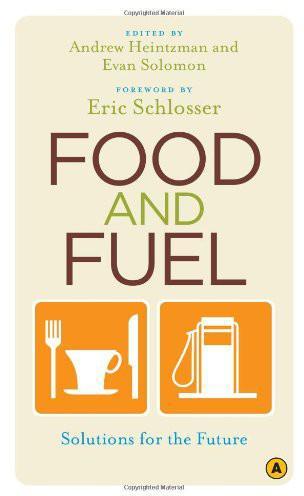
Food and Fuel: Solutions for the Future
by
Andrew Heintzman
,
Evan Solomon
and
Eric Schlosser
Published 2 Feb 2009
One way to resolve this problem is to apply the “precautionary principle,” a risk management tool which states that a lack of full scientific certainty should not be used as a reason for postponing decisions.56 The precautionary principle is written into the Treaty of Maastricht, and adopted by all member countries of the European Union. To avoid the risks posed by growth hormones, the EU applied the precautionary principle in its continuing ban on Canadian and American beef imports.57 Among most Canadian cattle producers, this use of the precautionary principle is perceived as a hypocritical pretext for a protectionist trade policy that discriminates against Canadian beef.
…
See also food industry; obesity Paley Commission on energy, 209 Peaster, Marwyn, 29 PepsiCo, 120, 125 Peru, 64, 65, 66 pesticides and herbicides, 12–13, 14, 99, 100, 120 Petro-Canada, 179 Philip Morris, 93, 128 Pioneer Hy-Bred Corn Company, 6 pipeline projects: in Arctic, 158–70; in China, 170–80; importance/implications of, 180–83 plants, patent and protection legislation governing, 95 plutonium, 190, 194, 197–98, 201–2, 203, 206 Pollan, Michael, 17, 120 portion sizes, 121–24, 141; in France, 124; Kraft’s promise to cut, 111, 133; and pricing incentives, 123–24 precautionary principle, 58–59, 60, 79 Process Inherent Ultimate Safe (PIUS) nuclear reactors, 205 Prusiner, Dr. Stanley, 40 Quebec, 31, 33, 292n52 Rancho Seco nuclear reactor (Sacramento), 231–32, 236 Reagan, Ronald, 105; energy policy of, 212, 310–11n5 renewable energy. See green/renewable energy risk management, and food safety, 30, 40–46, 48, 49, 53, 57–60; and precautionary principle, 58–59, 60 Royal Dutch Shell, 166, 178–79, 225–26, 271. See also Shell Canada Russia, 67, 174, 178, 179; nuclear energy in, 186, 194; nuclear waste in, 198, 203 Sacramento Municipal Utility District (SMUD), closure of nuclear facility, 231–32, 235; cool roof program, 233; economic value of, 233, 235; efficiency/renewables strategy of, 231–35; geothermal/biomass technology, 234; photovoltaic technology, 232, 233–34; tree planting, 232; wind turbine, 232 scarcity of food, as manufactured crisis, 83–84, 107–8.
…
To avoid the risks posed by growth hormones, the EU applied the precautionary principle in its continuing ban on Canadian and American beef imports.57 Among most Canadian cattle producers, this use of the precautionary principle is perceived as a hypocritical pretext for a protectionist trade policy that discriminates against Canadian beef. These trans-Atlantic differences illustrate polar opposites in the moral climate of politics described by Giddens. The precautionary principle has also been adopted by the Canadian Food Inspection Agency and by the Canadian government at large.58 Yet applying the principle to decision-making is challenging because there is no consensus in the public’s perception and tolerance of risk. Instead there is a broad plurality of risk preferences. Risk preference plurality poses a conundrum for policy-makers trying to discern whether “risk of serious harm” is truly credible.

Innovation and Its Enemies
by
Calestous Juma
Published 20 Mar 2017
First, the EU used its influence to persuade its trading partners to adopt similar regulatory procedures that embodied the precautionary principle. Second, the United States, Canada, and Argentina took the matter to the WTO for settlement in 2003.50 Under the circumstances, many African countries opted for a more precautionary approach partly because they had stronger trade relations with the EU and were therefore subject to diplomatic pressure. Their links with the United States were largely through food aid programs.51 In 2006, the WTO issued its final report on the dispute. Its findings were largely based on procedural issues and did not resolve the role of the “precautionary principle” in WTO law.52 Many developing countries started passing strict biosafety regulations even before the protocol was adopted.
…
This was a sign of the political momentum to find ways to curtail the adoption of transgenic crops. The EU, which served as a role model for developing countries, adopted a three-pronged approach: it sought to develop specific regulations, reinterpret the precautionary principle, and create a European Union Food Safety Agency. In 2003, the EU adopted stringent regulations concerning authorization procedures, labeling, and traceability of the sources of food components. It extended the precautionary principle from environmental protection to consumer and health protection. New provisions in the 2003 regulations explicitly included the principle of “consumer choice” via mandatory labeling and traceability; a formalization of the distinction between risk assessment, risk management, and risk communication; and public participation in risk communication.
…
For an outline of the elements of science and technology advice, see National Research Council, Knowledge and Diplomacy: Science Advice in the United Nations System (Washington, DC: National Academies Press, 2012), 13–20. 15. Calum G. Turvey and Eliza M. Mojduszka, “The Precautionary Principle and the Law of Unintended Consequences,” Food Policy 30, no. 2 (2005): 145–161. 16. Marc A. Saner, “An Ethical Analysis of the Precautionary Principle,” International Journal of Biotechnology 4, no. 1 (2000): 81–95. 17. Lisa F. Clark, “Framing the Uncertainty of Risk: Models of Governance for Genetically Modified Foods,” Science and Public Policy 40, no. 4 (2013): 486. 18.

The Irrational Economist: Making Decisions in a Dangerous World
by
Erwann Michel-Kerjan
and
Paul Slovic
Published 5 Jan 2010
The general idea is that ambiguity aversion reinforces risk aversion, rendering people more reluctant to undergo ambiguous risky acts. The same idea can be found in the debate about the precautionary principle. This principle has been discussed in various international forums, including the Conference of Rio on Environment and Development and the Maastricht Treaty. It states that “lack of full scientific certainty shall not be used as a reason for postponing cost-effective measures to prevent environmental degradation.” Indeed, the precautionary principle has widely been interpreted as a recommendation for reducing collective risk exposure in the presence of ambiguous probabilities.
…
The special problems of intergenerational equity (meaning all the future generations who will be affected by our actions today but who are not yet born) and irreversibility have been at the heart of the climate change debate, just as they were for disputes about radioactive waste. More generally, the “precautionary principle” and the sustainability debate overall has been focused on the central question of what it actually means for present generations to live in such a manner as to not disadvantage future generations. 4. Low-probability, high-consequence events: Added to the above are the continuing perplexities of risk management and mitigation associated with the low-probability, very high-consequence outcomes of climate change.
…
The bottom line is that there is no agreed-upon rule about how to evaluate long-term environmental risks and therefore no consensus yet about how to shape environmental policy. But this does not have to be the case. Recent advances have been made toward providing a unified scientific framework to evaluate and make policy recommendations regarding collective long-term risks. This progress puts a new light on concepts such as “sustainable development” and “precautionary principle,” increasing their suitability as efficient guidelines for collective decision making. The state-of-the-art methodology for evaluating an environmental project is based on a benefit-cost analysis in which the net present value of the future monetarized benefits is compared to the cost of the project.

A Hunter-Gatherer's Guide to the 21st Century: Evolution and the Challenges of Modern Life
by
Heather Heying
and
Bret Weinstein
Published 14 Sep 2021
The solution to the many problems laden in a hyper-novel world is not so simple. Instead, we embrace careful application of the Precautionary principle. When faced with a question of innovation, the Precautionary principle considers the risk of engaging in any particular activity, and recommends caution when the risk is high. In circumstances where the degree of uncertainty about the outcomes of a system is high—when it is not clear what negative effects might result if society engages in, say, carpentering corners or powering our electrical grid with nuclear fission reactors—the Precautionary principle suggests that changes to extant structures should be engaged in slowly, if at all.
…
There is an important parable to be invoked here, Chesterton’s fence, named for turn-of-the-20th-century philosopher and writer G. K. Chesterton, the man who first described it. Chesterton’s fence urges caution in making changes to systems that are not fully understood; it is thus a concept related to the Precautionary principle. Chesterton wrote this of a “fence or gate erected across a road”: The more modern type of reformer goes gaily up to it and says, “I don’t see the use of this; let us clear it away.” To which the more intelligent type of reformer will do well to answer: “If you don’t see the use of it, I certainly won’t let you clear it away.
…
Become someone who recognizes patterns about yourself. Hack your habits and your physiology. What stimulates you to eat? To exercise? To check social media? Understanding the patterns in your behaviors gives you a better chance of controlling those behaviors. Look out for Chesterton’s fence and invoke the Precautionary principle when messing with ancestral systems. Remember this: “just because you can, doesn’t mean you should.” Chapter 4 Medicine When Heather was young, she frequently got strep throat. As an adult, the strep disappeared, but she began getting laryngitis at least yearly, sometimes a few times a year.
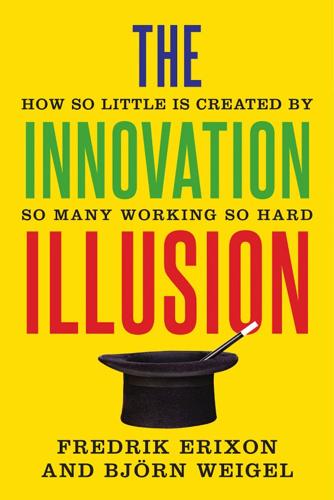
The Innovation Illusion: How So Little Is Created by So Many Working So Hard
by
Fredrik Erixon
and
Bjorn Weigel
Published 3 Oct 2016
That assertion may or may not be accurate, but what is clear is that regulatory complexity and uncertainty followed hard on the heels of the introduction of the precautionary principle in EU regulation. Such a principle is impossible to marry with the ambition of promoting an industrial culture of innovation and experimentation. “The reflex is to first look at a new product’s risks as opposed to its benefits,” making “technological progress almost impossible,” says one industry leader.5 The precautionary principle shifts the burden of proof by demanding that it is up to a producer to show that a product is not causing harm. Harvard professor Cass Sunstein calls it “literally paralyzing.”6 Science writer Ronald Bailey has summed it up: “Anything new is guilty until proven innocent.”7 Proving a negative is not just a philosophical challenge.
…
Harvard professor Cass Sunstein calls it “literally paralyzing.”6 Science writer Ronald Bailey has summed it up: “Anything new is guilty until proven innocent.”7 Proving a negative is not just a philosophical challenge. The precautionary principle prompts a regulatory culture that is unpredictable. It is difficult to know what needs to be done in order to be on the safe side of regulation and approval processes. It takes time and costs money. When regulations are ambiguous, regulators are often given flexibility on how to determine whether a product is cleared or not. The precautionary principle erases the scientific ethos that should guide regulatory conduct, and adds significant costs to innovation. Nanomaterials is another example.
…
A culture of permissionless innovation is rather based on clear proscriptive regulations that do not require innovators to ask for permission or apply for special licenses in order to put new products on the market. Europe’s precautionary principle is a case in point. It is an open-ended principle, enshrined in European law, and it gives every opportunity to charlatans with little regard for facts and science to block innovation and economic experimentation. Moreover, it gives incumbents, defending their product stock, opportunities to shield themselves from competitors. It is true that the precautionary principle is an extreme form of regulation because it causes widespread or systemic uncertainty, but similar approaches to new inventions also guide less extreme regulations.
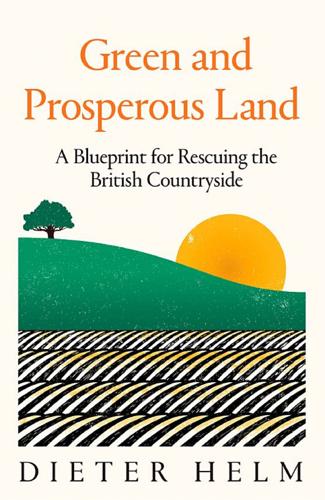
Green and Prosperous Land: A Blueprint for Rescuing the British Countryside
by
Dieter Helm
Published 7 Mar 2019
There needs to be net gain, because of the risks and safe limits, and hence the payments need to respect the precautionary principle. 9 PAYING FOR POLLUTION The provision of public goods is a public matter. So too is the prevention of harm. The polluter-pays principle says several things: that all costs should be taken into account in an efficient economy; and that those who do damage by their actions should pay those costs. There should be compensation, offsetting any damage. The net gain principle goes further: it states that we should be risk-averse and err on the side of overcompensation. It incorporates the precautionary principle, especially where renewable natural capital is involved and we don’t know precisely where the safe limits lie.
…
Abbots Hall Farm, Essex 143 Africa 1, 48, 55 agriculture: ammonia emissions from 88, 102, 153, 179, 223, 224 antibiotic use in 197, 216 average age of British farmer 89, 214, 217 carbon emissions from 82, 102, 104, 183, 197, 199, 200, 201, 214, 216, 223 cattle farming 62, 87, 99, 106, 107, 108, 119, 179, 264, 267 crops/arable farming see individual crop name cross-compliance and 97, 98, 251 digitalisation and 81, 96, 100 disaster of modern British, recognising the scale of 80 economics of British, 88–90 ‘enemies of’, elimination of 4–5 fertiliser use 22, 39, 43, 65, 80, 82, 86, 87, 94, 96, 100, 102, 119, 124, 163, 196–7, 200, 201, 216, 223, 243, 244, 253, 254 field margins 96–7, 251 food security/self-sufficiency as priority in 32, 99–102, 106, 182–4, 210 genetics and 4, 81, 95–6 green 79–104 herbicide use 4, 21, 22, 43, 44–5, 65, 83, 84, 85, 95, 96, 97, 100, 102, 124, 197, 199, 200, 201, 216, 223, 243 history of British intensification of 80 impact on farmers of a better agricultural sector and countryside 102–4 intensification of xii, 44, 58, 80–8, 93, 152, 211 land ownership and prices 8, 9, 11, 75, 89, 92–3, 102–3, 168, 190, 193, 198, 211–13, 214, 217–18 live export of animals 23, 101 Nature Fund and 219, 220, 221, 222, 223, 224, 225, 232–3, 239, 240 new sustainable and prosperous 93–7 organic 96–7, 119, 197, 223 pesticide use xii, 21, 22, 43, 45, 65, 82, 83, 84, 95, 96, 100, 102, 124, 197, 199, 200, 201, 216, 223, 243, 244 polluter-pays principle and 88, 95, 99–100, 101, 103, 104, 195, 196–8, 199, 201, 203–4, 205, 207, 210–14, 216, 217–18 pollution from xii, xiv, 4, 5–6, 8, 11, 19–21, 22, 23–4, 32, 39, 43–5, 56, 61, 62, 64–6, 74–8, 80, 81–2, 83, 84, 85, 86, 87, 88, 89–90, 94, 95, 96, 97, 99–100, 101, 102–4, 119, 123, 124, 128, 136, 163, 179, 180, 195–218, 223, 224, 242, 243, 244, 248, 251, 253, 254, 255 see also fertilisers, herbicides and pesticides public goods concept and 92–7, 98, 99, 102–4, 179, 181–4, 188, 189, 190–1, 192, 193, 194 run-off from 4, 5, 19–21, 22, 43–4, 61, 62, 64–6, 74, 76, 81, 85, 96, 123, 179, 180, 180, 196–8, 203–4, 205, 207, 216–17, 224, 242, 248, 251 slurry and 21, 22, 64–5, 74, 179, 180, 190, 203, 204, 205, 224 soils and see soils subsidies and xii, 2, 7, 8, 9, 10, 11, 12, 21, 22, 23, 34, 45, 62–3, 75, 76, 78, 79, 80, 81, 82, 87, 88–90, 95, 97, 100, 101, 102–4, 110–11, 118, 119–20, 122, 124, 126, 139, 183, 184, 188, 191, 195, 204, 205, 210–15, 217, 218, 219, 220–1, 226–7, 232, 234, 239, 241, 243, 244, 247, 253 see also subsidies tariffs and 87–8, 89, 102, 104 technology, future of and 5–7, 9, 80–1, 96, 100, 120, 223, 251, 263 25 Year Environment Plan and 241, 242, 243, 244, 245, 246–7, 248, 250, 251, 253, 255, 258 upland sheep farming 11, 21–2, 23, 33, 62–3, 64, 74, 87, 101, 106–7, 108, 110–11, 113, 119, 122, 124, 125, 183, 190, 210, 211, 217, 218, 264, 267 value of countryside for other uses and 90–3 wildlife corridors and 97–9 Agriculture Act (1947) 80 Agriculture Bill (2018) 103, 122, 232 agri-environment schemes 75, 111, 212, 220, 251, 257 AI (artificial intelligence) 230, 252–4, 255, 258 air pollution 18, 184, 264, 266 costs of 171 deaths linked to xiv, 154 evidence of improvements in air quality 39 farming and 44, 81, 88, 93, 96, 179, 255 future of 28, 219, 221, 246, 247, 249, 254, 255, 261, 262 green spaces and 24, 155, 156–8, 162, 167 green walls and 162 measuring 5, 28, 246, 254 Nature Fund and 219, 221 polluter-pays principle and 196, 199, 203, 215 technology and 154, 169, 254, 255 towns/cities and 152, 153–4, 155, 156, 157, 158, 162, 167, 169, 171 25 Year Environment Plan and 246, 247, 249, 254, 255, 261, 262 algae 32, 34, 68, 136, 156, 196, 216, 251 Alladale Wilderness Reserve, Scotland 108 Anthropocene 2 antibiotics 38, 68, 197, 216 aphids 84 arable weeds 44, 80, 85, 97 Area of Outstanding Natural Beauty (AONB) 63, 105, 117, 257 Asian hornet 147 avocet 133, 161 Bank of England 232, 240 barbed wire 124–5 barley 86 Barle, River 63 barn owl xi, 31, 85, 195 Batters, Minette 99 BBC xiv, 128, 176–7, 178, 224–5 beaches 4, 7, 17, 34, 127, 128, 129, 131–2, 136, 149, 184, 246 beaver 4, 8, 31, 108, 250 Beckton Sewage Treatment Works 20 bees 35, 83, 84, 85, 94, 170 Betjeman, John 166 Big Data 81, 251, 252, 254, 255 biofuels 101, 183 biophilia xiv, 160, 261 birds xv, 5, 8, 17, 20, 37, 42, 43, 61, 72, 80, 83, 84, 86, 87, 91, 97, 124, 129, 130, 132, 133, 134, 140, 158, 189, 204, 207, 217, 222, 243, 245, 252, 264 eggs, stealing 203, 205 farmland xi, 21, 32, 33, 44, 58, 85, 94, 107, 246, 250, 263 game 4, 34, 113–14, 115, 116 seabirds 34, 129, 137, 138–9, 142, 143, 144, 146–7, 149, 150, 156, 263 songbirds 39 upland 40, 119–20 urban 159–62, 164, 170, 185 wading 123 woodland 45 bittern 19, 161 Blackwater, River 134, 253 blanket bog 63 Bleaklow, Peak District 67 Blue Belt 145, 151 blue-fin tuna 137 Blue Flag system 131 Blue Planet II (TV series) xiv, 176–7 bracken 109, 123, 145 Brecklands 8, 183 brent geese xi, 253 Brexit 49, 92, 118, 220, 232, 243, 260 brownfield sites 46, 130, 159, 167, 170, 206 business rates 88, 89, 102, 213, 214 butterflies 17, 18, 91, 195, 207 buzzard 4, 40, 113, 115 Camel, River 134 Canvey Island 130, 159 Canvey Wick 159 carbon: budgets 13, 233, 249 emissions 28, 33, 41, 43, 51, 53, 58, 82, 83, 88, 89, 101, 102, 104, 154, 175, 183, 196, 197, 199, 200, 201, 202, 214, 216, 223, 224, 233 fuel taxes and 214 price 10, 89, 104, 175, 201, 202, 214, 216, 223 as private good 175 in soils 7, 184, 216, 246 stores 124, 133 tax 223, 224 Carboniferous age 1 Carbon Price Floor 89, 223 Carson, Rachel: Silent Spring 5 cattle farming 62, 87, 99, 106, 107, 108, 119, 179, 264, 267 cereal crops 5, 21, 39, 64, 85–6, 97, 101 Channel Islands 139 China 25, 55–6, 155 cirl bunting 40 Cley Marshes 133 climate change xiii–xiv, 6, 13, 33, 40, 44, 46, 56, 63, 74, 79, 82, 92, 133, 135, 158, 188–9, 219, 229, 230, 233, 234, 243, 249, 256, 258, 264 Climate Change Act (2008) 13, 233, 249, 258 Climate Change Committee 82, 234 coal 1, 42, 201 mining 42, 67, 68, 103, 111 power 153, 159, 201 Coal Authority 67 Coast (TV programme) 128 coasts 9, 19, 22, 29, 30, 32, 34, 43, 45–6, 127–51, 159, 185, 188, 206, 221, 241, 243, 245, 266 access to 128, 129, 130, 145–6, 149, 150 beaches and 4, 7, 17, 34, 127, 128, 129, 131–2, 136, 149, 184, 246 climate and 127–8, 136 coastal fringe 128–31 Coastal Green Belt 247 coastal paths 7, 128, 129–30, 145, 186, 189 coastal prize in 2050 150–1 coastal waters 135–9 eradication of alien species from islands 146–8 estuaries and 134–5 fishing and 24, 128, 133, 136–9, 141–5 habitat restoration 145–6 islands and 139–40, 146–8 marshes at the sea edges 132–3, 250, 253 Nature Fund and 221 pollution/waste and 32, 45–6, 67, 128, 131, 134–5, 136, 137, 138, 144, 148, 158, 204 ports and 130 public love of 127–8 returning to good health (and increasing prosperity) 140–50 tourism and 24, 91, 127, 128, 131, 139, 140, 148–50 wildlife corridors and 17, 129–32, 150, 186 cod 137, 142 colour, landscape and 17, 31, 32, 39, 87, 124, 163 Common Agricultural Policy (CAP) xii, 80 basic farm payment/land ownership and 89–90, 97, 103, 193, 212 cross-compliance and 97, 98, 251 economics of British farming and 88, 89, 90 food prices and 80, 97 Nature Fund and 220–1, 226, 232, 234–5, 239 NFU defence of 211 Pillar 1 payments 212 Pillar 2 payments 212–13, 232 pollution and 89, 204, 210–13 redirecting to provision of public goods 102–4, 191, 193, 212–13, 220–1, 226, 232, 234–5, 239, 241, 243, 244, 247 reforms, 2000 211–12 25 Year Environment Plan and 241, 243, 244, 247 upland farming economics and 45, 110–11, 126, 220–1 welfare state, as branch of 218 withdrawal from 217 Common Fisheries Policy (CFP) 142 commuting 54, 71, 169 compensation payments 10, 11, 42–3, 52, 88, 144–5, 166, 179, 185–6, 194, 195, 206–9, 213, 219, 225–6, 235 see also polluter-pays principle Conservative Party 50 consumption, rising xii, 47, 49, 55–6, 57, 199 corncrake 140 Cornwall 68, 12, 134 corvids 115 Cost of Energy Review (2017) 201 Country Land and Business Association (CLA) 166 Countryside Stewardship Facilitation Fund 98 crime, wildlife 33, 34, 113–14, 203, 204–5 see also individual area of crime crofting 139–40 cross-compliance 97, 98, 251 Crossrail 2 26, 27, 28, 53, 133, 208 Crown Estate 238, 250 cuckoo 3, 18, 37, 84 Cumbria river catchment 30–1, 257–8 curlew 17, 31, 36, 37, 185 Dartmoor 35, 105, 119 Dart, River 134 DDT (dichlorodiphenyltrichloroethane) 5, 40, 84, 96 declines 3, 8, 18–25, 27, 32, 39, 40, 42–6, 47, 74, 82, 83, 140, 156, 184, 185, 208, 264, 268 deer 33–4, 36, 106, 107, 108, 109, 110, 112, 115, 116, 119, 147, 190 DEFRA (Department for Environment, Food and Rural Affairs) 3, 76, 188, 219, 221, 232, 236, 266 ‘Heath and Harmony: The Future for Food, Farming and the Environment in a Green Brexit’ 232 Department for Business, Energy and Industrial Strategy (BEIS) 219 Department for Education (DfE) 219 Department of Health & Social Care (DHSC) 219 Devon 4, 145 diesel 88, 89, 102, 136, 153, 154, 179, 214, 223, 264 Dig for Victory 80, 183 digitalisation 26, 37, 41, 42, 54, 64, 81, 96, 100, 230 Dovey Estuary 134 economics: agriculture and see agriculture British farming’s 52, 62–3, 65–6, 67, 79–80, 87–90, 99–104 building a greener economy 59–171 see also agriculture; coasts; rivers; towns/cities and uplands consumption rates, rising 55–6 cost–benefit analysis xvi, 29, 31, 184, 186–9, 194 destruction of nature, economic progress and xiii–xiv, 5, 6–7, 8–9, 24–5, 38 see also agriculture; coasts; rivers; towns/cities and uplands externalities 179, 180, 182, 183, 194, 210 fossil fuel xii, 42–3, 154, 264 see also coal and oil investing in nature to increase prosperity xiii, xv, 7–9, 17, 21, 24–5, 26–7 see also agriculture; coasts; rivers; towns/cities and uplands measuring cost of lost environment 208–9 measuring economic output of natural world xvi, 2, 3, 9, 27–30, 34, 51, 55, 56, 88, 141, 148, 175–262, 264 see also agriculture; coasts; rivers; towns/cities and uplands natural capital loss as a price worth paying 38 Nature Fund and see Nature Fund option value 188 polluter-pays principle and see polluter-pays principle population growth and xii, 11, 44, 47–50, 52, 55, 58, 166, 183 public goods and see public goods short-term, inefficient 40, 77, 112, 157, 231, 234, 238, 256, 261 25 Year Environment Plan and see 25 Year Environment Plan electricity 26, 28, 53, 54, 71, 75, 76, 100, 101, 135, 153, 201, 215, 223, 245, 262, 268 endangered species 18, 185, 205, 243 Ennerdale 121 EnTrade 78 Environment Agency 63, 65, 73, 75, 76, 77, 78, 88, 133, 141, 190–1, 192, 220, 221, 232, 257, 258, 260 Environment, Food and Rural Affairs Select Committee 182 Environment Protection Agency, proposed 205, 260 Essex coast xi, 129, 132, 133, 143, 145 European Economic Community (EEC) 95 European Union (EU) 48, 87, 89, 92, 139, 141, 211, 243, 268 air quality and 153 Bathing Water Directives 131–2 Common Agricultural Policy (CAP) xii, 45, 75, 80, 88, 89, 90, 97, 102–3, 110–11, 126, 141, 191, 193, 204, 210–13, 217, 218, 220–1, 226, 232, 234, 239, 241, 243, 244, 247 Common Fisheries Policy (CFP) 142 Water Framework Directive 77, 242, 243 eutrophication 19, 196 Exmoor 87, 89, 105, 114, 119, 120, 123, 125–6, 129, 267 Exmoor Mires Project 63, 78, 125–6 Exe, River 63 extinctions xiv, 40, 123, 250 Farmers Weekly 95, 96, 199, 204 Farne Islands 139 Fens 25, 32, 33, 82, 90, 132 fertiliser 22, 39, 43, 65, 80, 82, 86, 87, 94, 96, 100, 102, 119, 124, 163, 196–7, 200, 201, 216, 223, 243, 244, 253, 254 field margins 96–7, 251 financial crisis (2007–8) xii, 56 fish: farms 22, 34, 37, 45, 46, 57, 138, 139, 140, 144–5, 151 pollution and 34, 64, 68 rivers and 61, 64, 68, 97 fishing: coastal waters and 128, 129, 133, 134, 135, 136–9, 140 destructive practices 9–10, 17, 22, 24, 34, 128, 135, 136–9, 140, 141–5, 151, 175, 264 long-term management of 34, 141–5 Marine Protected Areas and 7, 268 policy fit for purpose 141–5 regulatory body 248 role in British economy 2, 148 subsidies 142, 221 flea beetles 84 flooding: climate change and 44 coasts and 127, 133 farming practices and 63, 65, 66, 81 flood meadows and 30, 66 floodplains and 61, 73–4, 77 Green Belt and 167 housing, urban centres, roads and 73–4, 75, 153, 158 industrial legacy and 67 natural management of 8, 18, 30, 31, 35, 124, 220, 248, 260, 268 Nature Fund and 219, 220, 221 paying for pollution and 213 peat bogs and 62, 119, 124 public goods and 181, 184, 189, 191, 192 sewage systems and 71–2 system operator and 76, 77, 258 25 Year Environment Plan and 248, 257, 258, 260 upper rivers and 62 flowers 7, 33, 35, 83, 94, 97, 124, 140, 157, 162, 163, 164, 168, 169, 170, 217, 246–7, 263 flycatcher 3, 13, 35, 36, 37, 84, 185, 261 fly-tipping 205 food 2, 3, 22, 33, 258 cost of 56, 88, 90 intensification of production 80–1, 87 link between production and consumption 168 polluter-pays principle and 198, 199 public goods and 92, 93–4, 182–4, 193 security/self-sufficiency 32, 99–102, 106, 182–4, 210 soils and 33, 81–3 subsidies and 100–4, 210–13 see also subsidies uplands and 122 waste 160 ‘Food from Our Own Resources’ (White Paper, 1975) 80 footpaths 7, 92, 98, 99, 123, 130, 145, 149, 169, 170, 191 Forest of Bowland 63 Forest of Dean 160 forests 4, 33, 39, 63, 107, 108, 109, 110, 112, 117, 160, 175, 178, 179, 180, 196, 230, 238, 247, 250 Fowey, River 134 fox 108, 113, 115, 159, 253 Friends of the Seals 150 frog 35, 81, 85, 164 fuel xii, 101, 102, 154, 183, 213, 214, 217, 223, 264 fungicides 95 gamekeeper 113–14, 115, 203, 204 game shooting 4, 34, 101, 113–14, 115, 116, 183, 203, 204, 258 Garden Bridge, London 221 garden centres 170–1 gardens xi, xiv, 7, 23, 35, 43, 46, 71, 85, 139, 147, 155, 162–4, 165, 167, 170–1, 207 genetically modified (GM) crops 4, 95–6 genetics 4, 5, 81, 95–6, 230, 252 genomics 38, 252, 254 GlaxoSmithKline 69 globalisation, species 41 glyphosate 4–5, 44–5, 80, 84, 85, 86, 95, 217 golden eagle 4, 113, 123, 203 golden plover 17, 36, 123 goshawk 160 GPS 6, 96, 223 Grand Banks cod fishery 137, 142 grasses/grassland 5, 31, 39, 64, 65, 87, 119, 124, 152, 155–6, 163, 164, 253 Great Stink of London (1858) 19–20, 158 Green Belt 7, 10, 17, 37, 46, 47, 50, 51–2, 57, 117, 145, 150, 151, 165–70, 185, 207, 208, 209, 247, 263 Green Belt National Parks 169, 170 green bonds 235–6 green corridors 7, 31, 164–5, 186, 191, 234, 247, 250 see also wildlife corridors green prize 8, 9, 17–36 enhancements and 25–36 no more declines and 18–25 securing 263–8 green spaces 7, 8, 22, 23, 24, 35, 46, 153, 155–6, 161–5, 167, 169, 170, 178, 189, 206, 221, 230, 262, 268 grey wagtail 61 grey water storage 71, 74 Gross Domestic Product (GDP) xvi, 2, 3, 9, 34, 51, 55, 56, 88, 141, 148, 264 groundwater 19, 41, 67, 69, 70 grouse shooting 4, 33, 106, 113–14, 115, 116, 183, 190, 203, 204, 258 Gulf Stream 2, 127–8, 136 Gwent Levels 57 Haber-Bosch process 82 hay meadows 17, 109, 124, 125 heather 33, 113, 123–4 Hebrides 1, 139 hedgehog 35, 85, 139, 162, 163, 164, 170 hedgerows xii, 21, 31–2, 36, 79, 85, 90, 97, 98, 103, 109, 123, 124–5, 167, 169, 180, 191, 207, 210, 211 hen harrier 33, 36, 113–14, 120, 123, 185, 203, 205, 250 herbicides 4, 21, 22, 43, 44–5, 65, 83, 84, 85, 95, 96, 97, 100, 102, 124, 197, 199, 200, 201, 216, 223, 243 Heritage Lottery Fund 247 Highland Clearances 106, 139–40 hill farming 24, 80, 89, 101, 103, 217–18 Hill Farming Act (1946) 80 Hobhouse Report 116 housing xii, 3, 7, 9, 11, 35, 37, 46, 49, 50–2, 53–4, 55, 57, 58, 72–3, 75, 77, 117, 128, 155, 165, 166, 170, 185, 205–6, 207, 209, 225–6 house sparrow xi, 21, 160–1, 185, 252 HS2 3, 26, 27, 28, 29, 47, 57, 185, 186, 226 Humber, River 134 Hyde Park 155, 156–7, 160 hypothecation 202–3, 224, 225, 236, 239 immigration 48–50, 183 India 48, 55, 155 industrial policy xii, 67–9, 128, 203, 215 industrial pollution 19–21, 61, 67–9, 77, 138, 203, 215 Industrial Revolution 3, 19, 41, 136, 155, 160 infrastructure xii, 18–19, 24, 26, 28, 29, 35, 44, 47, 49, 50, 52–4, 55, 56, 57, 58, 72, 74, 75, 120, 125, 134, 152, 157, 165, 168–9, 170, 176, 185, 207, 215, 226, 245, 267 inheritance tax 88, 89, 213–14, 217 insects xv, 4–5, 18, 20, 21, 31, 32, 33, 36, 37, 42, 45, 58, 72, 83, 84–5, 86, 87, 94, 97, 112, 115, 119, 124, 129, 147, 160, 162, 168, 170, 189, 217, 222, 243, 245, 252 internet 28, 54, 177, 205 Isle of Arran 141–2 Isle of Man 139, 141 Isle of Skye 140 Isles of Scilly 139, 145, 147, 149 Japanese knotweed 148 kingfisher 61, 164 Kingsbrook 165 Knepp Castle 108, 197 Labour Party 50 Lake District 1, 35, 105, 111, 121, 122–3, 158 lakes 19, 30, 61, 70, 122–3, 216, 225 land development xii, 3, 6, 7, 9, 11, 20, 35, 37, 46, 47, 49, 50–5, 57, 58, 72–3, 75, 77, 78, 89, 117, 118, 121, 128, 155, 156, 157–8, 165–70, 185–6, 189, 205–9, 215, 216, 218, 225–6, 241, 245, 268 landfill 136, 159, 200 land ownership/prices 8, 9, 11, 89, 92–3, 100, 102–3, 106, 156, 165–70, 189–90, 193, 198, 212, 213, 214, 217, 268 Land Trust 236 lapwing xi, xii, 31, 185 Larkin, Philip: ‘Going, Going’ vii lemmings 253 live export of animals 23, 101 lobbyists 4–5, 13, 52, 54, 57, 84, 87, 101–4, 116, 143, 166, 221, 239, 258–9, 261 London 19–20, 29, 43, 47, 49, 73, 74, 142, 153, 155–6, 158, 159, 160, 161, 209, 221 see also individual place name London Wetland Centre 74, 159 Lundy 146 lynx 4, 108, 250 MacFarlane, Robert 98 Macron, Emmanuel 96 maize 5, 21, 62, 63, 65, 86, 250 Malta 84, 243 Manx shearwater 146, 150 marginal land 87, 103, 183, 210, 211, 214, 217–18, 250 marginal losses 57–8 Marine and Coastal Access Act (2009) 130 Marine Conservation Zones 145 Marine Protected Areas 7, 10, 143, 145, 151, 247, 268 Marlborough Downs 98 Marsh harrier 133 marshes xi, 17, 128, 129, 130, 132–3, 145, 149, 151, 181, 208, 215, 250, 253 mayflies 41 meadows 17, 30, 31, 45, 66, 79, 87, 103, 109, 124, 125, 167, 168, 169, 209, 246–7, 263, 264 mental health, nature and xiv, 5–6, 24, 25, 28, 34, 73, 162, 169, 171, 189, 254, 264 Mersey, River 20, 40, 158, 209 metaldehyde 85, 190 mining 20, 67, 68, 73, 111, 235 Ministry of Agriculture, Fisheries and Food (MAFF) 80 Ministry of Defence (MOD) 130 Ministry of Housing, Communities and Local Government (MHCLG) 219 Minsmere RSPB reserve 133 Mitchell, Joni: ‘Big Yellow Taxi’ vii, 57 molinia grass (Molinia caerulea) 124 Monsanto 95 moorland 33, 62, 67, 87, 103, 118, 119, 123–4, 180, 183, 190, 204, 210, 251, 258 M3 208 Muir, John 116 National Audit Office (NAO) 234 National Farmers’ Union (NFU) 80, 90, 99, 166, 182, 183, 211, 239, 258, 260 National Infrastructure Commission (NIC) 26, 44 National Parks xiv, 52, 105, 116–18, 121, 124, 125–6, 143, 169, 170, 178, 185, 220, 221, 234, 240, 241, 248, 257, 266, 267 National Parks Act (1949) 116–17 National Trust 117, 125, 130, 146, 177, 185, 192, 220, 221, 236, 237, 239 natural assets see individual asset name natural capital: acknowledgement of concept, lack of 265 aggregate measure of overall state of 41 categories/fundamental building blocks of 30, 41 see also individual category name definition of xiv, 2 enhancing/natural capital approach to management of environment 25–32 holding the line against further deterioration of 17, 18–25 maintenance 19, 24–32, 29, 119, 125, 156, 178, 184–5, 186, 187, 226, 234, 237–8, 246, 248, 259, 268 monitoring state of 250–5 Nature Fund and see Nature Fund NCC and xiv–xv see also Natural Capital Committee (NCC) as neo-liberal conspiracy 266–7 non-renewable 12, 42–3, 137, 205, 219, 228, 231, 235, 250 paying for pollution and 195, 198, 205, 206, 215 piecing together evidence for main categories of 41–2 public goods and 175, 176, 177, 178, 179–80, 181, 184, 185–6, 187, 188–9, 193, 194 renewable 12, 18, 28, 43, 69, 82–3, 123, 137, 140, 141, 142, 185, 195, 205, 206, 219, 228, 231, 235, 237, 245, 246, 250, 257 solutions see agriculture; coasts; rivers; towns/cities and uplands state of assets 245–8 25 Year Environment Plan and see 25 Year Environment Plan Natural Capital Committee (NCC) xi, xii, xiii, xiv–xv, 257 Natural Capital: Valuing the Planet (Helm) xv Natural England 75, 78, 185, 191, 221, 232, 248, 257, 258, 260 Natural Resources Wales 65 Nature Act 13, 258, 259 Nature Fund 12, 202–3, 209, 219–40, 241, 249, 254, 258 adding in the avoided subsidies beyond the CAP 226–7 adding in the net environmental gain compensation payments 225–6 adding in the value of pollution taxes 222–5 budget 234–6 deciding how to spend money 239–40 designing 231–4 green bonds and 235–6 looking after future generations and 228–31 owning assets 236–8 redirecting current spending 220–2 separating spending from revenues 227 nature, love of xiv, 160, 261 neonicotinoids 4–5, 82, 83, 84, 96, 217 net environmental gain principle 7, 11, 12, 46, 54, 149, 168–9, 186, 194, 202, 206, 208, 216, 218, 219, 225–6, 235, 244, 245, 258, 265 New Forest 117 New Naturalist 42 nitrates 123, 136, 152, 216 non-governmental organisations (NGOs) 42, 130, 239 non-renewable natural capital 12, 42–3, 137, 205, 219, 228, 231, 235, 250 North Sea 1, 12, 34, 133, 135, 137, 228, 235, 251 Norway 228–9, 231, 235 obesity xiv, 24, 28, 171, 264 Office for Budget Responsibility (OBR) 240 Office for National Statistics (ONS) 236, 240, 249, 257 OFWAT 75, 78 oil 3, 12, 42, 45, 136, 159, 219, 228, 231, 235 oilseed rape 5, 37, 83, 85, 86, 95, 101, 183, 198, 207 organic farming 96–7, 119, 197, 223 organochlorines 96 organophosphates 96 osprey 161 Otmoor 8 otter 40, 61 Ouse, River 31 owl xi, 85, 115, 195, 253 oxbow lakes 30, 61 Oxford–Cambridge Corridor 46 Oxford concrete canal 30–1, 220 Parish, Neil 182 parks, urban xiv, 7, 23, 25, 34, 46, 155–6, 160, 170, 185, 221, 250 Parrot, River 63 Peak District 67, 105, 123, 158 peat 22, 61, 62, 63, 67, 82, 118, 119, 124, 163, 164, 170, 189, 201, 235 Pennines 1, 47, 90, 105, 120 peregrine falcon 40, 84, 160, 161–2 pesticides xii, 21, 22, 43, 45, 65, 82, 83, 84, 95, 96, 100, 102, 124, 197, 199, 200, 201, 216, 223, 243, 244 pharmaceutical industry 43, 61, 68 pheasant 33, 101, 114–16, 119, 190 phosphates 4–5, 20, 22, 77, 96, 136, 198 Pickering, River 31 pigeon 159–60, 161 pine marten 40 Planet Earth (TV series) 3 planning 52, 54, 56, 73, 74, 75, 76, 86, 89, 117, 118, 144, 146, 157, 166, 168, 169, 207, 208, 209, 213, 245, 248 Planning Act (1947) 52, 208 plastics xii, xiv, 2, 4, 5, 17, 34, 43, 45, 56, 128, 131, 136, 150, 188, 196, 201, 244 taxing 200–1, 223, 244 pollinators 5, 6, 7, 18, 25. 84 polluter-pays principle 9, 10–11, 12, 22, 34, 56, 66, 67, 68–9, 74, 87–8, 99–100, 102, 103, 104, 114, 137, 170, 179, 195–218, 219, 220, 225, 241, 244, 245, 249, 258, 265, 266 developers, net environmental gain and 205–9 fines for pollution and 203–5 hypothecation or earmarking of revenues to specific green expenditure 202–3, 224–5 improvements that come from economics of 216–18 money raised from 202–3 Nature Fund and 202–3, 209 net gain environmental gain principle and 195, 205–9 precautionary principle and 83–4, 195 pricing 198–201 principle of 195–8 subsidies and 210–15 Poole Harbour 78, 191 population growth xii, 11, 44, 47–50, 52, 55, 58, 166, 183 Porlock Marshes, Somerset 133 potholes 24 power stations 53, 83, 109, 130, 135, 159, 186, 203 precautionary principle 11, 83–4, 142, 194, 195, 218 public goods 10, 12, 23–4, 58, 75, 92, 93, 95, 98, 99, 102, 103, 104, 112, 118, 119, 122–3, 124, 125, 126, 149, 167–8, 175–94, 195, 208, 210, 212, 217, 218, 232, 237, 241, 244, 247, 249, 258, 265, 266, 268 definition of 176–9 ecosystems and coordination 179–81 importance of, relative 181–4 Nature Fund and 232, 237 polluter-pays principle and 195, 208, 210, 212, 217–18 private interests and 189–93 public money for public goods principle 9, 103, 181–2, 189, 191, 193, 210, 217, 218, 232, 244, 247, 249, 258, 265, 266 richer and greener public spaces 193–4 spending, allocating 184–9 25 Year Environment Plan and 241, 244, 247, 249, 258 railway 3, 7, 8, 11, 17, 25, 29, 35, 37, 54, 80, 170, 206, 234 rats 146, 147, 150 Ray, River 8 Rebanks, James: The Shepherd’s Life 111 red deer 110, 112, 116 red kite 4, 21, 40, 161 red lists 18, 185 redshank 31 redstart 185 reed beds 19, 20, 72 re-introduction programs 4, 31, 108, 161, 250, 267 renewable energy 28, 37, 57, 89, 124, 135 renewable natural capital 12, 18, 28, 43, 69, 82–3, 123, 137, 140, 141, 142, 185, 195, 205, 206, 219, 228, 231, 235, 237, 245, 246, 250, 257 rewilding 2, 36, 45, 91, 106–10, 111, 119, 124, 140, 240, 267 Rhine, River 34, 136 rivers 9, 17, 264 access to 61, 169, 180, 181, 189, 191, 248 algae blooms and 196–7, 216–17, 251 biologically dead 40, 158 catchment system plan and operator 9, 74–8, 118, 190, 193, 240, 248, 259, 260, 266 climate change and 44 current spending on 220 estuaries 17, 20, 30, 74, 128, 134–5, 136, 138, 181, 186, 196, 208, 209, 215, 251, 253 eutrophication of 19, 196–7 farm pollution and 4, 5, 19–21, 22, 43–4, 61, 62, 64–6, 74, 76, 81, 85, 96, 123, 196–8, 203–4, 205, 207, 216–17, 224, 242, 248, 251 fish stocks and 138 flooding and 8, 30–1, 44, 61, 62–3, 65–6, 72–4, 75, 76, 77, 81, 181, 189, 190, 191, 192, 219, 220, 248, 253, 257, 260, 268 floodplains 61, 73–4, 77 fly life and 19, 41 housing/urban centres/roads and 72–4 industrial pollution and 19–21, 61, 67–9, 77 integrated management 7, 9, 19, 74–8, 118, 190, 193, 240, 248, 259, 260, 266 meanders 30, 61 National Parks and 118 natural capital approach to 30–2, 36, 61, 63, 76, 260, 268 Nature Fund and 220, 224–5, 240 oxbow lakes and 30, 61 polluter-pays principle and 9, 196–8, 203–4, 205, 207, 216–17 pollution of 4, 5, 19–21, 22, 43–4, 61, 62–9, 74, 76, 81, 85, 88, 96, 123, 132, 158, 181, 190, 191, 192, 196–8, 203–4, 205, 207, 216–17, 219, 220, 224, 225, 242, 244, 248, 251 public good concept and 180, 181, 185, 186, 188, 189, 190–1 recreation on 61, 73 restoring 61–78 sewage and 19–20, 23, 42, 61, 69, 76 soil erosion and 19, 191, 248 State of Nature Review and 248 upper rivers, protecting 62–3, 254–5 water abstractions from 43, 53, 61, 66, 70–1, 72, 73, 74, 75, 103, 220 water companies and see water companies water quality and 23, 28, 29, 43, 61, 63, 69–72, 158, 180, 190, 197–8, 220, 242, 253, 260 wildlife/biodiversity along 61, 97, 98, 165, 180, 189, 190, 191, 198 road verges 7, 8, 35 roads xii, xiv, 7, 8, 29, 35, 54, 215, 226 romantic art/literature 39, 91, 92 Roundup 44, 95 rowan 123 RSPB (Royal Society for the Protection of Birds) 42, 133, 165, 177, 185, 220, 221, 225, 236, 239 rubbish disposal 43, 69, 128, 131, 136, 150, 204 run-off 4, 5, 22, 62, 61, 65–6, 67, 72, 73, 74, 88, 123, 132, 158, 196, 207, 216, 224, 242, 251 St Agnes 139, 146 Salisbury Plain 238 salmon 222, 37, 40, 45, 46, 61, 135, 138, 139, 144, 252 sand eels 45, 46, 138, 139 schools 34, 99, 169–70, 171, 207, 247 Scotland 22, 105, 106, 108, 114, 131, 139–40, 203 Scots pine Caledonian forests 107 Scottish Environment Protection Agency (SEPA) 65 seabirds 34, 129, 130, 137, 138–9, 140, 142, 143, 144, 146, 147, 150, 263 sea eagle 4, 161 sea walls xi, 128, 132, 134, 143, 145, 151, 186 seas 1, 2, 4, 5, 128, 250 climate and 127–8 fishing and 17, 22, 135, 136–9, 141–5, 160 pollution of 4, 6, 34, 40, 45, 56, 68, 71, 128–9, 132, 136, 158, 205 returning to good health 140–50 rising levels 63, 74, 133, 134, 253 State of Nature Review and 248 Severn: Estuary 134, 135, 209 River 31 sewage 19–20, 23, 25, 34, 40, 43, 53, 61, 68, 69, 70, 71–2, 74, 75, 76, 128, 131, 132, 136, 155, 158, 180, 196, 197, 204, 264 sheep farming 11, 21–2, 23, 33, 62–3, 64, 74, 87, 101, 106–7, 108, 110–11, 113, 119, 122, 124, 125, 183, 190, 210, 211, 217, 218, 264, 267 Sheffield City Council 8, 23, 157 shellfish 24, 128, 135, 141–2, 143, 151 Shetland 139 Shiants 139, 146 shipping 45, 46, 127, 129, 136, 147, 148, 204, 205 shooting, game 4, 33, 34, 45, 101, 106, 112–16, 119, 183, 190, 203, 204, 205, 222, 258 silage 109, 124 silt 19, 21, 32, 43, 44, 63, 65, 66, 67, 74, 81, 88, 207 Sites of Special Scientific Interest (SSSIs) 75, 119, 130, 181, 185, 257 skylark xi, xii slug pellets 85, 163, 170 slurry 21, 22, 64–5, 74, 179, 180, 190, 203, 204, 205, 224 snake’s head fritillaries 31 snowy owl 253 soils 133, 217, 224, 242, 245, 247, 250 carbon in 7, 184, 216, 246 erosion/degradation and restoration of xiv, 4, 6, 18, 19, 21, 25, 32–3, 39, 41, 44, 61, 62, 63, 65, 81–3, 94, 96, 103, 123, 157, 163, 184, 189, 190, 191, 198, 207, 211, 216, 248, 250, 251, 264 Solway Firth 134, 253 Somerset Levels 63, 65 South Downs 1, 105, 117 South West Coast Path 128 South West Water 63, 78, 125–6 sovereign wealth funds 12, 228–9, 231, 233, 235 species protection 18–19 State of Nature Review 248 Steart Marshes 133 Stern, Nicholas: ‘Economics of Climate Change’ 229 Stour, River 134 subsidies: bidding for 191, 192 business rates and 88, 89, 102, 213, 214 Common Agricultural Policy (CAP) xii, 45, 75, 80, 88, 89, 90, 97, 102–3, 110–11, 126, 141, 191, 193, 204, 210–13, 217, 218, 220–1, 226, 232, 234, 239, 241, 243, 244, 247 Common Fisheries Policy (CFP) 142 cross-compliance and 97, 98, 251 farming xii, 2, 7, 8, 9, 10, 11, 12, 21, 22, 23, 34, 45, 62–3, 75, 76, 78, 79, 80, 81, 82, 87, 88–90, 95, 97, 100, 101, 102–4, 110–11, 118, 119–20, 122, 124, 126, 139, 183, 184, 188, 191, 192, 195, 204, 205, 210–18, 219, 220–1, 226–7, 232, 234, 239, 241, 243, 244, 247, 253 fishing 22, 142, 221 flood risk insurance and 73 focusing on public rather than private goods 7, 12, 23 102, 104, 118, 167, 168, 182, 184, 188, 191, 212–13, 216–18, 232 food and 100–4, 210–13 fuel duty and 214 improvements from removing 216–18 industrial policy and infrastructure and 215 inheritance tax and 88, 89, 213–14, 217 islands and 139 land ownership and 89–90, 97, 103, 193, 212 landowner subsidies and bird killing in the uplands 119–20 National Parks and 118, 221 Nature Fund and 220–2, 226–7, 232, 239 NFU defence of 182, 183, 211 pollution and 23, 77, 195, 204, 205, 210–18 rivers and 62–3, 73, 75, 76, 78 tourism and 34 25 Year Environment Plan and 241, 243, 247, 248, 253, 258 upland sheep farming and 11, 22, 23–4, 62–3, 106, 110–11, 118, 122, 124, 126, 211, 220–1, 267 zero subsidies concept 45 Surfers Against Sewage 34, 131 Sustainable Soils Alliance 81–2 swallow xi, 3, 13, 18, 35, 37, 47, 84, 185, 187, 195, 261 sweet vernal grass 31 swift 37, 47, 161, 182, 185 Taff, River 20 tariffs 87, 88, 89, 102, 104 Tarr Steps, Exmoor 125 Taw, River 134 taxes: farming and 23, 79, 80, 88, 89, 90, 95, 100, 102, 106 housing and 52 Nature Fund and 227, 234 pollution 12, 23, 199, 200, 202, 203, 210, 213–14, 215, 217, 222–5 public goods and 178, 179 selling land for development and 168 25 Year Environment Plan and 244, 253 technology: AI (artificial intelligence) 230, 252–4, 255, 258 aides destruction of nature 5–7, 80–1 air quality and 154, 169, 254, 255 farming and 5–7, 80–1, 96, 120, 223, 253 fishing and 136, 143, 144 pollution detection and 65, 251, 253, 254, 255 renewable energy 28, 37–8, 57, 89, 124, 135 routes to a greener world through 6–7, 9, 28, 65, 230–1, 251–5 25 Year Environment Plan and 251–5, 256 waste crime detection and 205 wastewater and sewage detection 69 Thames: Estuary 134, 186, 208 Gateway 20, 134–5, 208, 226 River 8, 20, 34, 40, 74, 98, 134–5, 136, 158, 186, 192, 203–4, 220 Tideway 20, 53, 74 Thames Water 159, 203–4 Thelwall Viaduct 158 ‘The Natural Choice’ (White Paper, 2011) xii–xiii, 13, 265–6 thrush 85, 163, 164, 170 tidal lagoons 128, 135, 209 toad 35, 164 Tone, River 63 Torridge, River 134 tourism 7, 24, 34, 55 agriculture and 90–3 coasts and 127, 128, 131, 133, 139, 140, 148–50 growth of countryside/nature 90–3 Nature Fund and 232 pollution and 222 public goods and 181, 190 rivers and 73 uplands and 111, 119, 120–1, 125 towns/cities 9, 10, 20, 22–3, 24, 29, 30, 31, 34–5, 46, 50, 51, 53, 58, 85, 98, 108, 129, 152–71 air pollution and 153–4, 155, 157, 167, 254 a biodiverse and green urban environment 170–1 coastal 129 green corridors in 164–5 greener streets and roofs 157–8, 170 green spaces in, new 161–5, 170 housing and see housing link with nature 152 natural capital solutions for 154–7 Nature Fund and 221 nature/wildlife in the 158–61 outer rings/Green Belt 165–70 parks, urban xiv, 7, 23, 25, 34, 46, 155–7, 160, 170, 185, 221, 250 rivers and 20, 30, 31, 72–4 State of Nature Review and 248 water quality in 153, 155, 158 tragedy of the commons 24, 137, 175 Treasury 10, 29, 77, 188, 218, 219, 220, 223–4, 226, 227, 229, 232, 247, 267 trees 33, 156, 190, 207, 212 cutting down 8, 23, 157 flood management and 30 planting 7, 10, 35, 157, 221 towns/cities and 7, 10, 160, 162, 170 uplands and 106, 107, 110 Tresco 147 turtle dove 18, 84, 243, 250 25 Year Environment Plan xv, 12–13, 28, 94, 118, 181, 184, 188, 222, 232, 233, 240, 241–62, 265, 266, 267–8 accounting basis and metrics 245–7 Big Data, GPS, genomics and 250–5, 258 embedding/delivery body 255–61 European and global dimensions 242–3 how the bits fit together 244–5 making governments stick to 261–2 prioritising within 247–8 revising 248–50 top-down plan, why we need a 242 Two Moors Way 98 Twyford Down 208 Tyne, River 138 Tyneside 74 United Utilities 63, 78 uplands 9, 17, 19, 21–2, 29, 30, 33–4, 39, 40, 43, 45, 62, 72, 98, 104, 105–26, 185, 188, 189, 191, 214, 240, 248, 264, 266, 267, 268 access to 105–6 birds in 4, 33, 36, 40, 45, 84, 106, 113–14, 115, 116, 119–20, 123, 160, 161–2, 183, 185, 190, 203, 204, 205, 250, 258 see also individual bird type deer and 33–4, 36, 106, 107, 108, 109, 110, 112, 115, 116, 119, 147, 190 game shooting and 4, 33, 34, 45, 101, 106, 112–16, 119, 183, 190, 203, 204, 205, 222, 258 managing for people and wildlife 123–6 National Parks and 116–18, 121 Nature Fund and 220–1 population 120–3 public benefits in 118–20 rewilding and 106–10 rivers and 62–3, 71–2 second home owners and 121 sheep farming and 11, 21–2, 23–4, 33, 62, 106–7, 110–11, 113, 119, 122, 182, 211, 212, 217, 218, 264, 267 State of Nature Review and 248 tourism and 120–1 trees and 106, 107, 110 25 Year Environment Plan and 241, 245, 248, 257 as wildlife refuge 21–2, 118–20, 123–6 visitor charge 125 volunteers 125, 147, 149, 150 wading birds 123 Wallasea Island 133, 143 walls: green 35, 162, 165, 170, 221 maintenance of 119, 123, 124–5, 167–8 sea xi, 128, 132, 133, 134, 135, 143, 145, 151, 186 stone 31, 103, 120, 123, 124–5, 167–8, 180 water quality/cleanliness xvi, 8, 264, 268 Blue Flag system/EU Bathing Water Directive and 131–2 farm pollution and xiv, 19, 23, 43–4, 63, 65–6, 72, 78, 81, 85, 88, 190, 191 future of 28, 220, 221, 222, 225, 242, 243, 244, 246, 247, 249, 253, 258, 260, 262 improvements in 39, 41, 43–4 industrial pollution and 19–20, 68–9 Nature Fund and 219, 220, 221, 222, 225 peat bogs and 63, 78, 119, 124, 125–6 polluter-pays principle and 196, 197–8, 199, 203–4, 207, 215 public goods concept and 181, 189, 190, 191 rivers and 23, 28, 29, 43, 61, 63, 69–72, 158, 180, 190, 197–8, 220, 242, 253, 260 towns/cities and 153, 155, 158 25 Year Environment Plan and 242, 243, 244, 246, 247, 249, 253, 258, 260, 262 wastewater and 69 water companies and see water companies water companies 181 cleanliness of water and xiv, 23, 63, 68, 69–72, 78, 81, 85, 88, 125–6, 190, 191, 197–8, 203–4, 215, 219, 220, 221, 222, 225, 242, 244, 253, 258, 260 Exmoor Mires Project and 63, 78, 125–6 farm pollution and xiv, 23, 63, 78, 81, 85, 88, 125–6, 190, 191 flood defences and 192 Forest of Bowland project 63 grey water system and 71 natural capital approach to river catchment system as a whole and 75–8 Nature Fund and 219, 220, 221, 222, 225 pharmaceuticals in water and 68 polluter-pays principle and 197–8, 203–4, 215 regulation of 75, 78 sewage and 71–2 25 Year Environment Plan and 242, 244, 253, 258, 260 water abstractions and 43, 53, 61, 66, 70–1, 72, 73, 74, 75, 103, 220 water bills and 20, 23, 75, 77, 78, 88, 131–2, 191 water leakage and 25, 61, 70–1, 74 water meadows 31, 66, 79, 103 weedkillers 163, 170 Wessex Water 78, 191 West Canvey Marsh 130 West Thurrock Lagoons 130, 159 wetlands 8, 74, 133, 159, 186, 234, 236, 237 wheat 86, 101 Wildfowl & Wetlands Trust 133 wildlife corridors 4, 7, 17, 31, 97–9, 118, 129, 150, 164–5, 167, 169–70, 180, 186, 191, 234, 247, 250 Wildlife Trusts 8, 75, 76, 125, 146, 177, 185, 192, 220, 221, 225, 236, 237 Wilson, E.
…
Can this damage be squared with enhancing the natural environment? Only if there is compensation over and above the damage to the natural environment elsewhere. This is the net environmental gain principle: any damage must result in not just offsetting it, but by a positive margin. The positive margin is the precautionary principle in action. Money is currently spent in silos, notably the agricultural subsidies. Winning the prize, and making sure we hang on to it, requires cementing the money into a comprehensive and integrated framework. Chapter 10 sets out how to do this within a Nature Fund. This acts a bit like sovereign wealth funds do for oil- and gas-producing countries.
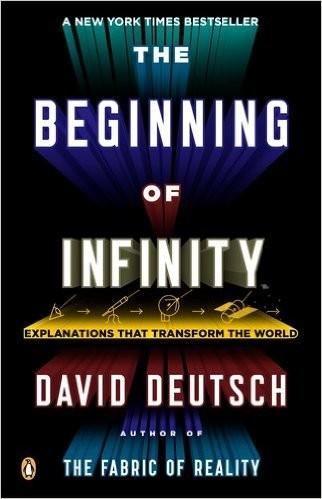
The Beginning of Infinity: Explanations That Transform the World
by
David Deutsch
Published 30 Jun 2011
Pessimists believe that the present state of our own civilization is an exception to that pattern. But what does the precautionary principle say about that claim? Can we be sure that our present knowledge, too, is not riddled with dangerous gaps and misconceptions? That our present wealth is not pathetically inadequate to deal with unforeseen problems? Since we cannot be sure, would not the precautionary principle require us to confine ourselves to the policy that would always have been salutary in the past – namely innovation and, in emergencies, even blind optimism about the benefits of new knowledge? Also, in the case of our civilization, the precautionary principle rules itself out. Since our civilization has not been following it, a transition to it would entail reining in the rapid technological progress that is under way.
…
If we did not expect progress, why should we expect the new leader or policy, chosen by whatever method, to be any better than the old? On the contrary, we should then expect any changes on average to do as much harm as good. And then the precautionary principle advises, ‘Better the devil you know than the devil you don’t.’ There is a closed loop of ideas here: on the assumption that knowledge is not going to grow, the precautionary principle is true; and on the assumption that the precautionary principle is true, we cannot afford to allow knowledge to grow. Unless a society is expecting its own future choices to be better than its present ones, it will strive to make its present policies and institutions as immutable as possible.
…
The defenders of hereditary monarchy doubted that any method of selection of a leader by means of rational thought and debate could improve upon a fixed, mechanical criterion. That was the precautionary principle in action, and it gave rise to the usual ironies. For instance, whenever pretenders to a throne claimed to have a better hereditary entitlement than the incumbent, they were in effect citing the precautionary principle as a justification for sudden, violent, unpredictable change – in other words, for blind optimism. The same was true whenever monarchs happened to favour radical change themselves.

Who’s Raising the Kids?: Big Tech, Big Business, and the Lives of Children
by
Susan Linn
Published 12 Sep 2022
A society that values public health over profits could invoke the precautionary principle to prevent companies from marketing potentially harmful products and practices. The precautionary principle is a guide to societal decision-making rooted in that old adage “look before you leap.” It acknowledges that innovation in science and technology proceeds faster than does an understanding of the ecological, public health, and humanitarian consequences of the inventions it spawns. Employing the precautionary principle allows science-based public health concerns to influence how or whether a product or practice can be used. The precautionary principle has been officially adopted by the European Union and various international agreements, but by not the United States.14 The United Nations Education, Science and Culture Organization (UNESCO) recommends invoking the precautionary principle “when human activities may lead to morally unacceptable harm that is scientifically plausible but uncertain” and advises that “actions shall be taken to avoid or diminish that harm.”15 UNESCO identifies as “morally unacceptable” harm that threatens human life or health, is irreversible, is in potential violation of human rights, or is unfair—including harm to future generations.
…
The precautionary principle has been officially adopted by the European Union and various international agreements, but by not the United States.14 The United Nations Education, Science and Culture Organization (UNESCO) recommends invoking the precautionary principle “when human activities may lead to morally unacceptable harm that is scientifically plausible but uncertain” and advises that “actions shall be taken to avoid or diminish that harm.”15 UNESCO identifies as “morally unacceptable” harm that threatens human life or health, is irreversible, is in potential violation of human rights, or is unfair—including harm to future generations. The precautionary principle has been invoked primarily to prevent environmental degradation or physical harm to humans.
…
For another, while the body of research available on young children and digital technologies is growing, it’s still in its early stages. Basically, we have two choices. One is to acknowledge that research is incomplete, so we tell parents not to worry about young children’s time with tech until there’s robust research suggesting harm. Another is to employ the precautionary principle. We acknowledge that the research is incomplete, but we urge parents to limit young children’s exposure to tech until there is robust research suggesting that it’s beneficial, or at least harmless. When it comes to children’s health and wellbeing, the latter makes more sense to me. That’s why I think the most useful recommendations based on available research come from the international pediatric public health community.1 Around the world, pediatric public health organizations are in near universal agreement that it is best to avoid screen time for babies and toddlers and to limit time for preschoolers to less than an hour a day.
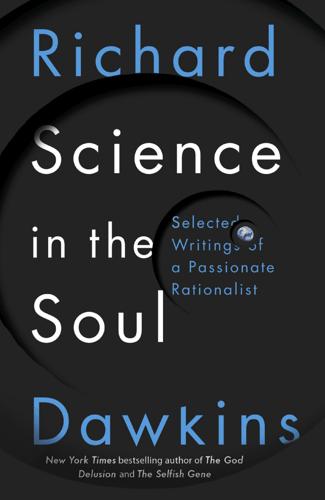
Science in the Soul: Selected Writings of a Passionate Rationalist
by
Richard Dawkins
Published 15 Mar 2017
I’d call your attention especially to the subtitle: Science as a Candle in the Dark. AFTERWORD One important principle which I should have mentioned by name in my letter to Prince Charles is the precautionary principle. He is certainly right that, where new and untried technologies are concerned, we should lean towards the conservative. If something is untried and we don’t know the consequences, it behoves us to err on the side of caution, especially where long-term futures are at stake. It is the precautionary principle that requires apparently promising new cancer drugs to jump through hoops and over hurdles before being certified for general use. Such risk-averse hurdles can reach ludicrous heights, as when patients who are already at death’s door are denied access to experimental drugs which just might save their lives but which have yet to be certified as ‘safe’.
…
Such risk-averse hurdles can reach ludicrous heights, as when patients who are already at death’s door are denied access to experimental drugs which just might save their lives but which have yet to be certified as ‘safe’. Terminal patients have a different conception of ‘safe’. But in general it is hard to deny the wisdom of the precautionary principle, sensibly balanced against the huge advantages that scientific innovation can bring. While I’m on the precautionary principle, please forgive a digression into contemporary politics. Normally I would fight shy of up-to-the-minute currency, for fear of anachronizing future editions of a book. J. B. S. Haldane’s and Lancelot Hogben’s otherwise admirable writings of the 1930s are marred by political barbs that are obtrusively incomprehensible today.
…
For the sake of short-term political manoeuvring within his own party, David Cameron played Russian roulette with the long-term future of his country, of Europe, even of the world. And so, to the precautionary principle. The referendum was about a major change, a political revolution whose pervasive effects would persist for decades if not longer. A huge constitutional change, the sort of change where, if ever, the precautionary principle should have been paramount. When it comes to constitutional amendments, the United States requires a two-thirds majority in both houses of Congress followed by ratification by three-quarters of the state legislatures.
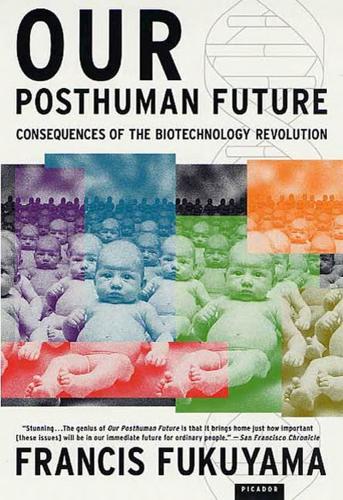
Our Posthuman Future: Consequences of the Biotechnology Revolution
by
Francis Fukuyama
Published 1 Jan 2002
Bryan, “Regulation of Genetically Modified Organisms in the European Union,” American Behavioral Scientist 44 (2000): 378–434; and Marsha Echols, “Food Safety Regulation in the EU and the US: Different Cultures, Different Laws,” Columbia Journal of European Law 23 (1998): 525–543. 9 The 1990 directives do not mention the precautionary principle, but their language is not inconsistent with it. The first explicit mention of the precautionary principle is made in the Maastricht Treaty of 1992. See MacKenzie and Francescon (2000). See also Jonathan H. Adler, “More Sorry Than Safe: Assessing the Precautionary Principle and the Proposed International Biosafety Protocol,” Texas International Law Journal 35, no. 2 (2000): 173–206. 10 Patterson, in Wallace and Wallace (2000), pp. 324–328. 11 World Trade Organization, Trading into the Future, 2d ed., rev.
…
The Europeans regarded adoption of the Cartagena Protocol as a victory for the precautionary principle; it will come into force when it is ratified by fifty countries.13 The United States cannot sign the protocol because it is not a party to the parent Convention on Biological Diversity (the so-called Rio Treaty), though as the largest exporter of GMO products, it may be forced to abide by the protocol’s provisions.14 The regulatory regime surrounding agricultural biotechnology has been extremely controversial, with the biggest fights occurring between the United States and the EU.15 The United States has not accepted the precautionary principle as a risk standard, arguing instead that the burden of proof must lie with those who claim that safety or environmental harms exist, rather than with those who claim they do not.16 The United States has also opposed the mandatory labeling of GMOs, since labeling requirements force an expensive separation of the GMO and non-GMO food processing chains.17 The United States is particularly concerned that the Cartagena Protocol may undermine the WTO’s SPS provisions and provide a legal basis for restrictions on imports of GMO products that are not scientifically based.
…
In 1990 it issued two directives, the first on the contained use of genetically modified microorganisms (Directive 90/219), and the second on the deliberate release into the environment of genetically modified organisms (Directive 90/220).8 These directives laid the groundwork for evaluating new biotech products on the basis of a “precautionary principle,” which asserts in effect that products should be presumed guilty until proven innocent of potentially threatening the environment or public health.9 These were supplemented in 1997 by Regulation 97/258, which required the labeling of so-called novel food. A further directive on GMOs was adopted by the EU Council of Ministers, requiring strict oversight and labeling of biotech products, tightening up the constraints imposed by earlier legislation.

100 Plus: How the Coming Age of Longevity Will Change Everything, From Careers and Relationships to Family And
by
Sonia Arrison
Published 22 Aug 2011
Table of Contents Also by Sonia Arrison Title Page Dedication Foreword CHAPTER 1 - Humankind’s Eternal Quest for the Fountain of Youth IT’S OUR FAULT OVERCOMING DEATH, IMAGINING TRAGIC RESULTS FIGHTING DEATH CHAPTER 2 - How Science and Technology Will Increase Life Span REDEFINING OLD AGE SCIENCE FICTION BECOMING REALITY LEARNING FROM SALAMANDERS MANIPULATING CELLS MANIPULATING GENES THE PLASTICITY OF AGING THE SEARCH FOR AN ANTIAGING PILL GREATEST ENGINEERING PROJECT OF ALL TIME CHAPTER 3 - Mother Nature and the Longevity Revolution THE EARTH’S ABILITY TO HANDLE LONGER-LIVED HUMANS MODELING POPULATIONS WITH LONGER LIVES WHY THOMAS MALTHUS WAS WRONG OLDER, RICHER, AND CLEANER NEXT STEPS PRECAUTIONARY PRINCIPLE VERSUS INNOVATION CHAPTER 4 - The Longevity Divide NATURE AND HUMANITY THE PRUDENCE OF AUGMENTING NATURE THREAT OF EUGENICS? RESOURCE USE AND SOCIAL JUSTICE HUMAN RIGHTS, GENETIC WARFARE, AND ECONOMIC DIVIDES INNOVATION, EXPONENTIAL GROWTH, AND DISTRIBUTION OF TECHNOLOGY WOULD OUR ANCESTORS HAVE WANTED TO LIVE LONGER?
…
Some even see a day when tiny and intelligent nano robots, or “nano-bots,” would be able to self-replicate and pose a danger to all life on earth. This leads us then to an important question: is nanotech the coal of the second industrial revolution, and could its use lead to greater destruction than we have ever seen before? PRECAUTIONARY PRINCIPLE VERSUS INNOVATION Perhaps the most famous critic of nanotechnology is Bill Joy, a cofounder and former chief scientist of Sun Microsystems. In a Wired magazine article in 2000, Joy worried that “we are being propelled into a new century with no plan, no control, no brakes.” Specifically, he worried about robots, engineered organisms, and nano-bots that can self-replicate.
…
They recommended six steps to evaluate the safety of nanomaterials: describing the materials and applications; profiling life cycles; evaluating risks; assessing risk management techniques; deciding, documenting, and acting; and reviewing and adapting.70 Essentially, the plan comprises examining the facts, implementing fixes where necessary, and continuing to monitor the situation. This type of strategy is a good middle ground between being overly cautious and not monitoring the technology at all. Some activists, however, have rejected such reasonable methods of action, instead preferring to invoke an idea called the “precautionary principle,” which essentially states that unless industry can prove with 100 percent certainty that a product is safe, then it can’t be produced or sold. This principle might sound good in theory, but it can never be fulfilled because there are many variables involved with product safety and problems often don’t present themselves in obvious ways.

Skin in the Game: Hidden Asymmetries in Daily Life
by
Nassim Nicholas Taleb
Published 20 Feb 2018
And of course ecocide, the irreversible destruction of our environment, is the big one to worry about. To use the ergodic framework: my death at Russian roulette is not ergodic for me but it is ergodic for the system. The precautionary principle, as I formulated with a few colleagues, is precisely about the highest layer. About every time I discuss the precautionary principle, some overeducated pundit suggests that “we take risks by crossing the street,” so why worry so much about the system? This sophistry usually causes a bit of anger on my part. Aside from the fact that the risk of being killed as a pedestrian is less than one in 47,000 years, the point is that my death is never the worst-case scenario unless it correlates to that of others.
…
It also classifies risks in layers (from the individual to the collective) and manages to prove that courage and prudence are not in contradiction provided one is acting for the benefit of the collective. It explains ergodicity, which was left hanging. Finally, the chapter outlines what we call the precautionary principle. Appendix: Asymmetries in Life and Things TABLE 2 • ASYMMETRIES IN SOCIETY WHERE WE LEFT OFF IN ANTIFRAGILE NO SKIN IN THE GAME SKIN IN THE GAME SKIN IN THE GAME OF OTHERS, OR SOUL IN THE GAME (Keeps upside, transfers downside to others, owns a hidden option at someone else’s expense) (Keeps his own downside, takes his or her own risk) (Takes the downside on behalf of others, or for universal values) Bureaucrats, policy wonks Citizens Saints, knights, warriors, soldiers Consultants, sophists Merchants, businessmen Prophets, philosophers (in the pre-modern sense) Large corporations with access to the state Artisans Artists, some artisans Corporate executives (with suit) Entrepreneurs Entrepreneurs/Innovators Scientists who play the system, theoreticians, data miners, observational studies Laboratory and field experimenters Maverick scientists who take risks with conjecture at distance from common beliefs Centralized government Government of city-states Municipal government Copy editors Writers, (some) editors Real writers Journalists who “analyze” and predict Speculators Journalists who take risks and expose frauds (powerful regimes, corporations), rebels Politicians Activists Dissidents, revolutionaries Bankers Hedge fund traders (They would not engage in vulgar commerce) Seeks awards, prizes, honors, ceremonies, medals, tea with the Queen of England, membership in academies, handshake with Obama Highest—even only—award is death for one’s ideas or positions: Socrates, Jesus, Saint Catherine, Hypatia, Joan of Arc Book 2 * * * A FIRST LOOK AT AGENCY Chapter 1 Why Each One Should Eat His Own Turtles: Equality in Uncertainty Taste of turtle—Where are the new customers?
…
The entire fifty-nine minutes were summarized by the press and reported from a tangential comment that lasted twenty seconds taken in reverse of the intended meaning. Someone who didn’t attend the conference would have been under the impression that that was the whole conversation. It turned out that I presented my version of the precautionary principle during the conversation, worth restating here. It asserts that one does not need complex models as a justification to avoid a certain action. If we don’t understand something and it has a systemic effect, just avoid it. Models are error-prone, something I knew well with finance; most risks only appear in analyses after harm is done.

Super Thinking: The Big Book of Mental Models
by
Gabriel Weinberg
and
Lauren McCann
Published 17 Jun 2019
In 2012, the European Union adopted the precautionary principle formally with the Treaty on the Functioning of the European Union: Union policy on the environment shall aim at a high level of protection taking into account the diversity of situations in the various regions of the Union. It shall be based on the precautionary principle and on the principles that preventive action should be taken, that environmental damage should as a priority be rectified at source and that the polluter should pay. On an individual level, the precautionary principle instructs you to take pause when an action could possibly cause you significant personal harm.
…
You need to find the right balance between preserving optionality and path dependence. One model that can help you figure out how to strike this balance in certain situations is the precautionary principle: when an action could possibly create harm of an unknown magnitude, you should proceed with extreme caution before enacting the policy. It’s like the medical principle of “First, do no harm.” For example, if there is reason to believe a substance might cause cancer, the precautionary principle advises that it is better to control it tightly now while the scientific community figures out the degree of harm, rather than risk people getting cancer unnecessarily because the substance has not been controlled.
…
Be careful when basing rewards on measurable incentives, because you are likely to cause unintended and undesirable behavior (Goodhart’s law). Short-termism can easily lead to the accumulation of technical debt and create disadvantageous path dependence; to counteract it, think about preserving optionality and keep in mind the precautionary principle. Internalize the distinction between irreversible and reversible decisions, and don’t let yourself succumb to analysis paralysis for the latter. Heed Murphy’s law! 3 Spend Your Time Wisely POLARIS IS THE BRIGHTEST STAR in the Little Dipper, a constellation also known as Ursa Minor, or Little Bear.

Private Empire: ExxonMobil and American Power
by
Steve Coll
Published 30 Apr 2012
After 2000, a new idea arrived from Europe to challenge the assumptions of the risk analysis school: the precautionary principle. The idea can be traced to West German environmental regulations enacted during the 1970s on the basis of Vorsorge, or “precaution.” Advocates of the precautionary principle argued that in cases where damage to society or people might be severe and irreversible, preventive action should be taken up front, even if there were important uncertainties about the relevant science. Although “it sounds like common sense . . . in fact, the precautionary principle poses a radical challenge to business as usual in a modern, capitalist, technological civilization,” author Michael Pollan has noted.
…
It required a knowledgeable and careful regulator or congressperson to hold in mind the distinctions among different phthalates. In Europe, the precautionary principle won out. Although a European Chemicals Bureau study found that “no risk reduction” was required for DINP, in 2005, the European Union nonetheless banned the compound from children’s toys that could be placed in the mouth. “Politics, not science, is the reason,” the ExxonMobil PowerPoint slides circulated in Washington complained. “Politics,” however, was in fact a synonym for the rise of the precautionary principle as a popularly supported basis of chemical regulation in Europe—and there was little reason to believe that philosophy would remain sequestered there.10 American environmental and public interest health groups had discovered that it was easiest to import European regulations inspired by the precautionary principle into the United States by starting first in the legislatures of more liberal states—California and Vermont, for example.
…
“Politics,” however, was in fact a synonym for the rise of the precautionary principle as a popularly supported basis of chemical regulation in Europe—and there was little reason to believe that philosophy would remain sequestered there.10 American environmental and public interest health groups had discovered that it was easiest to import European regulations inspired by the precautionary principle into the United States by starting first in the legislatures of more liberal states—California and Vermont, for example. The City of San Francisco formally adopted the precautionary principle as a framework for local regulations in 2003. The city’s environmental regulators “discovered Europe has banned chemicals that the U.S. had not,” a city environmental regulator recalled. “We said, ‘If other governments have taken precautionary actions, then we can take that action as well.’”
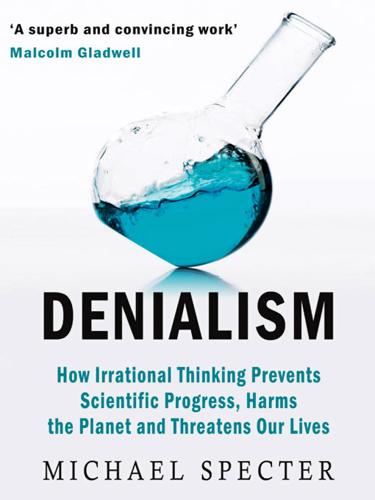
Denialism: How Irrational Thinking Hinders Scientific Progress, Harms the Planet, and Threatens Our Lives
by
Michael Specter
Published 14 Apr 2009
Fresco has written often and revealingly about issues of food security in the developing world. See particularly her report, last updated in 2007, Biomass, Food & Sustainability: Is There a Dilemma? (www.rabobank.com/content/images/Biomass_food_and_sustainability_tcm43-38549.pdf). There are many discussions of the “precautionary principle,” fear, and the idea of risk. Four stand out to me: Cass Sunstein’s Laws of Fear: Beyond the Precautionary Principle (Cambridge University Press, 2005); Lars Svendsen’s A Philosophy of Fear (Reaktion Books, 2008); Peter L. Bernstein’s Against the Gods: The Remarkable Story of Risk (Wiley, 1996); and Leonard Mlodinow’s The Drunkard’s Walk: How Randomness Rules Our Lives (Pantheon, 2008). 4.
…
Francis Bacon recognized the answer to that question four hundred years ago. “It would be an unsound fancy and self-contradictory to expect that things which have never yet been done can be done except by means which have never yet been tried,” he wrote in The New Organon. I wonder what he would have made of the “precautionary principle,” which holds that potential risks, no matter how remote, must be given more weight than any possible benefit, no matter how great. Without accepting some risk we would never have had vaccines, X-rays, airplanes, or antibiotics. Caution is simply a different kind of risk, one that is even more likely to kill people.
…
“If the society that powered this technology collapses in some way we would go extinct pretty quickly. You wouldn’t have a chance to revert back to the farm or to the prefarm. We would just be gone.” Those fears have existed since we began to transplant genes in crops. They are the principal reason why opponents of genetically engineered food invoke the precautionary principle, which argues that potential risks must always be given more weight than possible benefits. That is certainly the approach suggested by people like Thomas of ETC, who describes Endy as “the alpha Synthusi ast.” But he added that Endy was also a reflective scientist who doesn’t discount the possible risks of his field.

Our Final Invention: Artificial Intelligence and the End of the Human Era
by
James Barrat
Published 30 Sep 2013
Responsible scientists who are charged with developing these defenses would not have access to the tools to do that. And it would actually be more dangerous.” Kurzweil is criticizing what’s called the Precautionary Principle, a proposition that came out of the environmental movement, which, like relinquishment, is a straw man in this conversation. But it’s important to spell out the principle, and see why it doesn’t carry weight. The Precautionary Principle states, “If the consequences of an action are unknown but judged by some scientists to have even a small risk of being profoundly negative, it’s better to not carry out the action than risk negative consequences.”
…
LIDA (Learning Intelligent Distributed Agent) Lifeboat Foundation Lipson, Hod Loebner, Hugh Lynn, William J., III Machine Intelligence Research Institute (MIRI) Singularity Summit machine learning Madoff, Bernie malware Mazzafro, Joe McCarthy, John McGurk, Sean military battlefield robots and drones DARPA, see DARPA energy infrastructure and nuclear weapons, see nuclear weapons Mind Children (Moravec) Minsky, Marvin Mitchell, Tom mobile phones see also iPhone Monster Cat Moore, Gordon Moore’s Law morality see also Friendly AI Moravec, Hans Moravec’s Paradox mortality, see immortality mortgage crisis Mutually Assured Destruction (MAD) nano assemblers nanotechnology “gray goo” problem and natural language processing (NLP) natural selection Nekomata (Monster Cat) NELL (Never-Ending-Language-Learning system) neural networks neurons New Scientist New York Times Newman, Max Newton, Isaac Ng, Andrew 9/11 attacks Normal Accidents: Living with High-Risk Technologies (Perrow) normalcy bias North Korea Norvig, Peter Novamente nuclear fission nuclear power plant disasters nuclear weapons of Iran Numenta Ohana, Steve Olympic Games (cyberwar campaign) Omohundro, Stephen OpenCog Otellini, Paul Page, Larry paper clip maximizer scenario parallel processing pattern recognition Pendleton, Leslie Perceptron Perrow, Charles Piaget, Jean power grid Precautionary Principle programming bad evolutionary genetic ordinary self-improving, see self-improvement Rackspace rational agent theory of economics recombinant DNA Reflections on Artificial Intelligence (Whitby) resource acquisition risks of artificial intelligence apoptotic systems and Asilomar Guidelines and Busy Child scenario and, see Busy Child scenario defenses against lack of dialogue about malicious AI Precautionary Principle and runaway AI Safe-AI Scaffolding Approach and Stuxnet and unintended consequences robots, robotics Asimov’s Three Laws of in dangerous and service jobs in sportswriting Rosenblatt, Frank Rowling, J.
…
The Precautionary Principle states, “If the consequences of an action are unknown but judged by some scientists to have even a small risk of being profoundly negative, it’s better to not carry out the action than risk negative consequences.” The principle isn’t frequently or strictly applied. It would halt any purportedly dangerous technology if “some scientists” feared it, even if they couldn’t put their finger on the causal chain leading to their feared outcome. Applied to AGI, the Precautionary Principle and relinquishment are nonstarters. Barring a catastrophic accident on the way to AGI that would scare us straight, both measures are unenforceable. The best corporate and government AGI projects will seek the competitive advantage of secrecy—we have seen it already in stealth companies. Few countries or corporations would surrender this advantage, even if AGI development were outlawed.
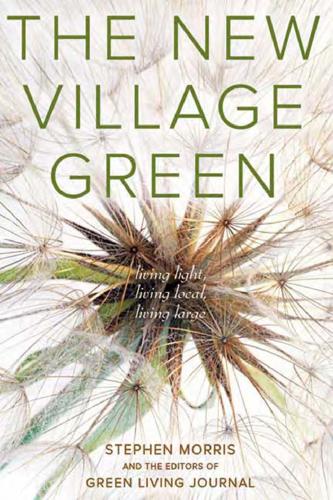
The new village green: living light, living local, living large
by
Stephen Morris
Published 1 Sep 2007
A large percentage of the garlic grown today is incorporated into sauces, pickles, spices, condiments, and sausages. Estimates on fresh garlic consumption note that each adult ingests approximately two pounds of garlic a year. The NEW VILLAGE GREEN 165 The Precautionary Principle E by Stephen Morris arlier in this book, New Society Publisher Chris Plant cites the “Precautionary Principle” as an important evolution in our collective awareness, and the authors of Naturally Clean make frequent references to the concept. In 1998 a conference of scientists and environmentalists first put the idea into words in the historic Wingspread Statement:“When an activity raises threats of harm to human health or the environment, precautionary measures should be taken even if some cause and effect relationships are not fully established scientifically.”
…
(Linda Buzzell-Saltzman)............144 Think Globally, Eat Locally (Bennett & Massa-Gooch) .....................147 Why Bike to Work (Alexander Asper-Nelson) ..................................149 7 : Whole Earth Catalog On Biophilia and Houses (Alex Wilson interview) ..........................157 Your Green Home (Alex Wilson) .....................................................160 The Earth Roof Factor (Rob Roy) ....................................................163 The Precautionary Principle (Stephen Morris)................................166 A Book for the Generations (Hollender, Davis & Doyle)..................167 Try a Solar Water Heater (Andrew Korfhage) ..................................171 The Scoop on Dirt (Tamsyn Jones)..................................................174 Why Dry?
…
Fear strangles hope, and hope is life.There must be some horribly incomprehensible reason why a privileged few choose a path that features plunder, expansion, destruction, chaos, corruption, and ultimately extinction. Only by refusing to follow this path, and choosing instead to live a real life will our species, and our kindred species on this planet, survive.” — Dave Bonta President, BioQuantum Vice President, The Vermont BioFuels Association “ The Precautionary Principle has made us aware not to invent, manufacture, or sell anything without conducting due diligence on the impact on future generations.” — Christopher Plant New Society Publishers The NEW VILLAGE GREEN 97 “ After Bill McKibben wrote The End of Nature and dug deeply into the bad news, he started a search for a more nuanced sense of the relationship between humans and the environment, which continues today, more than a decade later.
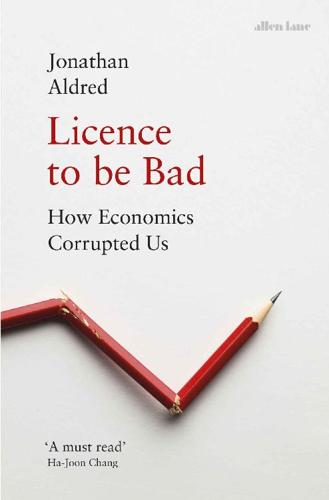
Licence to be Bad
by
Jonathan Aldred
Published 5 Jun 2019
Instead, the overriding priority must be avoiding catastrophe: we need resilience and security rather than maximization and efficiency. In nature, this priority is often pursued through the opposite of efficiency, namely redundancy – for example, humans having two kidneys rather than one. In politics and law this way of thinking is associated with the ‘precautionary principle’. In broad terms, the principle recommends approaches to practical decision-making which focus on resilience, security and taking precautions.24 The emphasis is on being aware of what we don’t know and the likelihood that the future will be surprising (who could have guessed that CFCs, chemicals discovered to be ideal for cooling machines like fridges, would turn out to cause global warming?).
…
First, the orthodoxy in decision theory has always claimed the scientific high ground, pointing to its sophisticated mathematical underpinnings. But recent developments at the cutting edge of decision theory have begun to provide mathematical respectability for alternative principles (such as the precautionary principle), so very smart people may start to take them seriously. Second, while making judgements involves taking responsibility, at least it gives us something to do. Nowadays, a computer doesn’t just perform calculations. With artificial intelligence it can tweak and refine the mathematical model it is using along the way.
…
air travel, commercial, 63–4 Akerlof, George, 223, 237, 248 altruism, 150–51, 159, 162–4 game theory’s denial of, 31–2, 41, 42–3 misunderstanding of, 13–14, 25, 31–2, 41–3, 112, 178–9 as not depleted through use, 14 seen as disguised selfishness, 11–12, 25, 112, 178–9 Amazon, 155, 178, 208 American Economic Association, 257, 258 Angrist, Joshua, 249 antitrust regulation, 56–8 Apple, 222–3 Aristotle, 14 Arrow, Ken awarded Nobel Prize, 71 and blood donations, 14, 163 at City College, New York, 74–5, 91 collective preference, 73–4, 75–7, 78–82 and democracy, 72–4, 75–7, 78–83, 95, 97 framework presented as scientific, 81–2, 124–5 and free marketeers, 78–9, 82 Impossibility Theorem, 72, 73–4, 75–7, 78–83, 89, 97 and mathematics, 71, 72, 73–5, 76–7, 82–3, 97 and Mont Pèlerin Society, 9 preference satisfaction’, 80–82, 97, 124–5, 129 and Ramsey, 189 at RAND, 70–71, 72–3, 74, 75–6, 77, 78 top-secret-level security clearance, 71–2 ‘A Cautious Case for Socialism’ (1978), 83 ‘On the Optimal Use of Winds for Flight Planning’, 71 Social Choice and Individual Values (1951), 71, 72, 75–7, 78–80, 97 artificial intelligence, 214, 242 Atlas Economic Research Foundation, 7–8 Austen, Jane, 134 austerity policies, recent, 258 Axelrod, Robert, 41 Babbage, Charles, 222 baby-market idea, 61, 138, 145, 146 Bachelier, Louis, 193 Baird, Douglas, 58–9 bandwagon effect, 110 Bank of England, 96, 120, 185, 211–12, 258 bankers excuse/permission to be greedy, 1–2, 204, 238 and Keynesian economics, 5 performance as wholly relative, 204 quantification and recklessness, 213 rigged pay-for-performance contracts, 229–30, 238 role in 2007 crisis, 1–2, 57, 182, 192 as serial offenders over uncertainty, 201 see also financial markets Barro, Josh, 63, 64 Bateson, Gregory, 28 battery-chicken farming, 7 Baumol, William, 90–92, 93, 94 BBC, 48, 98 Beaverbrook, Lord, 157 Becker, Gary amoral understanding of crime, 137, 152 and citizenship rights, 146 and Coase, 69 Freakonomics followers of, 130, 134, 148–9, 156 and Friedman, 126, 131 hidden assumptions of, 130–31, 133–4 human capital idea, 149 and individualism, 134, 135–8 and maximization, 129–31, 133–4, 147 as outsider, 50 and Posner, 56 rejects need for realistic assumptions, 132, 133–4, 148 and sale of body parts, 147–8 sees poor health as just a preference, 135, 136, 140 sees values as mere tastes, 136–8, 140 theories as deeply controversial, 127–9, 130 theories as slippery, 129, 133–4 and ‘universality’ of economics, 125, 126–31, 133–4, 135–8, 147–8 version of ‘rational’ behaviour, 128–9, 135, 140, 151 De Gustibus Non Est Disputandum (with Stigler, 1977), 135–6 The Economic Approach to Human Behavior (1976), 130 The Economics of Discrimination (1957), 126–7 A Treatise on the Family (1981), 127–8, 130–31, 133 behaviourism, 154–8, 237 behavioural economics context and culture, 175–6 framing effects, 170–71, 259 and incentives, 160, 171, 175, 176–7 methods from psychology, 170–71 and Nudge, 171–2 and orthodox economics, 173, 174–5, 247, 255 and physics envy, 175–6 problems with, 173–5, 250–51 ‘self-command’ strategies, 140 theory of irrationality, 12, 171, 250–51 and welfare maximization, 149 Bell, Alexander Graham, 222 bell curve distribution, 191–4, 195, 196, 201, 203–4, 218–19, 257 Bentham, Jeremy, 102 Berlin, Isiah, 166, 167–8 Beveridge Report (1942), 4 Bezos, Jeff, 208 Black, Duncan, 77–8, 95 Blackstone (private equity firm), 235 black swans, 192, 194, 201, 203–4 Blinder, Alan, The Economics of Brushing Teeth (1974), 136 blood donors, 14, 112, 162–3, 164, 169, 176 Borel, Émile, 185* Brennan, William, 56 broadcasting, 48–50, 98 spectrum auctions, 39–40, 47, 49–50 Buchanan, James McGill, 8, 83–5, 87–8, 89, 95, 115 Buffett, Warren, 229, 230, 236 Calcraft, John, 120, 121 Cameron, David, 172 Caplan, Brian, The Myth of the Rational Voter, 245–6 carbon markets, 47, 65–7 Carlson, Jack, 141–2 Carroll, Lewis (Charles Lutwidge Dodgson), 72, 77 cartels and monopolies, 101, 102, 103–4 Cheney, Dick, 232–3 Chicago, University of, 2, 4, 34, 40, 49–51 antitrust ideas, 56–8 Buchanan at, 84 and Coase, 49–52, 53–4, 55, 56–7, 61, 68–9, 132 Friedman’s dominance, 50, 132 law and economics movement, 40, 55, 56–63, 64–7 revolution of 1968 at, 56, 58–9 zero-transaction-costs assumption, 51–2, 68–9 Chicago law school, 55, 56, 58–9 child labour, 124, 146 China, 65 City College, New York, 74–5, 91 climate change average temperature rises, 205–6, 207 and carbon markets, 47, 65–6 ‘cashing in’ on carbon markets, 67 Coasean worldview on pollution, 65–7, 68 denialists, 8 ‘discount rate’ on future costs, 208–9, 212 discrimination against future generations, 208–9 and free-riding theory, 2, 99, 113–17, 120 Intergovernmental Panel on, 207 measurement in numerical terms, 206–11, 213 and precautionary principle, 211–12 premature deaths due to, 207–9 and Prisoner’s Dilemma, 27 Stern Review, 206, 209–10 threat to economic growth, 209 Coase, Ronald argument given status of theorem, 51–2, 67 awarded Nobel Prize, 52 background of, 47–8 and Chicago School, 49–52, 53–4, 56–7, 61, 68–9, 132 and created markets, 47, 65–7 dismissal of ‘blackboard economics’, 48, 54, 64, 67–9 on Duncan Black, 77 evening at Director’s house (early 1960), 49–51, 132 fundamental misunderstanding of work of, 51, 52–3, 67–9 hypothetical world invoked by, 50–51, 52, 54–5, 62, 68 as Illinois resident, 46–7 and Mont Pèlerin Society, 8 and public-sector monopolies, 48–51 and transaction costs, 51–3, 54–5, 61, 62, 63–4, 68 ‘The Nature of the Firm’ (1932 paper), 48 The Problem of Social Cost’ (1960 paper), 47, 48, 50–51, 52, 54–5, 59 cognitive dissonance, 113–14 Cold War, 18–19, 20, 21–2, 24, 27, 181 Cuban Missile Crisis (1962), 33–4, 140 and Ellsberg, 184, 197, 198, 200 and game theory, 18, 20, 21–2, 24, 27, 33–4, 35, 70, 73, 198 and Impossibility Theorem, 75–6 RAND and military strategy, 18, 20, 21–2, 24, 27, 33–4, 70, 73, 75–6, 141, 200, 213 and Russell’s Chicken, 33 and Schelling, 138, 139–40 Washington–Moscow hotline installed, 139–40 collective preference and Ken Arrow, 73–4, 75–7, 78–82 Black’s median voter theorem, 77, 95–6 Sen’s mathematical framework, 80–81 communism, 82, 84, 101, 104, 237 Compass Lexecon, 58, 68 Condorcet Paradox, 76, 77 conspiracy theories, 3, 8, 9 cooperation cartels, monopolies, price-fixing, 101, 102, 103–4 and decision-making processes, 108–10 and free-riding theory, 2, 101, 102, 103–10 office teamwork, 109–10, 112 older perspective on, 100–102, 108, 111, 122 and Scandinavian countries, 103 view of in game theory, 21–2, 23, 25–32, 36–8, 41–3 corporate culture and antitrust regulation, 57–8 changes due to Friedman, 2, 152 Chicago approach to regulation, 40 and climate change, 113, 114, 115 executive pay, 215–16, 219, 224, 228–30, 234, 238 Jensen and Murphy’s article, 229 ‘optimal contracting’/pay-for-performance, 228–30, 238 predatory pricing, 57 and tax evasion/avoidance, 105–6 cost disease, 90–92, 93, 94 Cowles Commission in Chicago, 78 CP/M (Control Program for Microcomputers), 222 criminal responsibility, 111, 137, 152 Cuban Missile Crisis (1962), 33–4, 140 Damasio, Antonio, 14 data geeks, 248–50 ‘dead peasants insurance’, 124 decision-making processes, 108–10, 122, 170–71 ‘anchoring effect’, 212 authority figure–autonomy contradiction, 180 avoidance of pure uncertainty, 198–9 axioms (abstract mathematical assumptions), 198 Ellsberg Paradox, 184, 199–200 Ellsberg’s experiment (1961), 182–4, 187, 197, 198–200, 205 Linda Problem, 202–3 orthodox decision theory, 183–4, 185–6, 189–91, 193–4, 198–200, 201–2, 203–5, 211, 212–14 and the Savage orthodoxy, 190–91, 197, 198–200, 203 scenario planning as crucial, 251 Von Neumann’s theory of decision-making, 189, 190, 203 see also probability; risk and uncertainty democracy and Ken Arrow, 72–4, 75–7, 78–83, 95, 97 Black’s median voter theorem, 77, 95–6 and crises of the 1970s, 85–6 and economic imperialism, 145–7 equal citizenship principle at heart of, 145–6, 151 free-riding view of voting, 99, 110, 112, 115–16, 120–21 marketing by political parties, 95–6 modern cynicism about politics, 94–7 paradox of voter turnout, 88–9, 95–6, 115–16 paradox of voting, 75–7 politicians’ support for depoliticization, 96–7 post-war scepticism about, 78–9 and public choice theory, 85–6, 95–7 replacing of with markets, 79 Sen’s mathematical framework, 80–81 voter turnout, 88–9, 95–6, 115–16, 120–21 see also voting systems Dennison, Stanley, 13 dentistry, 258–9, 261 Depression (1930s), 3 digital technology, 68, 214, 222–3 data revolution, 247–50 and rising inequality, 215, 220, 242 Director, Aaron, 4–5, 49–51, 132 Disney World, 123 Dodd–Frank Act, 256 Dodgson, Charles Lutwidge (Lewis Carroll), 72, 77 dot.com bubble, 192, 201 Douglas Aircraft Corporation, 18 Downs, Anthony, An Economic Theory of Democracy (1957), 86, 89, 95 Dr Strangelove (Kubrick film, 1964), 19, 35, 139 DreamTours Florida, 123 Drucker, Peter, 153 Dulles, John Foster, 20 Dundee School of Economics, 48, 77–8 Dürrenmatt, Friedrich, The Visit of the Old Lady, 166 earthquakes, 194–5 Econometrica (journal), 77–8 economic imperialism arrogance of, 246–7 auctioning of university places, 124, 149–50 continuing damage wrought by, 151–2 and democracy, 145–7 emerges into the limelight, 130 Freakonomics, followers of, 130, 134, 148–9, 156 and inequality, 145–7, 148, 151, 207 markets in citizenship duties, 146 origins of term, 125 price as measure of value, 149, 150, 151 purchase of immigration rights, 125, 146 and sale of body parts, 123, 124, 145, 147–8 sidelining of moral questions, 125–9, 135–8, 141–5, 146–7, 148–9, 151–2, 207 value of human life (‘statistical lives’), 141–5, 207 welfare maximization, 124–5, 129–31, 133–4, 146–7, 148–9 see also Becker, Gary economic theory Arrow establishes benchmark for, 71 Baumol’s cost disease, 90–92, 93, 94 Coase Theorem, 45–7, 48–55, 56–7, 61, 63–6 and data revolution, 247–50 exclusion of by data geeks, 248–50 and financial markets, 9, 12–13, 182, 253 as focus of economics courses, 260 Kahneman and Tversky’s theory of irrationality, 12, 171, 250–51 of labour, 237 marginal productivity theory, 223–4, 228 Pareto efficiency, 217–18, 256* perfect competition, 103, 193–4 profit-maximizing firms, 228–9 rent-seeking, 230, 238 theory of motivation, 157–8, 164, 166–7, 168–70, 178–9 see also game theory; homo economicus; public choice theory; social choice theory economics accidental economists, 47–8 and Arrow’s framework, 78–9, 82 causes of growth, 223, 239 created markets, 47, 65–7 crises of the 1970s, 85–6 digital technology, 68, 214 efficiency as fundamental, 63, 64–5, 141, 153, 155, 193–4, 201, 211, 217–18, 255 empirical research as still rare, 247–8 extension into non-economic aspects of life, 40, 54–60, 65, 123–31, 132–4, 135–6, 145–50 gulf between reality and theory, 10–13, 31–2, 41–3, 51–3, 64–9, 86–9, 133, 136, 144–5, 228–30, 250–53, 260–61 history of, 260 lack of objective ‘facts’, 253 modern debate on, 9 and Olson’s analysis, 104 our love–hate relationship with, 3, 245 as partially self-fulfilling, 12–13, 14, 159, 253 percentage of GDP impact of climate change, 206–11, 213 positional goods, 239–41 Posner’s wealth-maximization principle, 57–63, 64–7, 137 predatory pricing, 57 principles for new relationship with, 251–61 privatization, 50, 54, 88, 93–4 rise of game theory, 40–41 Smith’s enlightened self-interest, 11 value of human life (‘statistical lives’), 141–5, 207 vocational role of, 260 see also behavioural economics; free-market economics economics, aims/pretensions to be science arrogance of, 205, 245–7, 258 Arrow’s framework presented as scientific, 72, 81–2, 124–5 attitude to value judgements, 10, 60–61, 64–9, 112, 136–8, 173–4, 204–5, 218, 247 claims of game theory, 21, 24–6, 28–9, 32, 34, 35, 38, 41 and data revolution, 247–50 desire for neutral science akin to physics, 9–10, 20–21, 34–5, 41, 116, 125, 132–3, 151, 175–6, 187–90, 212, 217–18, 246–56 desire for science of social control, 153, 154, 155, 164, 167 Friedman’s ‘The Methodology of Positive Economics’, 132–3 hidden political/ethical agendas, 10, 213, 253, 255–8 measurement of risk in numerical terms, 181–4, 187, 189, 190–94, 196–7, 201–2, 203–5, 212–13 natural experiments, 248–50 Pareto improvements, 217–18 and physics envy, 9, 20–21, 41, 116, 175–6, 212, 247 and public choice theorists, 88 quantification of all risks and values, 201–2, 203, 212–13 real world as problem for, 10–13, 31–2, 42–3, 51–3, 64–9, 86–9, 133, 136, 144–5, 228–30, 250–53, 260–61 ‘some number is better than no number’ mantra, 212–13 uncertainty as obstacle to, 190–91, 212–13 and use of mathematics, 9–10, 26, 72, 247, 248, 255, 259 use of term ‘rational’, 12 Von Neumann and Morgenstern’s grand project, 20–21, 24–5, 26, 35, 125, 151, 189 and wealth-maximization approach, 58, 60 economists advice to former Soviet Bloc nations, 257 conflicts of interest, 256–7, 258 data geeks, 248–50 economics curriculum reform needed, 259–60 errors and misjudgements, 13–14, 16, 132–3, 144–5, 256*, 257–8, 260–61 failure to explain ideas, 254–5 insularity of, 246–7 Keynes’ dentistry comparison, 258–9, 261 lack of ethics codes, 257–8 misunderstanding of altruism, 13–14, 25, 31–2, 41–3, 112, 178–9 need to show more humility, 258–9, 260–61 as not separate from economy, 251–3 and ordinary people, 245–6, 254–5, 258, 261 self-image as unsentimental and honest, 10 sneering descriptions of virtuous behaviour, 112 stating of the obvious by, 134, 259 education auctioning of university places, 124, 149–50 Baumol’s cost disease, 91, 92, 93, 94 incentivization as pervasive, 156, 169 value of, 150, 169, 170 ‘efficient market hypothesis’, 193–4, 201, 255 Einstein, Albert, 17, 22, 33, 213 Eisenhower, Dwight D., 19, 20, 231 Ellsberg, Daniel, 182–4, 187, 197–8 Ellsberg Paradox, 184, 199–200 and the ‘Pentagon Papers’, 200 probability experiment (1961), 182–4, 187, 197, 198–200 ‘Risk, Ambiguity and the Savage Axioms’ (paper, 1961), 198–9, 200 Engelbart, Douglas, 222–3 Engels, Friedrich, 223 English, Bill, 222–3 Enlightenment thinking, 11, 185 Epstein, Richard, 127 ethics and morality and autonomy, 164, 165–6, 168, 169–70, 180 bad behaviour redefined as rational, 12 and blame for accidents, 55, 60–61 and Coase Theorem, 46–7, 54–5, 56–7, 61, 63–6 Coasean worldview on pollution, 66–7, 68 as conditioned and limited by economics, 3, 10, 15, 43, 55, 60–61, 64–5, 179, 204–5, 218, 247 cooperative behaviour in game theory, 29, 30–32 core principles of current economic orthodoxy, 253 distinction between values and tastes, 136–8 economists’ language on virtuous behaviour, 112 inequality as moral issue, 242–3 influence of recent economic ideas, 1–3, 15–16 Keynes on economics as moral science, 252–3 law and economics movement, 40, 55, 56–63, 64–7 moral disengagement, 162, 163, 164, 166 morally wrong/corrupting incentives, 168–9 and Nash program, 25 Nudge economists, 173–4, 251 Posner’s wealth-maximization principle, 57–63, 64–7, 137 Puzzle of the Harmless Torturers, 118–19 Ramsey Rule on discounting, 208–9, 212 sale of body parts, 123, 124, 145, 147–8 sidelined by economic imperialism, 125–9, 135–8, 141–5, 146–7, 148–9, 151–2, 207 small contributions as important, 110, 114–15, 122 Smith’s enlightened self-interest, 11 value of human life (‘statistical lives’), 141–5, 207 see also altruism; free-riding behaviour European Commission, 96 Facebook UK, 99 fairness, 1, 149, 218, 228, 253 and Coase, 54, 55 and free-riding behaviour, 107 and game theory, 43 and incentives, 177, 179 and lucky geniuses, 221–3 and Posner’s wealth-maximization principle, 60, 61, 62 see also inequality family life, 127–8, 130–31, 133, 156 famine relief, 99, 114–15 Farmer, Roger, 259 Federal Communications Commission (FCC), 48–9 Ferdinand, Archduke Franz, 185 financial crisis, global (2007–10) Becker on, 128–9 and bell curve thinking, 192, 193–4, 196, 257 ‘blame the regulators’ argument, 1–2 and financial economists, 9, 88, 260–61 persuasive power of extreme numbers, 181–2 and Posner’s wealth-maximization principle, 57 underlying maths of, 194, 195–6 financial markets Bachelier’s theory of speculation, 193 bell curve thinking, 192, 193–4, 195, 196–7, 201, 203–4, 257 benchmarking against the market, 204 Black Monday (1987), 192 deregulation of US banks, 194 derivatives, 253 dot.com bubble, 192, 201 East Asian crisis (1997), 192 and economic theory, 9, 12–13, 182, 253 economists’ ignorance of, 260–61 and First World War, 185 and fractals (scale-invariance), 194, 195–6, 201 orthodox decision theory, 190–91, 193–4, 201 persuasive power of extreme numbers, 181–2, 191, 192 and rent-seekers, 230, 238 rigged pay-for-performance contracts, 229–30, 238 First World War, 185, 210, 211–12 Fisher, Antony, 6–8 Forster, E.
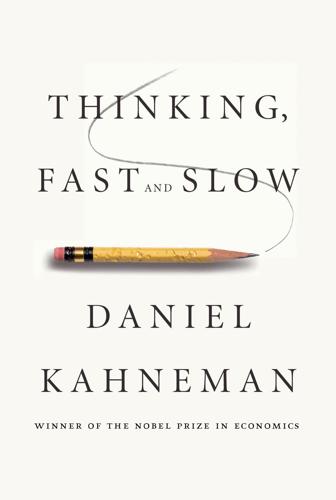
Thinking, Fast and Slow
by
Daniel Kahneman
Published 24 Oct 2011
This trend is especially strong in Europe, where the precautionary principle, which prohibits any action that might cause harm, is a widely accepted doctrine. In the regulatory context, the precautionary principle imposes the entire burden of proving safety on anyone who undertakes actions that might harm people or the environment. Multiple international bodies have specified that the absence of scientific evidence of potential damage is not sufficient justification for taking risks. As the jurist Cass Sunstein points out, the precautionary principle is costly, and when interpreted strictly it can be paralyzing.
…
Thaler, “Toward a Positive Theory of Consumer Choice,” Journal of Economic Behavior and Organization 39 (1980): 36–90. taboo tradeoff: Philip E. Tetlock et al., “The Psychology of the Unthinkable: Taboo Trade-Offs, Forbidden Base Rates, and Heretical Counterfactuals,” Journal of Personality and Social Psychology 78 (2000): 853–70. where the precautionary principle: Cass R. Sunstein, The Laws of Fear: Beyond the Precautionary Principle (New York: Cambridge University Press, 2005). “psychological immune system”: Daniel T. Gilbert et al., “Looking Forward to Looking Backward: The Misprediction of Regret,” Psychological Science 15 (2004): 346–50. 33: Reversals in the man’s regular store: Dale T.
…
positive test strategy possibility effect: gambles and; threats and post-traumatic stress poverty precautionary principle predictability, insensitivity to predictions and forecasts; baseline; clinical vs. statistical; disciplining; of experts, see expert intuition; extreme, value of; formulas for, see formulas; increasing accuracy in; low-validity environments and; nonregressive; objections to moderating; optimistic bias in; outside view in; overconfidence in; planning fallacy and; short-term trends and; valid, illusion of; see also probability preference reversals; unjust premonition, use of word premortem pretentiousness language pricing policies priming; anchoring as t="-5%"> Princeton University probability; base rates in, see base rates; decision weights and, see decision weights; definitions of; and disciplining intuition; less-is-more pattern and; Linda problem and; overestimation of; plausibility and; and predicting by representativeness; prior, insensitivity to; professional stereotypes and; of rare events, see rare events; representativeness and, see representativeness; similarity and; subjective; as sum-like variable; see also predictions and forecasts probability neglect Proceedings of the National Academy of Sciences professional stereotypes professorial candidates prospect theory; in Albert and Ben problem; blind spots of; cumulative; decision weights and probabilities in; fourfold pattern in; frames and; graph of losses and gains in; loss aversion in; reference points in “Prospect Theory: An Analysis of Decision Under Risk” (Kahneman and Tversky) prototypes psychiatric patients psychological immune system psychology, teaching psychopathic charm psychophysics psychotherapists pundits; see also expert intuition punishments: altruistic; rewards and; self-administered pupil dilation questionnaire and gift experiments questions; substitution of, see substitution Rabin, Matthew radiologists rafters, skilled rail projects randomness and chance; misconceptions of Random Walk Down Wall Street, A (Malkiel) rare events; overestimation of; regret and rational-agent model rationality Rationality and the Reflective Mind (Stanovich) ">rats Reagan, Ronald reciprocal priming recognition recognition-primed decision (RPD) model Redelmeier, Don reference class forecasting regression to the mean; causal interpretations and; correlation and; difficulty in grasping; two-systems view of “Regression towards Mediocrity in Hereditary Stature” (Galton) regret religion remembering self Remote Association Test (RAT) reorganizations in companies repetition representativeness; base rates and; see also base rates; in Linda problem; predicting by; professional stereotypes and; sins of; in Tom W problem research: artifacts in; hypothesis testing in; optimism in resemblance; in predictions resilience responsibility retrievability of instances reversals; unjust rewards; self-administered Rice, Condoleezza risk assessment; aggregation and; broad framing in; decision weights in, see decision weights; denominator neglect and; by experts; and format of risk expression; fourfold pattern in; for health risks; hindsight bias and; laws and regulations governing; loss aversion in; narrow framing in; optimistic bias and; policies for; possibility effect and; precautionary principle and; probability neglect and; public policies and; small risks and; of technologies; terrorism and; see also gambles risk aversion risk seeking “Robust Beauty of Improper Linear Models in Decision Making, The” (Dawes) Rosett, Richard Rosenzweig, Philip Royal Dutch Shell Royal Institution Rozin, Paul < Philip Rumsfeld, Donald Russell Sage Foundation Russia Saddam Hussein sadness safety; health risks and; health violation penalties and; precautionary principle and samples, sampling: accidents of; and bias of confidence over doubt; law of large numbers; law of small numbers; size of; small, exaggerated faith in Samuelson, Paul San Francisco Exploratorium Savage, Jimmie Save More Tomorrow Schelling, Thomas Schkade, David school size Schwarz, Norbert Schweitzer, Maurice Science Scientific American scientific controversies scientific research: artifacts in; hypothesis testing in; optimism in Scottish Parliament self-control self-criticism Seligman, Martin selves; experiencing; remembering sets Shafir, Eldar similarity judgments Simmel, Mary-Ann Simon, Herbert Simons, Daniel Simpson, O.
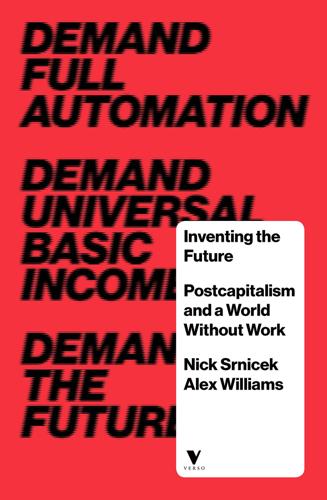
Inventing the Future: Postcapitalism and a World Without Work
by
Nick Srnicek
and
Alex Williams
Published 1 Oct 2015
The hard task ahead is to build new worlds while acknowledging that they will create novel problems. The best utopias are always riven by discord. This imperative runs in opposition to the kind of precautionary principle that seeks to eliminate the contingency and risk involved in making decisions. On strong readings, the precautionary principle aims to convert epistemic uncertainty into a guardianship of the status quo, gently turning away those who would seek to build a better future with the imperative to ‘do more research’. We might also consider here that the precautionary principle contains an almost inherent lacuna: it ignores the risks of its own application. In seeking to err always on the side of caution, and hence of eliminating risk, it contains a blindness to the dangers of inaction and omission.5 While risks need to be reasonably hedged, a fuller appreciation of the travails of contingency implies that we are usually not better off taking the precautionary path.
…
In seeking to err always on the side of caution, and hence of eliminating risk, it contains a blindness to the dangers of inaction and omission.5 While risks need to be reasonably hedged, a fuller appreciation of the travails of contingency implies that we are usually not better off taking the precautionary path. The precautionary principle is designed to close off the future and eliminate contingency, when in fact the contingency of high-risk adventures is precisely what leads to a more open future – in the words of conceptual artist Jenny Holzer, ‘You live the surprise results of old plans.’ Building the future means accepting the risk of unintended consequences and imperfect solutions.
…
Emphasis added. 2.The tenacity of the gendered division of society is amply demonstrated in Maria Mies, Patriarchy and Accumulation on a World Scale: Women in the International Division of Labour (London: Zed, 1999). 3.Kathi Weeks, The Problem with Work: Feminism, Marxism, Antiwork Politics, and Postwork Imaginaries (Durham, NC: Duke University Press, 2011), p. 216. 4.Robert J. Van Der Veen and Philippe Van Parijs, ‘A Capitalist Road to Communism’, Theory and Society 15: 5 (1986), p. 637. 5.Gregory N. Mandel and James Thuo Gathii, ‘Cost-Benefit Analysis Versus the Precautionary Principle: Beyond Cass Sunstein’s Laws of Fear’, University of Illinois Law Review 5 (2006). 6.For an essential meditation on this, see Benedict Singleton, ‘Maximum Jailbreak’, in Robin Mackay and Armen Avanessian, eds, #Accelerate: The Accelerationist Reader (Falmouth: Urbanomic, 2014). 7.Paul Mason, ‘What Would Keynes Do?’

Spike: The Virus vs The People - The Inside Story
by
Jeremy Farrar
and
Anjana Ahuja
Published 15 Jan 2021
But I trust your judgement even though we don’t know each other that well… I have been drafting this for nearly two weeks, hoping I wouldn’t have to send it. I have seen nothing that stops me sending it. As best you can, can you let me have some comments and then answer two questions: – will it help if I put this on record at UK gov – would you do it if you were me … I see it as totally justified on the precautionary principle. Thanks in advance Steven The attached note explained why herd immunity would not work and why containment was needed as quickly and strongly as possible: because of how people were likely to behave when faced with a serious pathogen. The note drew on Steven’s experience of studying a 2003 outbreak of SARS in Hong Kong.
…
Suppression – bringing the epidemic down to manageable levels – would take all those measures plus social distancing of the entire population (like a full lockdown, except people are allowed to go to work). This was the point that Steven Riley had been pushing, in raising the prospect of a China-style lockdown on the basis of the precautionary principle in his simple modelling note to SPI-M on 10 March. The strategy needed to switch immediately from mitigation to suppression – to try as hard as possible to stop the virus from circulating. After that 16 March SAGE meeting, held in the early afternoon, I actually felt optimistic that the UK was about to correct course.
…
Demis was doing some back-of-the-envelope maths using the numbers that he was hearing. It largely coincided with Neil and John’s modelling showing that deaths would run into the hundreds of thousands. Startled, Demis cited the same concern that Steven Riley had raised with me: ‘What about the precautionary principle?’ If all the modelling was even partially accurate, and we were about to become the next Italy, the only intervention we had left available was to close down the economy. That meant shutting everything. SAGE advised that schools should be closed as soon as possible, except possibly for the children of key workers; pubs, restaurants, other hospitality and leisure should shut, along with indoor workplaces.
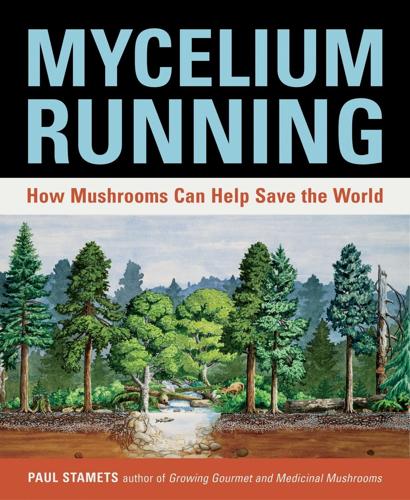
Mycelium Running: How Mushrooms Can Help Save the World
by
Paul Stamets
Published 14 Apr 2005
I would counter by saying that promoting these saprophytic mushrooms conforms to the precautionary principle, adopted by many cities and organizations across America in the past few years (Raffensperger and Tickner 1999). This principle advocates thinking of the future as much as the present—a blending of long-sighted intention and environmentally rational strategy. Like the Hippocratic oath taken by physicians to first do no harm as healers, the precautionary principle suggests that doing nothing is often better than doing something if there are substantial unknown risks inherent in an action. However, the precautionary principle advocates action in the face of impending disaster, and this is where I think mycorestoration strategies fit well.
…
One could argue that introducing the cauliflower mushroom (Sparassis crispa) a weakly parasitic root rot fungus, might violate the precautionary principle. However, I know of no cases of Sparassis crispa blight, nor have I found any reports by mycologists or foresters. My in vitro tests (see figure 62) show that Sparassis crispa outcompetes Armillaria mellea, suggesting that these mycelia may actually limit this known virulent root pathogen, thereby preventing a devastating blight by introducing a negligible one. (Similarly, forest fires are often stopped by starting smaller backfires.) As you can see, this strategy is not risky and therefore does not violate the precautionary principle. A potential downside of the precautionary principle, which is used to protect against negative unforeseen consequences, is that it puts the brakes on progressive thinking and may limit the search for existing nature-based remedies, tested in the theater of evolution.
…
A potential downside of the precautionary principle, which is used to protect against negative unforeseen consequences, is that it puts the brakes on progressive thinking and may limit the search for existing nature-based remedies, tested in the theater of evolution. I believe that it is better to search our planet’s existing genetic diversity for naturally resistant crops instead of birthing GMOs (genetically modified organisms), the Frankensteinian creatures of our era. This book encourages exploration of fungal biodiversity for indigenous remedies to many of the problems we have created for ourselves. This issue was exemplified when a friend tried to introduce the woodlover (Hypholoma capnoides) to wood chips in a decommissioned road reclamation project in northern Arizona (see chapter 6).
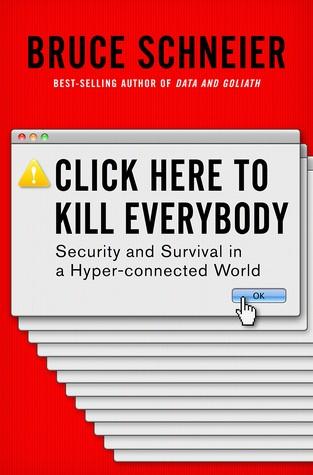
Click Here to Kill Everybody: Security and Survival in a Hyper-Connected World
by
Bruce Schneier
Published 3 Sep 2018
Katz (11 Mar 2015), “FTC charges DIRECTV with deceptively advertising the cost of its satellite television service,” Federal Trade Commission, https://www.ftc.gov/news-events/press-releases/2015/03/ftc-charges-directv-deceptively-advertising-cost-its-satellite. 154excessive data collection by toys: Cecilia Kang (8 Jan 2018), “Toymaker VTech settles charges of violating child privacy law,” New York Times, https://www.nytimes.com/2018/01/08/business/vtech-child-privacy.html. 154and televisions: Juliana Gruenwald Henderson (6 Feb 2017), “VIZIO to pay $2.2 million to FTC, state of New Jersey to settle charges it collected viewing histories on 11 million smart televisions without users’ consent,” Federal Trade Commission, https://www.ftc.gov/news-events/press-releases/2017/02/vizio-pay-22-million-ftc-state-new-jersey-settle-charges-it. 155This way of thinking will become: There are conflicting takes on this in the computer security field. Adam Thierer (11 Mar 2012), “Avoiding a precautionary principle for the Internet,” Forbes, https://www.forbes.com/sites/adamthierer/2012/03/11/avoiding-a-precautionary-principle-for-the-internet. Andy Stirling (8 Jul 2013), “Why the precautionary principle matters,” Guardian, https://www.theguardian.com/science/political-science/2013/jul/08/precautionary-principle-science-policy. 155We don’t want to—and can’t: Kevin Kelly has written about how to be deliberate in deciding which technologies society should use, and how to roll them out.
…
The fourth and last problem with regulations is that they can stifle innovation. I think we just have to accept that, and in certain rare cases we may even want to do so deliberately. Unfettered innovation is only acceptable for benign technologies. We regularly put limits on technologies that can kill us, because we believe the safety and security are worth it. The precautionary principle dictates that when the potential of harm is great, we should err on the side of not deploying a new technology without proof of security. This way of thinking will become more important in a world where an attacker can open all of the door locks or hack all of the power plants. We don’t want to—and can’t—stop technological progress, but we can make deliberate choices between technological futures, or speed up or delay certain technologies with respect to the others.
…
III, 52 offense vs. defense, see attack vs. defense Office of Personnel Management, hacking of, 45, 79 Office of the Director of National Intelligence (ODNI), 146–47, 148 Oltsik, Jon, 141 One Percent Doctrine, 93–94 Onity, 32, 131 Open SSL, 114 Open Technology Institute, Ranking Digital Rights, 136 Open Web Fellowship program, 223 outcomes-based regulation, 122–23 Pandora Internet Radio, 58 Panetta, Leon, 53, 89 Paradigm Initiative, Nigeria, 214 password: authentication via, 45–46, 47 stealing, 171 password guessing, 33, 46 patching, 34–43 of cyberweapons, 72 inadequacy of, 42 installing patches, 36–38, 108–9 unreliability of, 38–39 of vulnerabilities, 35–36 writing and publishing patches, 38–40 PATRIOT Act, 192 Perrow, Charles, 80, 210 phishing attacks, 45, 46 Plan B: What’s Likely to Happen, 180–91 EU regulation, 184–88 opting out, 188 US inaction, 181–84 what we can do, 188–91 Podesta, John, 46 power stations: blackouts, 29, 90 cyberattacks on, 2, 72, 90, 116, 217 hacking of, 2, 16 on the Internet, 4–5 precautionary principle, 155 “preparing the battlefield,” 69 printers: biological, 95, 217 hacking of, 2–3, 24–25, 91 printing press, invention of, 24 Prisoner’s Dilemma, 124 privacy, and security, 9, 79, 190 privacy laws, 153–54, 185–86 product liability, 131–35 product rating systems, 135–36 professional certification, 140 Project Zero, 36 Proliferation Security Initiative (PSI), 158 protocols, standard, 108 public education, 137, 138–41 public-interest law, 224 Qatar, hacking into, 80 quality standards, 20–21, 34, 107–9 radio spectrum, regulation of, 204–5, 206 ransomware, 26, 74, 77 regulation: EU promotion of, 184–88 smart vs. stupid, 192 regulatory capture, 155 resilience, 210–12 Review Group on Intelligence and Communications Technology, 163 risks, 217–18 catastrophic, 78–96 increasing dependence on Internet, 89–96 integrity and availability attacks, 78–82 and liability law, 128–33 machine-learning algorithms, 82–87 and One Percent Doctrine, 93–94 supply chain vulnerability, 87–89 robocallers, 154 robots, 7, 86–87, 148, 149 Roff, Heather, 213 Rogers, Mike, 81, 86 Rosenstein, Rod, 194, 195, 196 Russia: and athletes’ drug tests, 80 cyber actors in, 81 and cybercrime law, 156 eavesdropping on communications, 195–96 power stations hacked by, 2, 69, 90, 116 and US election process (2016), 35, 40, 45, 71, 78, 80 and weapons of mass destruction, 158 Russian Federal Security Service, 30 Samsung, 135 San Bernardino shooting (2015), 202 Sarbanes-Oxley Act (2002), 128 Saudi Aramco, 116 Sawers, Sir John, 73 SCADA industrial-control systems, 79–82 Scherer, Matthew, 149 script kiddie, use of term, 30 security: in algorithms, 111–12, 148 alternative paradigm of, 34–35 as attacker/defender arms race, 10, 16, 26–28 collective payment for, 102 complexity as enemy of, 27 by design, 106–7, 167–70 encryption for, 171 home, 102 information, 78 of infrastructure, 116–18 military metaphors for, 213 and “movie-plot threats,” 96 no return on investment in, 134 of personal data, 109–11 and quality standards, 34, 107–9, 167 scarcity for, 204 trade-offs in, 19, 47 and transparency, 111 see also Internet+ security security clearances, 177 security dilemma, 73 self-regulation, 121, 136 September 11, 92–96, 147, 192 server-to-server combat, 203 Shackelford, Scott, 213 Signal (messaging app), 170, 196 skimmers, 17 Sklyarov, Dmitry, 41 smart billboards, 7 smart devices: competitive edge of, 5–6 connectivity of, 5, 19 embedded in our bodies, 4 encryption of, 171, 199 hacking of, 3–4 offline functionality of, 108–9 security hub in, 48, 50 security standards for, 107–9 sensors in, 58 surveillance cameras networked with, 4 your data collected and sold on, 57 smart homes, 4, 16 smart refrigerators, 29 smart thermostats, 15 SmartThings, 128–29 SMEX, Lebanon, 214 Smith, Brad, 158, 163 Snow, C.

How Democracy Ends
by
David Runciman
Published 9 May 2018
But the difference is that in the first scenario, when absolutely everybody dies, there is no hope of recovery and no one left to do the valuing. Everything is lost. One response to this problem is known as ‘the precautionary principle’, which states that we need to make a special effort to guard against hard-to-evaluate but potentially catastrophic outcomes. The precautionary principle is often applied to environmental threats. For instance, we don’t know how disastrous the effects of unchecked climate change could be – they might be nowhere near as bad as feared or they might pose a real threat to the continued existence of human civilisation.
…
Our inability to be sure about the risks we run is a reason to take action now rather than to delay action until we can be sure. If we act and it was a wasted effort, the costs will be livable with. If we don’t act and the worst happens, they won’t. This is a version of Pascal’s wager, which says that it’s never worth taking a chance on eternal damnation. The precautionary principle has plenty of critics. They point out that it can end up warping our judgement by causing us to downgrade other kinds of hazards. If some exceptional risks stand apart from everything else, then non-exceptional risks may struggle to get taken seriously. That has costs, too. For example, taking pre-emptive action on climate change generates significant risks of its own – it could stifle growth in developing countries, leading to loss of life (economic growth underpins improved healthcare), social unrest and political conflict.
…
.: Pax Technica, 197–8, 205–6 Hungary, 175 I Iceland, 162, 163 identity politics, 72, 150, 178, 202–3 immigration, 55, 68, 183, 184, 210 India conspiracy theories, 65–6 independence, 120, 121 movement politics, 149 political enfranchisement, 76 pollution, 89 reform, 77 technology, 121–2 inequality and corporations, 131 and digital technology, 203 and environment, 90 and populism, 77–8 and violence, 78–80 information technology, 6–8, 196; see also internet interconnectedness, 112–15 International Monetary Fund (IMF), 32 internet, 152–3, 163 advertising, 157, 159 decision-making, 161 governance of, 198 invention of, 120 and liberation, 195–6 and surveillance, 153–5 of things, 197 utopias, 194–5 see also digital revolution Iraq War (2003), 75 Italy, 50, 148, 162 J Japan, 207, 208, 209–11 Hiroshima, 83–4, 84–5, 93–4 immigration, 210 Nagasaki, 94 population, 209 violence, 210 Jaurès, Jean, 71 Jews conspiracy theories, 65, 66, 68 Dreyfus Affair, 69 Holocaust, 84 juntas, 38, 50 K Kazcynski, Jaroslaw, 65, 66 Kazcynski, Lech, 66 Kennedy, President John F., 87–8, 108 Khrushchev, President Nikita, 108 Kimera Systems (digital technology company), 189 Kissinger, Henry, 56, 95, 96 knowledge acquisition of, 153 and discrimination, 180 internet and, 153 political, 188–9 and power, 186–7, 204 social, 196 social scientific, 183 Krugman, Paul, 90 Kubrick, Stanley: Dr Strangelove or: How I Learned to Stop Worrying and Love the Bomb (film), 95–6, 109 L Land, Nick, 165–7 Le Pen, marine, 149 Lenin, Vladimir Ilych: The State and Revolution, 171 libertarianism, 194 Lilla, mark, 150 Limbaugh, Rush, 20 Lincoln, President Abraham, 14 Lloyd George, David, 71 Long, Huey, 49 loss aversion, 175, 188 Luttwak, Edward: Coup D’État: A Practical Handbook, 41, 44 M McCarthy, Cormac: The Road, 113, 118–19 McGinnis, Joe: The Selling of the President, 158 machines, 121–2, 125–6, 127, 196, 197, 199, 200–201, 202, 205, 219; see also artificial intelligence; computers; robots; technocracy; technology McKinley, President William, 74 Macron, President Emanuel, 148, 149–50 Man on Wire (film), 117–18 Marx, Karl: ‘The Fragment on machines’, 196–7 Marxism-Leninism, 171 Mason, Paul: Postcapitalism, 196, 197, 199, 205 Mélenchon, Jean-Luc, 58 Mencius Moldbug see Yarvin, Curtis metadata, 154 Mill, John Stuart, 182–3, 185 Miller, Stephen, 13 mindlessness, 84, 86–8 Mitchell, David: The Bone Clocks, 113 Modi, Narendra, 65–6, 149 monarchs, 167 Monsanto (company): ‘The Desolate Year’, 88 Mugabe, President Robert, 48 Mullin, Chris: A Very British Coup, 58 N NATO, 59 Nazis, 85, 97, 99 Netherlands, 148 networks and anarchism, 193 and change, 196 interconnectedness, 112–15 political movements, 149 social 136, 151, 160, 177; see also Facebook; social media; Twitter utopian, 200 see also internet New York crime, 211 World Trade Center, 117–18 New York Times, 159–60 New Yorker (magazine), 82–3, 84, 106 news, fake, 64, 75, 98, 156, 157 Nixon, President Richard, 56, 90, 158 North Korea, 213 Nozick, Robert: Anarchy, State, and Utopia, 193–4, 195 nuclear disarmament, 107 Campaign for Nuclear Disarmament (CND), 94–5 nuclear weapons, 56, 83–4, 86, 94, 95, 96–7, 102, 103–104, 106, 107 Nunn, Sam, 95 O Obama, President Barack and climate change, 92 and conspiracy theory, 64 executive initiatives, 55 and inequality, 79 and Trump’s election, 13, 14, 15, 16, 18 oil companies, 131 Orban, Viktor, 175 Osborne, George, 208 Oxford and Cambridge Review, 120 P Papademos, Lucas, 39 Papandreou, Andreas, 27 Papandreou, George, 39 paranoia, 67, 74 Parent, Joe, 62 Parfit, Derek, 100, 202–3 Paul, Rand, 154 Perry, William, 95 pesticides, 87–9 Petit, Philippe, 117–18 Piergiacomi, Alessio, 167–8 Piketty, Thomas: Capital in the Twenty-First Century, 78 Pinker, Steven: The Better Angels of our Nature, 211 Plato, 179 Poland, 65, 66 police, 171 political parties, 214 artificiality, 145–6 charisma, 147 and identity politics, 150 as machines, 127 membership, 146, 147–8 ‘Net’, 162 partisan nature, 146 ‘Pirate’, 162 United States, 146–7, 221 politicians: and trust, 144–5, 164, 214 pollution, 89, 90 populism, 13, 175 and banality, 98–9 causes of, 67 and conspiracy theory, 65–7, 72, 168 and disconnect, 141 and economic growth, 192 and inequality, 77–8 and movement politics, 148–9 United States, 67–70, 73 and war, 75 precautionary principle, 100–101 pressure groups, 89 prisons, 151, 152, 212 Putin, President Vladimir, 157 R racism, 143 Rand, Ayn, 194 rational choice theory, 108–9 referendums, 47–8, 179, 183 France, 70 Turkey, 52 United Kingdom, 48 reform, 70, 71, 78, 79, 185; see also social change revolutions, 41, 78, 196; see also digital revolution risk, 101–5, 110–12, 116 robots, 7, 103, 111, 128–9, 130, 168, 210 Rockefeller, John D., 131–2 Roosevelt, President Theodore, 70, 71, 131 Russia ‘competitive authoritarianism’, 175 Cuban missile Crisis (1962), 107–8 data harvesting, 156 foreign policy, 30 S Sacco, Justine, 143 San Francisco, 162, 163 Sandberg, Cheryl, 137 Sanders, Bernie, 58, 149 Sarandon, Susan, 198 Scarry, Elaine: Thermonuclear Monarchy: Choosing between Democracy and Doom, 104 Scheidel, Walter: The Great Leveler, 78 Schlesinger, James, 56 Schultz, George, 95 Shita, Mouna, 189–90 Simon, Herbert, 153 el-Sisi, General Abdul Fatah, 48–9 slavery, 23, 35, 73, 123–4 sleepwalking, 115, 116, 117 Snowden, Edward, 151–2 Snyder, Timothy: On Tyranny: Twenty Lessons from the Twentieth Century, 97–8, 99 social change, 192, 219; see also reform social media, 149; see also Facebook; networks: social; Twitter socialism 171 Socrates, 38 Spain, 162 Stalinism, 99, 169, 171 suffrage, universal, 187–8 Sulzberger, Cyrus, 27, 28 surveillance, 152–5 Sweden, 162, 163 T taxation, 70, 72, 193 technocracy, 180–81, 191–2, 198, 205, 214 technology, 125, 126 corporations, 131 digital, 144, 151, 154, 161, 162–3; see also internet and dignity, 203 information, 7–8 and mortality, 24–5 and risk management, 105 and ‘the shock of the old’, 122 threat of, 103, 120–21 see also machines terrorism, 74 terrorists, 97, 212 Texas, 163 Thiel, Peter, 198 tightrope-walking, 117–18 totalitarianism, 98; see also tyrannies tribalism, 163–4 Truman, President Harry S., 84–5 Trump, Melania, 13 Trump, President Donald, 49 behaviour, 20–21, 22–3, 159, 173 and change, 198 and Charlottesville demonstrations, 4 and climate change, 93 and conspiracy theory, 64–5 and dignity, 173 election of, 1–2, 5, 13, 16–18, 19, 20, 25, 118, 149, 156 and executive aggrandisement, 92 and fake news, 157 inaugural speech, 11–14, 74 military’s influence on, 59 novels inspired by, 57 and nuclear war, 86 and political violence, 212 presidency, 213 and Silicon Valley firms, 137 supporters of, 98 on surveillance, 154 use of Twitter, 143 Tsipras, Alexis, 33–4, 209 Turkey, 50–3 conspiracy theories, 65, 66 coups, 50–2, 53, 66 and Cyprus, 38 elections, 51 Justice and Development Party (AKP), 51 movement politics, 149 referendum (2017), 52 Twitter, 65, 137, 142, 143, 156 tyrannies 61; see also totalitarianism U United Kingdom austerity, 208 Boer War, 75 Brexit, 48, 156, 179 Campaign for Nuclear Disarmament (CND), 94–5 Conservative Party, 146, 209 general election (2017), 95 Labour Party, 58, 70, 94–5, 148–9, 150 metadata, 154 political enfranchisement, 76 reform, 185 welfare state, 76 United States, 23–4, 25, 49–50 CIA, 28, 30 climate change, 92 Congress, 19 conspiracy theories, 62, 67 corporations, 132 Cuban missile Crisis (1962), 107–8 democratic failure, 2, 14 demonstrations, 4 direct democracy, 163 economic growth, 175 and Egypt compared, 49–50 environment, 87–90 and Greece, 30 immigration, 183 inequality, 79 judiciary, 19 McCarthyism, 67 metadata, 154 military, 17, 18 National Security Agency (NSA), 152 New Deal, 76, 78 and nuclear war, 86, 95 ‘pax Americana’, 198 pesticides, 87–9 political enfranchisement, 76 political parties Democrats, 15, 62, 64, 108, 146–7, 221 Republicans, 62, 146–7, 221 politicians, 164 populism, 67–70, 73 presidential elections, 14, 16, 54–5, 58, 68, 220–24 Kennedy, John F., 108 Trump, Donald, 1–2, 5, 13, 19, 20, 25, 118, 149 prisons, 212 reform, 70 rights, 72 road accidents, 211–12 Silicon Valley, 137, 204 ‘tyranny of the majority’, 142 violence, 73–4, 211–12 war with Spain (1890s), 75 see also Chicago; New York; San Francisco; Texas Uscinski, Joe, 62 utopias, 126, 194, 195, 201 V Varoufakis, Yanis, 32–4, 116–17, 209 Venezuela, 154–5, 208 violence, 6, 73–5 ancient Athens, 38 decline of, 13 and environmental disaster, 93 Greece, 31, 210 and inequality, 78–80 Japan, 210 online, 142–4 political, 16–17, 18 United States, 73–4, 211–12 voting AI and, 189–90 right to, 76, 183–4 systems, 182–3 see also elections W wars, 74–7 citizens’ experience of, 77 and conspiracy theory, 77 First World War, 76, 115 of national survival, 75 nuclear, 83–4, 84–5, 87, 93–7, 109, 213 and populism, 75 total, 76–7 United States and North Korea, 115 see also Cold War wealth: and death, 204; see also elites Weber, Max, 127, 131, 147, 164, 187–8 welfare states, 70, 76, 109–10 whistleblowers see Snowden, Edward Wilson, President Woodrow, 69, 71, 75–6 Y Yarvin, Curtis, 167 Z Zimbabwe, 48 Zuckerberg, Mark, 131, 133, 135, 137, 138, 140, 157–8, 215; see also Facebook ALSO FROM PROFILE BOOKS Political Order and Political Decay: From the Industrial Revolution to the Globalisation of Democracy Francis Fukuyama The most important book about the history and future of politics since The End of History.
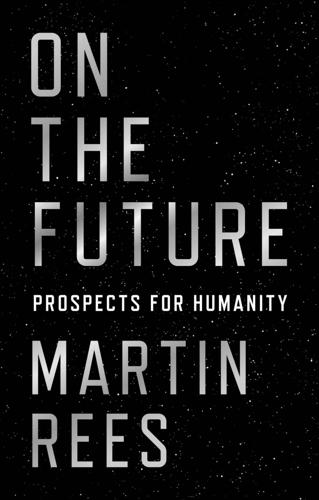
On the Future: Prospects for Humanity
by
Martin J. Rees
Published 14 Oct 2018
Such thoughts would remove any compunction about going ahead—but it is impossible to quantify the relative probabilities. So, it might be hard to make a convincingly reassuring case for such a Faustian bargain. Innovation is often hazardous, but if we don’t take risks we may forgo benefits. Application of the ‘precautionary principle’ has an opportunity cost—‘the hidden cost of saying no’. Nonetheless, physicists should be circumspect about carrying out experiments that generate conditions with no precedent, even in the cosmos. In the same way, biologists should avoid creation of potentially devastating genetically modified pathogens, or large-scale modification of the human germ line.
…
Risks can be minimised by a culture of ‘responsible innovation’, especially in fields like biotech, advanced AI, and geoengineering, and by reprioritising the thrust of the world’s technological effort. We should remain upbeat about science and technology—we shouldn’t put the brakes on progress. Doctrinaire application of the ‘precautionary principle’ has a manifest downside. Coping with global threats requires more technology—but guided by social science and ethics. The intractable geopolitics and sociology—the gap between potentialities and what actually happens—engenders pessimism. The scenarios I’ve described—environmental degradation, unchecked climate change, and unintended consequences of advanced technology—could trigger serious, even catastrophic, setbacks to society.
…
See also Earth; Mars; solar system; Venus plastics, 37 plate tectonics, 174–75 Pluto, 142 Poker, played by computer, 87 polio virus, synthesised, 64 political impediments: to addressing anthropogenic global changes, 32; electoral goals and, 28–29, 226; to enhancing lives of the poorest, 26; public opinion and, 10; to scientists’ influence on policy, 223; short-term thinking and, 28, 32, 35, 217; to sustainable and secure world, 226 Polkinghorne, John, 198–99 Pontifical Academy of Sciences, 34 Pope Francis, 34 Popper, Karl, 203–5 The Population Bomb (Ehrlich), 22 population growth: atmospheric carbon dioxide and, 1, 40; at decreasing rate, 21–22; food and resources keeping pace with, 22; loss of biodiversity associated with, 32–33; to nine billion by 2050, 9, 31; predicting future of, 29–31; serious consequences of technology and, 215; straining natural environment, 4, 12–13, 21–24; sustainable maximum and, 23; as taboo subject for some, 22; technology to address demands of, 5, 60 positrons, 169 posthuman era, 150–54, 158, 164 posthuman evolution, 9, 152–53, 178 posthuman intelligence, 169–70, 194. See also inorganic intelligences poverty: Catholic Church and, 34, 35; decrease in, 5; impact of internet and, 83–84, 99; migration for alleviation of, 100; political impediments to alleviating, 26; religious communities and, 224 poverty trap, 30 precautionary principle, 225–26 prediction: complexity and, 174; difficult with unprecedented changes, 7; fundamental limit to, 171; history of failures in, 11–12 privacy: AI systems and, 90; societal shift towards less, 78 Project Orion, 79 quantum computing, 185, 192 quantum mechanics, 166, 168, 180, 184, 205, 210–11 Queloz, Didier, 130 radiation: over-stringent guidelines about low-level, 55, 56–57; public fear of, 53, 55 radioactive waste disposal, 43, 53, 54 radio telescopes, 134, 144, 157, 207 Ramanathan, Ram, 34 reality.
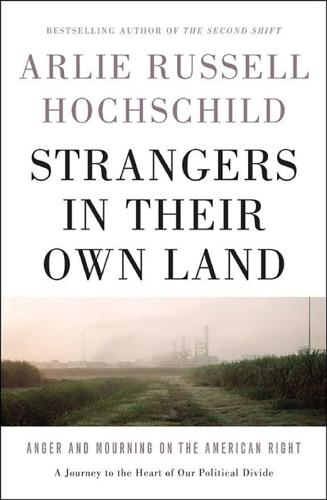
Strangers in Their Own Land: Anger and Mourning on the American Right
by
Arlie Russell Hochschild
Published 5 Sep 2016
The I-10 Bridge “For the first time, the state highway department is talking about closing down the I-10 without building another bridge,” Tritico begins. “They can’t dig down to bedrock because of that spongy EDC-soaked clay. That tells you that they [the mayor of Lake Charles and city engineers] understand the danger. It’s reasonable to be scared of the bridge and to wish there had been better oversight.” Tritico is guided by the precautionary principle, the principle he returns to over and over in debates with Donny. “It’s the principle doctors abide by: first do no harm.” And to apply it to the I-10 you need good government, he feels. “Don’t jump on the company,” Donny fires back. “They didn’t know their pipe was leaking. They didn’t realize that this was going to happen forty years back when they put the pipeline in.”
…
Exposed to danger in some of his jobs, Donny tended to stand brave against it and to honor bravery. Less exposed to danger, Tritico wanted to reduce the need for bravery. Donny said, in essence, “I’m strong. You’re strong. Mother Nature is strong. We can take it.” In this way, he resembled the Cowboy. Tritico valued the precautionary principle and said, in essence, “The real strength we need is to stand up to industry and the almighty dollar.” In the past, Mike had taken risks of a different sort himself. He had heard of a scientist who had testified at a public meeting, pointing out the dangers of a proposed dredging project.
…
Mike himself went to the same meeting hall weeks later to warn against the same project in the presence of the same glaring men. In the end, other men offered to escort him home. One could be brave without being a Cowboy. What was life like in the plants themselves? I wondered. Were they governed by Donny’s Cowboy perspective or Mike Tritico’s precautionary principle? One safety inspector for Axiall—which had an enormous explosion in 2013 and again in 2014—had the job of trying to reduce the risk of accidents. The young man climbed towers and squeezed under machines to check pipes and valves and attach small red flags to pipes that needed replacing or valves tightening.
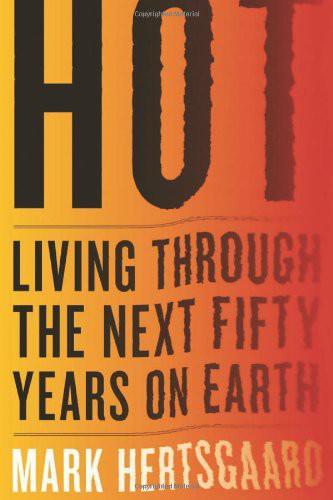
Hot: Living Through the Next Fifty Years on Earth
by
Mark Hertsgaard
Published 15 Jan 2011
Opponents ignored that scientific uncertainty can cut both ways—yes, things can turn out better than expected, but they can also turn out worse. That simple piece of common sense is the basis of the precautionary principle. A cornerstone of modern environmentalism, the precautionary principle holds that policymakers should err on the side of caution when making a decision that carries apparent but uncertain risks. Put differently, the absence of definitive proof that a given activity is dangerous does not prove it is safe. But the precautionary principle has been ignored in the battles over climate policy. Alas, real-world experience and additional scientific observation and analysis have now demonstrated the folly of this course.
…
Sir Nicholas Stern famously remarked in his 2006 study of the economics of climate change that climate change represented "the greatest and widest-ranging market failure ever seen." Prices, government regulations, and other market forces had not only failed to prevent climate change, Stern pointed out, they had encouraged greenhouse gas emissions to grow and grow. Now, we can say that climate change also represents the greatest and widest-ranging failure of the precautionary principle ever seen. In the face of uncertain but potentially catastrophic consequences from increasing emissions, our economic and political leaders chose to pursue business as usual, presuming that the risks would turn out to be manageable. The coming years will instruct us about how manageable they actually are.
…
But now that the WBGU study had calculated the real-world implications of this moral stand, even Schellnhuber doubted that the chancellor would renew her pledge—the numbers were just too dire. "I myself was terrified when I saw these numbers," the German climate adviser told me over a glass of wine later. He said the deadlines could be relaxed somewhat if the world settled for merely a fifty-fifty chance of hitting the 2°C target, "but what kind of a precautionary principle is that?" he asked. "We may as well flip a coin." Likewise, he would much prefer having a three-in-four rather than two-in-three chance of hitting 2°C, but that would give humanity even less time to decarbonize. And yes, one could jettison the per-capita principle—as a political matter, this was the path of least resistance for Western leaders—and thereby gain industrial countries another decade or two to quit carbon.

The Alignment Problem: Machine Learning and Human Values
by
Brian Christian
Published 5 Oct 2020
Sunstein emphasizes the point: “Because time is linear, every decision is, in an intelligible sense, irreversible.” “Taken in this strong form,” he says, “the precautionary principle should be rejected, not because it leads in bad directions, but because it leads in no directions at all.”38 Similar paradoxes and problems of definition haunt the AI safety research community. It would be good, for instance, for there to be a similar kind of precautionary principle: for systems to be designed to err against taking “irreversible” or “high-impact” actions in the face of uncertainty. We’ve seen how the field is coming to wield an explicit, computable version of uncertainty.
…
“Axiomatic Attribution for Deep Networks.” In Proceedings of the 34th International Conference on Machine Learning, 3319–28. JMLR, 2017. Sunstein, Cass R. “Beyond the Precautionary Principle.” University of Pennsylvania Law Review 151 (2003): 1003–58. ———. “Irreparability as Irreversibility.” Supreme Court Review, 2019. ———. “Irreversibility.” Law, Probability & Risk 9 (2010): 227–45. ———. Laws of Fear: Beyond the Precautionary Principle. Cambridge University Press, 2005. Sutton, Richard S. “Integrated Architectures for Learning, Planning, and Reacting Based on Approximating Dynamic Programming.” In Machine Learning: Proceedings of the Seventh International Conference, 216–24.
…
Here the “principle of not choosing an irreversible path when faced with uncertainty” seems like a useful guide. In other domains, though, it’s not so clear cut what something like “irreversibility” means. Harvard legal scholar Cass Sunstein, for instance, notes that the legal system has a similar “precautionary principle”: sometimes the court needs to issue a preliminary injunction to prevent “irreparable harm” that could happen before a case is heard and a verdict is issued. Notions like “irreparable harm” feel intuitive, Sunstein argues, but on closer inspection they teem with puzzles. “As it turns out,” he finds, “the question whether and when . . . violations trigger preliminary injunctions raises deep questions at the intersection of law, economics, ethics, and political philosophy.”37 He explains: “In one sense, any losses are irreversible, simply because time is linear.

The Globalization Paradox: Democracy and the Future of the World Economy
by
Dani Rodrik
Published 23 Dec 2010
Instead, the European Union had applied a broader principle not explicitly covered by the WTO, the “precautionary principle,” which permits greater caution in the presence of scientific uncertainty.11 The precautionary principle reverses the burden of proof. Instead of asking, “Is there reasonable evidence that growth hormones or GMOs have adverse effects?” it requires policy makers to ask, “Are we reasonably sure that they do not?” In many unsettled areas of scientific knowledge, the answer to both questions can be no. The precautionary principle makes sense in cases where adverse effects can be large and irreversible.
…
As the European Commission argued (unsuccessfully), policy here cannot be made purely on the basis of science. Politics, which aggregates a society’s risk preferences, must play the determinative role. The WTO judges did acknowledge a nation’s right to apply its own risk standards, but ruled that the European Union’s invocation of the precautionary principle did not satisfy the criterion of “scientific evidence.” Instead of simply ascertaining whether the science was taken into account, the rules of the SPS Agreement forced them to use an international standard on how scientific evidence should be processed. If the European Union, with its sophisticated policy machinery, could not convince the WTO that it should have leeway in determining its own standards, we can only imagine the difficulties that developing nations face.

Forty Signs of Rain
by
Kim Stanley Robinson
Published 29 May 2004
“Don’t be tempting me to gamble now.” “And besides, Mr. President, there’s also what they call the precautionary principle, meaning you don’t delay acting on crucial matters when you have a disaster that might happen, just because you can’t be one hundred percent sure that it will happen. Because you can never be one hundred percent sure of anything, and some of these matters are too important to wait on.” The President frowned at this, and Strengloft interjected, “Charlie, you know the precautionary principle is an imitation of actuarial insurance that has no real resemblance to it, because the risk and the premium paid can’t be calculated.
…
The President frowned at this, and Strengloft interjected, “Charlie, you know the precautionary principle is an imitation of actuarial insurance that has no real resemblance to it, because the risk and the premium paid can’t be calculated. That’s why we refused to hear any precautionary principle language in the discussions we attended at the UN. We said we wouldn’t even attend if they talked about precautionary principles or ecological footprints, and we had very good reasons for those exclusions, because those concepts are not good science.” The President nodded his “So That Is That” nod, familiar to Charlie from many a press conference. He added, “I always thought a footprint was kind of a simplistic measurement for something this complex anyway.” Charlie countered, “It’s just a name for a good economic index, Mr.
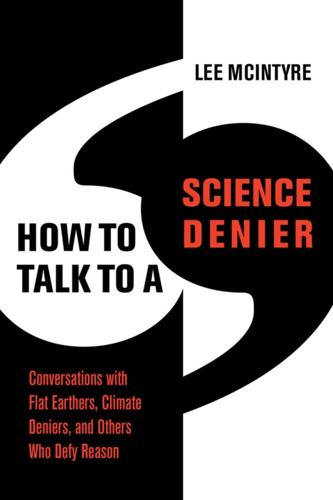
How to Talk to a Science Denier: Conversations With Flat Earthers, Climate Deniers, and Others Who Defy Reason
by
Lee McIntyre
Published 14 Sep 2021
And you’re asking people to be all right with the idea that you’re doing something new with their food. But with climate change, you’re asking them not to do something. You’re asking them to stop. He said it was the precautionary principle, sort of in reverse. You can’t prove that climate change is happening (though the models say it’s a million-to-one shot that it isn’t), but it’s an obvious precaution to stop polluting so much. By contrast, the precautionary principle with GMOs tells you not to mess with our food. I couldn’t see him, but I could hear the satisfaction in Ted’s voice. It was his best point so far. We were getting toward the end of our conversation, so I asked the question I’d had so much luck with at FEIC 2018 and beyond.
…
Then You’re Anti-science, Too,” Washington Post, May 3, 2018, https://www.washingtonpost.com/opinions/are-you-anti-gmo-then-youre-anti-science-too/2018/05/03/cb42c3ba-4ef4-11e8-af46-b1d6dc0d9bfe_story.html; Committee on Genetically Engineered Crops et al., Genetically Engineered Crops: Experiences and Prospects (2016) (Washington, DC: The National Academies Press, 2016), https://www.nap.edu/catalog/23395/genetically-engineered-crops-experiences-and-prospects; Ross Pomeroy, “Massive Review Reveals Consensus on GMO Safety,” Real Clear Science, September 30, 2013, https://www.realclearscience.com/blog/2013/10/massive-review-reveals-consensus-on-gmo-safety.html; Jane E. Brody, “Are G.M.O. Foods Safe?” New York Times, April 23, 2018, https://www.nytimes.com/2018/04/23/well/eat/are-gmo-foods-safe.html. 33. The precautionary principle says that we should be careful of jumping to conclusions, especially ones that might lead to unnecessary risk. We might think that the choice to avoid GMOs could rely heavily on this principle, but perhaps that is a luxury open only to those who live in countries where food is relatively cheap and widely available.
…
There was no credible study that had ever shown GMOs were a harm to human health. So why didn’t he believe that? He said it was because it was “understandable that people would be suspicious of GMOs.” They were “unnatural.” It amounted to humans tampering with the food supply. Next he brought up the “precautionary principle” and closed the loop with what he had been saying yesterday. Imagine someone changing the genes around in a bacteria or virus. It could be a nightmare.10 And now they’re doing something unnatural to the way our food has evolved? “They’re doing something that’s never been done before,” he said.

Global Spin: The Corporate Assault on Environmentalism
by
Sharon Beder
Published 1 Jan 1997
MBD warned the Chemistry Council that environmental activists would use “children and their need for protection to compel stricter regulation of toxic substances” and that “this would reduce all exposure standards to the lowest possible levels. . .” They also warned that the use of the ‘precautionary principle’ would be pushed by activists; therefore the industry should fight against the precautionary principle and “assist the public in understanding the damage it [the principle] inflicts on the role of science in modern development and production. . .”85 According to Peter Montague: Mongoven’s long-term strategy is to characterize the ‘phase out chlorine’ position as ‘a rejection of accepted scientific method,’ as a violation of the chlorine industry’s Constitutional right to ‘have the liberty to do what they choose,’ and in that sense as a threat to fundamental American values.86 MBD recommended a series of steps the Chlorine Chemistry Council should take, including:87 • taking “advantage of the schisms” within the US government administration such as within the EPA and between the EPA and other government agencies • hiring Ketchum Public Relations to “reach out to editorial boards to highlight flaws in the risk assessment portion of the dioxin reassessment” • enlisting “legitimate scientists. . . willing to ask pointed questions” at forthcoming conferences • building alliances on the PVC issue, “beginning with those with an obvious economic stake, e.g. home builders, realtors, product manufacturers, hospitals and others
…
If they could find a few scientists who weren’t 100 per cent convinced that CFCs depleted ozone, they seemed ready to abandon the Montreal Protocol.29 Conservative think-tanks have also challenged other environmental problems. In the CEI’s The True State of the Planet the authors claim that30 • superfund waste sites “pose no real risks to people or the natural environment” • “following the precautionary principle can lead to greater environmental degradation” • modern forestry “helps preserve wildlife habitat” • “commercial logging is not a major cause of deforestation” • we are “entering an age of increasing and unprecedented natural resources abundance” The Cato Institute also publishes a number of books which dispute environmental crises such as ozone depletion.
…
They also warned that the use of the ‘precautionary principle’ would be pushed by activists; therefore the industry should fight against the precautionary principle and “assist the public in understanding the damage it [the principle] inflicts on the role of science in modern development and production. . .”85 According to Peter Montague: Mongoven’s long-term strategy is to characterize the ‘phase out chlorine’ position as ‘a rejection of accepted scientific method,’ as a violation of the chlorine industry’s Constitutional right to ‘have the liberty to do what they choose,’ and in that sense as a threat to fundamental American values.86 MBD recommended a series of steps the Chlorine Chemistry Council should take, including:87 • taking “advantage of the schisms” within the US government administration such as within the EPA and between the EPA and other government agencies • hiring Ketchum Public Relations to “reach out to editorial boards to highlight flaws in the risk assessment portion of the dioxin reassessment” • enlisting “legitimate scientists. . . willing to ask pointed questions” at forthcoming conferences • building alliances on the PVC issue, “beginning with those with an obvious economic stake, e.g. home builders, realtors, product manufacturers, hospitals and others. . .” • taking steps “to discredit the precautionary principle within the more moderate environmental groups as well as within the scientific and medical communities. . .” • directing a programme to “pediatric groups throughout the country and to counter activist claims of chlorine-related health problems in children. . .” • getting medical associations on side by getting a panel of eminent physicians to emphasize the role of chlorine “as a key chemical in pharmaceuticals and medical devises” and by stimulating peer-reviewed articles in medical journals on “the role of chlorine chemistry in treating disease

Life at the Speed of Light: From the Double Helix to the Dawn of Digital Life
by
J. Craig Venter
Published 16 Oct 2013
In a similar vein, creatures that are not “normal” tend to be seen as monsters, as the product of an abuse of power and responsibility, as most vividly illustrated by the story of Frankenstein.38 Still, it is important to maintain our sense of perspective and of balance. Despite the knee-jerk demands for ever more onerous regulation and control measures consistent with the “precautionary principle”—whatever we mean by that much-abused term39—we must not lose sight of the extraordinary power of this technology to bring about positive benefits for the world. I am not alone in believing that overregulation can be as harmful as laxness in that regard. I was glad to see that my own view was echoed in the response to my work on the first working synthetic genome, when the Presidential Commission for the Study of Bioethical Issues released a report in December 201040 entitled New Directions: The Ethics of Synthetic Biology and Emerging Technologies.
…
Biotechnology Research in an Age of Terrorism: Confronting the ‘Dual Use’ Dilemma (Washington, D.C.: National Academies Press, 2004). 37. Wohlsen, Biopunk. 38. Baldwin, et. al, Synthetic Biology, p. 139. 39. There are many formulations. See Kenneth R. Foster, Paolo Vecchia, and Michael H. Repacholi. “Science and the precautionary principle.” Science 288, no. 5468 (2000): pp. 979–81. 40. www.bioethics.gov/sites/default/files/news/PCSBI-Synthetic-Biology-Report-12.16.10.pdf. 41. Isaac Asimov. “Introduction.” In The Rest of the Robots (New York: Doubleday, 1964). Chapter 11 1. Arthur Conan Doyle. “The Disintegration Machine” (1929).
…
J., 3 Orbach, Raymond Lee, 75 order, 3–4, 40, 44 organic (chemistry), 14–5 meaning of, 11–2 Oró, Joan, 132 L’Osservatore Romano, 128 Oster, George, 46 Outer Space Treaty, 184 overpopulation, 158–9 Pääbo, Svante, 87 Palca, Joe, 66 Pan, Jian-Wei, 162 pandemics, 67, 81, 153, 155, 166–7, 169–70 Parkinson’s disease, 43 particle types, 163 Pasteur, Louis, 16 Patrinos, Ari, 75 Pauly, Philip J., Controlling Life: Jacques Loeb and the Engineering Ideal in Biology, 9 penicillin, 170–1 Perrin, Jean Baptiste, 45 phage therapy, 172–4 See also synthetic phages phi X 174, 49, 62–5, 69–78 circular DNA of, 63–5, 72, 74 composition of, 63 photosynthesis, 36–7, 69, 100 Pieper, Rembert, 101 Pillinger, Colin, 180 planetary protection, 184 PlyC, 175–6 Podolsky, Boris, 161 polyethylene glycol (PEG), 105 Popular Mechanics, 56 Portrait of the Artist as a Young Man (Joyce), 125 precautionary principle, 156 Presidential Commission for the Study of Bioethical Issues, 156–8 Proceedings of the National Academy of Sciences, 65, 77 proof by synthesis, 18–9 protein folding, 41–2 protein synthesis, 136–7 proteins, 34–6 in cells, 108, 138 as genetic material, 4, 24, 26–7 half-life of, 41 as hardware of life, 34, 47 life and degradation of, 43 and radiation, 90 ribosomes, 37–9 structured by DNA, 46 and temperature, 55 understanding of, 28 zinc fingers, 150 quantum internet, 162 quantum mechanics, 37 quantum theory, 161 Racaniello, Vincent, 67 radiation, 90, 181–2 Ramakrishnan, Venkatraman, 38–9 Ramberg, Peter, 14 Rappuoli, Rino, 167 Ray, Thomas S., 22, 129 Registry of Standard Biological Parts, 147 religion, 79–82, 130 See also belief; vitalism responsibility See ethics restriction enzymes, 31–2 Rettberg, Randy, 146 reverse transcriptase, 66–7 Reynolds, Jacqueline, 37 ribosomes, 37–9 ribozymes, 132 Richardson, Toby, 164 Riggs, Arthur, 33 RNA, 30, 39–40 first genetic material, 132–4 mRNA, 37 tRNA, 31, 37, 48 viruses copied, 67 Roberts, Richard J., 133 Roddenberry, Gene, 160 Rose, Irwin A., 43 Rosen, Nathan, 161 Rowling, J.

In Our Own Image: Savior or Destroyer? The History and Future of Artificial Intelligence
by
George Zarkadakis
Published 7 Mar 2016
The first, and most influential, idea is that scientists are passionate yet simple-minded idealists; that they aim to solve a big problem without working out in advance the moral or other consequences of their actions. This is the idea that runs through every discussion about the future of technology. It provides the emotional underpinning to the so-called ‘precautionary principle’, whereby one has to consider carefully the potential risks of an action before acting. The precautionary principle is used as a war banner in the campaign to prevent Frankenstein’s monster from ever becoming a reality. Unfortunately, the precautionary principle does not – and cannot – take into consideration the risks of inaction; and this is where every debate between the benefits and consequences of technology becomes heated.
…
A. 61–2, 68 Hofstadter, Douglas 186–8 Hohlenstein Stadel lion-man statuette 3–5, 19–20 holistic approach to knowledge 174–5 holistic scientific methods 41–2 Holocene period 10 Holy Scripture, authority of 113–14 homeostasis 173 Homo erectus 6–7, 8, 10 Homo habilis 6, 12 Homo heidelbergensis 7 Homo sapiens archaic species 7, 8, 10 emergence of modern humans 8 Homo neanderthalensis (Neanderthals) 4, 7–8, 9–10 Homo sapiens sapiens 9–10 human ancestors aesthetic practices 9 archaic Homo sapiens 7, 8, 10 arrival in Europe 3–5 australopithecines 5, 6, 22 changes in the Upper Palaeolithic Age 9–10, 11 common ancestor with chimpanzees 5 emergence of art in Europe 3–5 emergence of modern humans 8 exodus from Africa 3–4, 6–7, 8–9 Homo erectus 6–7, 8, 10 Homo habilis 6, 12 Homo heidelbergensis 7 Homo sapiens 7, 8, 10 Homo sapiens sapiens 9–10 in Africa 5–7 Neanderthals (Homo neanderthalensis) 4, 7–8, 9–10 Human Brain Project (HBP) xiv–xvi, 164–5, 287 see also brain (human) human culture, approaches to understanding 74–9 human replicas, disturbing feelings caused by 66–73 humanity becoming like machines (cyborgs) 79–85 future of 304–17 Hume, David 139–40 humors theory of life 31–4 humour, and theory of mind 54 Humphrey, Nicholas 11 hunter-gatherer view of the natural world 20–2 hydraulic and pneumatic automata 32–6 IBM (International Business Machines) 230, 263, 264 Ice Age Europe 4, 10, 21–2 iconoclasm 67 idealism versus materialism 92–4 identity theory 144–5 imagined world of the spirits 22–3, 25, 27 inanimate objects, projection of theory of mind 15–18 Incompleteness Theorem (Gödel) 180, 186, 206–9, 211–16 inductive logic 196, 197 information disembodiment of 146–52 significance of context 151–2 the mind as 123–5 information age 232–4 information theory 147–52 Ingold, Tim 20 intelligence, definitions of 48–9, 52 intelligent machines as objects of love 48–59 Internet brain metaphor 43 collection and manipulation of users’ data 250–3 origins of 238 potential for sentience 214–15 Internet of things 251–3 intuition 200, 211 Iron Man (film) 82 Ishiguro, Hiroshi 72 Islam 102 Jacquard loom 225 James, William 162 Johnson, Samuel 140 Kasparov, Garry 263 Kauffman, Stuart 295 Kempelen, Wolfgang von 37 Kline, Nathan 79 Koch, Christof 167–8 Krauss, Lawrence 244–5 Krugman, Paul 269 Kubrick, Stanley 56, 257 Kuhn, Thomas 29, 75 Kurzweil, Ray 126, 270–1 Lang, Fritz 50 language and genesis of the modern mind 13–15 and human relationship with objects 15–18 evolution of 13–15 naming of objects 16–17 LeCun, Yann 255 Leibniz, Gottfried Wilhelm 116–17, 218–20 Lettvin, Jerry 293 liberty, end of 313–17 life algorithms of 292–6 origins of 181–3 Life in the Bush of Ghosts (Tutuola) 19 linguistics, descriptions of reality 75 lion-man statuette of Stadel cave 3–5, 19–20 Llull, Ramon (Doctor Illuminatus) 218 Locke, John 139 locked-in syndrome 307 logic x–xi, 195–202 logical substitution method 180, 183, 186 Lokapannatti (early Buddhist story) 34 London forces 107 love conscious artefacts as objects of 48–59 human need for 55–6 human relationships with androids 53–9 Lovelace, Ada 62, 226–7, 228 Luddites 268 Machine Intelligence Research Institute 58–9 machine metaphor for life 36–8 Magdalenian period 21 magnetoencephalography (MEG) 159–60, 161 Maillardet, Henri 218 Marconi, Guglielmo 239 Maria (robot in Metropolis) 50, 51 Marlowe, Christopher 63 Mars colonisation 291 Marx, Groucho 205 materialism versus idealism 92–4 mathematical dematerialisation view 92 mathematical foundations of the universe 103–6 mathematical reflexivity 186–7 mathematics 31 formal logical systems 200–11 views on the nature of 136 Maturana, Humberto 294 McCarthy, John 256, 307 McCorduck, Pamela 45, 67 McCulloch, Warren S. 36, 175, 176–8, 256, 293 Mead, Margaret 175 mechanical metaphor for life 36–8 mechanical Turk 37 medicine, development of 31–2 meditation 157 memristors 286–7 Menabrea, Luigi 226, 227 Mesmer, Franz Anton 40 mesmerism 40 Mesopotamian civilisations 30 metacognition 184 metamathematics 202, 205, 207 metaphors confusing with the actual 44–5 for life and the mind 28–47 in general-purpose language 75 misunderstanding caused by 308–13 Metropolis (1927 film) 50, 51 Middle Palaeolithic 6 Miller, George 154, 155 Milton, John 1 mind altered states 110, 111 as pure information 123–5 aspects of 85–7 debate over the nature of 91–4 disembodiment of 42 empirical approach 143–6 quantum hypothesis 106–9 scientific theory of 152–3 search for a definition 189–91 self-awareness 86–7 separate from the body 110–15 view of Aristotole 137–8 mind-body problem 32, 114–19, 129–31 Minsky, Marvin 178, 256 modern mind big bang of 10, 12–15 birth of 10–15 impacts of the evolution of language 13–15 monads 117, 119 monism versus dualism 92–3 Moore’s Law 244–5, 263, 270–1, 287 moral decision-making 277–8 Moravec paradox 275–6 Morris, Ian 222 Morse, Samuel 42 mud metaphor for life 29–31, 45 My Life in the Bush of Ghosts (music album) 19 Nabokov, Vladimir 167 Nagel, Thomas 120, 121 Nariokotome boy 7 narratives 18–27, 75 see also metaphor Neanderthals (Homo neanderthalensis) 4, 7–8, 9–10 Negroponte, Nicholas 243–4 neopositivism 141 neural machines 282–7 neural networks theory 36 neural synapses, functioning of 117–19 neuristors 286–7 neurodegenerative diseases xiii–xiv, 163–4 Neuromancer (Gibson) 36 neuromorphic computer archtectures 286–7 neurons, McCulloch and Pitts model 177–8 neuroscience 158, 306–8 Newton, Isaac 38, 103 Nike’s Fuel Band 81 noetic machines (Darwins) 284 nootropic drugs 81 Nouvelle AI concept 288 Offray de La Mettrie, Julien 37 Ogawa, Seiji 158–9 Omo industrial complex 6 On the Origin of Species (Darwin) 289–90 ‘ontogeny recapitulates phylogeny’ concept 10 Otlet, Paul 239–40 out-of-body experiences 110–11 Ovid 49, 64 Paley, William 289 panpsychism 92, 117, 252 paradigm shifts 75 in the concept of life 29–47 Pascal, Blaise 219–20 Penrose, Roger 106–9, 117, 211–12, 214 Pert, Candace B. 170 physics, gaps in the Standard Model 105 Piketty, Thomas 267, 269 pineal gland 115–16 Pinker, Steven 13, 275 Pinocchio story 56 Pitts, Walter 36, 177–8, 256, 293 Plato 134, 143, 152, 176, 189, 305 central role of mathematics 103–6 idea of reality 78, 83 influence of 95–106 notion of philosopher-kings 98–9 separation of body and mind 112 The Republic 97–101, 309, 310 theory of forms 99–101, 104, 106 Platonism 101–2, 135–7, 139, 142, 146, 147, 182, 189, 190, 242–3, 296 Pleistocene epoch 7 Poe, Edgar Allan 79 Polidori, John William 60, 62 Popov, Alexander 239 Popper, Karl 98 Porter, Rodney 282 posthuman existence 147 postmodernism 208 post-structuralist philosophers 75–9 precautionary principle 64–5 predicate logic 198–200, 206 Principia Mathematica 205–6, 207 Prometheus 29–30, 63–4 psychoanalysis 50 psychons 118, 119 Pygmalion narrative 49–52 qualia of consciousness 120–3, 157 Quantified Self movement 81–2 quantum hypothesis for consciousness 106–9 quantum tunnelling 118–19 Ramachandran, Vilayanur 70 rationalism 116 Reagan, President Ronald 237 reality, impact of acquisition of language 15–18 reductionism 41–2, 104–5, 121, 184 reflexivity 183–4, 186–9 religions condemnation of human replicas 67 seeds of 22–3, 25–6 Renaissance 34, 103, 139, 218 RepRap machines 290 res cogitans (mental substance) 38, 113–14 res extensa (corporeal substance) 38, 113–14 resurrection beliefs 126–7 RoboCop 80 robot swarm experiments 287–8 robots human attitudes towards 50–1 rebellion against humans 53, 57–9 self-replication 289–92 see also androids Rochester, Nathaniel 256 Romans 31 Rubenstein, Michael 287–8, 291 Russell, Bertrand viii, 92, 198, 204, 205–6, 207, 208, 215 Russell, Stuart 270 Sagan, Carl 133 Saygin, Ayse Pinar 69 science as a cultural product 75–9 influence of Aristotle 134–8 influence of Descartes 113–19 influence of Plato see Plato scientific method 102–5, 121 scientific paradigms 75 scientific reasoning, as unnatural to us 133–4, 137 scientific theory, definition 166, 196 Scott, Ridley 53 Searle, John, Chinese Room experiment 52, 71 Second Commandment (Bible) 67 second machine age, impact of AI 266–9 Second World War 234–6 self-awareness 16, 86–7, 157, 215–16, 273–5 self-driving vehicles 263–4 self-organisation in cybernetic systems 273–4 in living things 292 self-referencing 186–9, 215–16 see also reflexivity self-referencing paradoxes 204–6 self-replicating machines/systems 179–82, 289–92 sensorimotor skills, deficiency in AI 275–6 servers, dependence on 245–9 Shannon, Claude 147–52, 154, 176, 230–1, 256 Shaw, George Bernard Shaw 49–50 Shelley, Mary, Frankenstein 40, 60–5, 165 Shelley, Percy Bysshe 60, 62, 63–4 Shickard, Wilhem 219 Silvester II, Pope 35 Simmons, Dan 160 simulated universe concept 127–9 smart drugs 81 Snow, C.

Business Lessons From a Radical Industrialist
by
Ray C. Anderson
Published 28 Mar 2011
It’s true now with the so-called controversy over global warming. Let’s just wait, says the sanguine regulator. Well, waiting for the last shred of evidence is, in my view, a very foolish thing to do. As I understand the precautionary principle, it says that when the risk of not acting overshadows the cost of acting, it is time to act. When we slow down in our cars before taking a blind curve, that is the precautionary principle in action. It applies to business practices, too; and governments are not exempt either. If sales fall, if profit margins erode, if customers start going elsewhere, no good business person is going to wait very long to find out what is going on and make changes.
…
But I think there are also very few who would say they were not exacerbated and fueled by abnormally high sea surface temperatures. Katrina blew up from a category 1 hurricane to a category 5 in just a few days. Wilma did it in just one day. So, why was the Gulf of Mexico abnormally warm? The precautionary principle says we must not assume it was an accident. We must ask, What is going on? There are very few scientists who would not agree that hurricanes and floods, storms and droughts, will become more frequent and more fierce, the weather more erratic (the bane of every farmer!) as the atmosphere and oceans, with that thirty-year lag, grow warmer still in the years ahead.
…
Boone Pike, Judy Pinchot, Gifford and Libba Play to Win team-building exercises pollutants in manufacturing list of, from the old Interface substitutes for polylactic acid (PLA) population, environmental impact of population crash positive trends potato chips, environmentally sound production of poverty, global, challenge of power purchasing agreement (PPA) precautionary principle president actions that can be taken without congressional approval to mitigate climate change executive powers of leadership from new, advice for Presidential Climate Action Project (PCAP) President’s Council on Sustainable Development (PCSD) Price-Anderson Act problems, interconnected problem-solving, Einstein on Procter & Gamble public-private partnerships PVCs PZEV vehicles QUEST: Quality Utilizing Employees’ Suggestions and Teamwork Quinn, Daniel Ishmael rail, transportation by rainfall, run off from eroded land raw materials, reducing the amount and weight of RecycleBank RecycleBank Dollars recycled materials contaminated, expense of using price of replacing virgin raw materials recycling advantages of closed-loop by consumers incentives for nature’s way 100 percent goal ReEntry 2.0 regulations accused of shackling the free market effect of slowing environmental harm lag behind science regulators, keeping them at bay, with sustainability promise regulatory compliance reindeer, population crash of religion failure of institutions to solve environmental problems and science, conflict renewable energy goal of 100 percent renewable energy credits (REC) Re:Source Americas resources assumption that they are unlimited efficient use of peaking and decline of running out of respect, vs. autocratic management Riordan, Tim Rittenhouse, William Riverkeeper Robèrt, Karl-Henrik The Natural Step Rockland React-Rite Interface facility Rogers, Jim Roosevelt, Franklin Roosevelt, Theodore Roper, Anita Ruben, Andy St.

A Hacker's Mind: How the Powerful Bend Society's Rules, and How to Bend Them Back
by
Bruce Schneier
Published 7 Feb 2023
Luke Halpin and Doug Dannemiller (2019), “Artificial intelligence: The next frontier for investment management firms,” Deloitte, https://www2.deloitte.com/content/dam/Deloitte/global/Documents/Financial-Services/fsi-artificial-intelligence-investment-mgmt.pdf. Peter Salvage (March 2019), “Artificial intelligence sweeps hedge funds,” BNY Mellon, https://www.bnymellon.com/us/en/insights/all-insights/artificial-intelligence-sweeps-hedge-funds.html. 244the precautionary principle: Maciej Kuziemski (1 May 2018), “A precautionary approach to artificial intelligence,” Project Syndicate, https://www.project-syndicate.org/commentary/precautionary-principle-for-artificial-intelligence-by-maciej-kuziemski-2018-05. 60. GOVERNANCE SYSTEMS FOR HACKING 245AI technologists and industry leaders: Nick Grossman (8 Apr 2015), “Regulation, the internet way,” Data-Smart City Solutions, Harvard University, https://datasmart.ash.harvard.edu/news/article/white-paper-regulation-the-internet-way-660. 246The Collingridge dilemma: Adam Thierer (16 Aug 2018), “The pacing problem, the Collingridge dilemma and technological determinism,” Technology Liberation Front, https://techliberation.com/2018/08/16/the-pacing-problem-the-collingridge-dilemma-technological-determinism. 247its processes and rulings: Stephan Grimmelikhuijsen et al.
…
And who decides? If you think government should be small enough to drown in a bathtub, then you probably think hacks that reduce government’s ability to control its citizens are usually good. But you still might not want to substitute technological overlords for political ones. If you believe in the precautionary principle, you want as many experts testing and judging hacks as possible before they’re incorporated into our social systems. And you might want to apply that principle further upstream, to the institutions and structures that make those hacks possible. The questions continue. Should AI-created hacks be governed locally or globally?

What If We Get It Right?: Visions of Climate Futures
by
Ayana Elizabeth Johnson
Published 17 Sep 2024
Arguably, of all technologies, the transformative power of artificial intelligence is unprecedented. Its emergence on the scene feels like a beast has been unleashed—and not a beast with a shyly charming Snuffleupagus vibe. The release of generative AI goes against all my training to adhere to the precautionary principle;[*78] it seems to have outpaced our moral frameworks, and certainly our regulatory ones. What would it look like to, as a society, weigh the costs and benefits of how we proceed, as opposed to having tech executives decide for us? Since AI is here, and almost certainly here to stay, how might we tame this beast, and even put it to work on climate solutions?
…
And so there have always been laws premised on the idea that there are some essential resources that should and must belong to everyone. The idea of a public trust—stewardship for future generations—is an old idea in the law. Of course, it’s fundamental to an Indigenous worldview, but it also finds its way into American law in various ways, including through the precautionary principle that influences some statutes. But the overwhelming worldview in this country has been, “I’ve got what’s mine, don’t mess with me.” Rights of nature challenges that. It no longer assumes humans as the rightfully dominant force. Instead, it puts us into kinship relationships with all of the species on Earth.
…
Based on that quorum of mentions, friend/architect/philosopher Oana Stănescu and I put our heads together to create such an oath. It is not solely focused on how we might best comport ourselves professionally. Although that is a powerful place to start, what this moment calls for is beyond any professional practice, and broadly harkens back to the precautionary principle. This oath aspires to open up conversations, and to make space for celebration, commitment, and accountability. We need new rituals for our climate-changed world: What food and music, what locations and relationships, what aspects of ceremony might you want to incorporate into your devotions, into making or deepening your vow to be part of climate solutions?
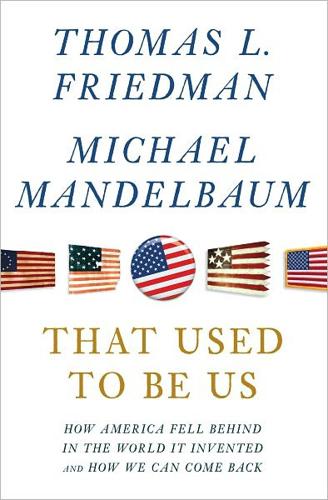
That Used to Be Us
by
Thomas L. Friedman
and
Michael Mandelbaum
Published 1 Sep 2011
Soon after Suskind’s book was published, the legal scholar Cass Sunstein, then at the University of Chicago, pointed out that Cheney seemed to be endorsing the same “precautionary principle” that animated environmentalists. Sunstein wrote in his blog: “According to the Precautionary Principle, it is appropriate to respond aggressively to low-probability, high-impact events—such as climate change. Indeed, another vice president—Al Gore—can be understood to be arguing for a precautionary principle for climate change (though he believes that the chance of disaster is well over 1 percent).” Cheney’s instinct on nuclear weapons in the hands of rogue states is the right framework for thinking about the climate issue.
…
Ross personal computers (PCs) Pew Charitable Trusts; Center on the States; Clean Energy Program; Research Center for the People & the Press Philadelphia Eagles football team physics; laws of; waging war on Picasa PIMCO Pink, Daniel Planned Parenthood Plutarch Poland Policker, Shai Pope, Jeremy C. Porter, Captain Wayne Portugal Potter, David PowerPoints Pradesh, Andhra Precautionary Principle Price of Liberty, A (Hormats) Price of Loyalty, The (Suskind) Prince, Charles Princeton University Procter & Gamble Progressive era Progressive Party ProPublica Public Policy Institute of California public-private partnerships Puranik, Arjun Ranganath R Race Between Education and Technology, The (Goldin and Katz) Race to Nowhere (movie) Rajan, Raghuram Rand, Ayn Rapert, Molly Rasmussen Reports Rauh, Joshua Reagan, Ronald recycling Red Flags or Red Herrings?
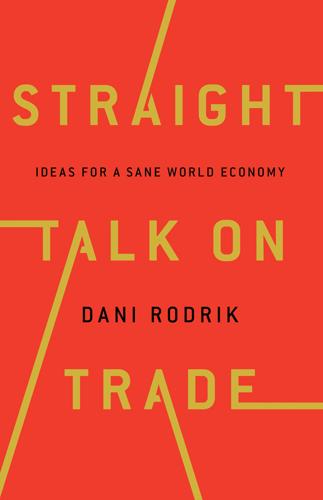
Straight Talk on Trade: Ideas for a Sane World Economy
by
Dani Rodrik
Published 8 Oct 2017
The European Union argued that it had applied a broader principle not explicitly covered by the World Trade Organization, the “precautionary principle,” which permits greater caution in the presence of scientific uncertainty. The precautionary principle reverses the burden of proof. Instead of asking, “Is there reasonable evidence that growth hormones, or GMOs, have adverse effects?” it requires policy makers to ask, “Are we reasonably sure that they do not?” In many unsettled areas of scientific knowledge, the answer to both questions can be no. Whether the precautionary principle makes sense depends both on the degree of risk aversion and on the extent to which potential adverse effects are large and irreversible.

Capitalism 3.0: A Guide to Reclaiming the Commons
by
Peter Barnes
Published 29 Sep 2006
No one at the moment puts future generations first. That’s Job Number One for the commons sector. Reinventing the Commons | 75 In practice, this means trustees of common property should be legally accountable to future generations. (We’ll see how this might work in chapter 6.) They should also be bound by the precautionary principle: when in doubt, err on the side of safety. And when faced with a conflict between short-term gain and long-term preservation, they should be required to choose the latter. THE MORE THE MERRIER Whereas private property is inherently exclusive, common property strives to be inclusive. It always wants more co-owners or participants, consistent with preservation of the asset.
…
Appendix Key Features of Corporate, State, and Commons Sectors CORPORATIONS STATE COMMONS Key functions Making things; seeking shortterm profit Defining, assigning, balancing rights Sharing gifts and preserving them for future generations Key institutions Corporations; labor unions Legislature Executive Judiciary Ecosystem trusts, permanent funds, open access commons, intergenerational pacts, community commons Key human actors Directors Politicians Trustees Accountable to Share owners Voters (donors) Future generations, living citizens equally, nonhuman species, communities Algorithms Maximize profit; distribute earnings to existing shareholders Win most votes (raise most money) Preserve asset; live off income, not principal; follow the precautionary principle; the more beneficiaries the better Time horizon Next quarter Next election Next generation Ownership regime One dollar, one share One person, one vote (one dollar, one vote) One person, one share Transferable ownership Yes Voting rights: No Property: Yes Beneficial rights: No Usage rights: Yes From each according to . . .
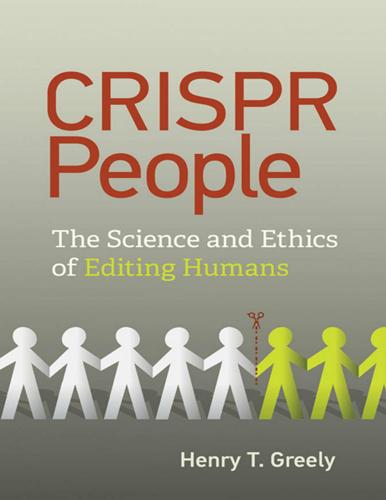
CRISPR People: The Science and Ethics of Editing Humans
by
Henry T. Greely
Published 22 Jan 2021
But imposing a total ban on this tool’s use by other, willing people, in all circumstances, requires some other kind of argument. At least two other, less absolute, arguments for a total ban exist. One is a strong form of the precautionary principle—that we should not allow such a change unless we are confident that it will have good consequences. I accept the precautionary principle in a weaker form—we should take the time and care to examine the likely consequences of a major change and to have concluded it is not unreasonably risky before implementing it. But I do not accept the strong form. As a general matter, it seems to me to fail to acknowledge that not acting is itself an action, with imperfectly predictable results.
…
See also Mendelian genetics Nuffield Council on Bioethics, 71, 198 2016 report, 71 2018 report, 71–73, 75, 104, 169, 170, 181, 204, 206 Nuremberg Code, 76, 147, 149 Off-label use, 284–285 Off-target, 10–11, 114, 150–151, 163, 192 Olson, Steve, 67 Oviedo Convention, 86–88, 207 Oviedo Protocol, 191 Pando, 26 Parthenogenesis, 26–27 Patent, 53, 233, 28, 284 and CRISPR, 43–46, 64 PCSK9, 11–12, 136, 138–139, 143, 159, 236, 238 Peacock Program, 7–8 Pei Duanqing, 134, 168 PGD. See Preimplantation genetic diagnosis Porteus, Matt, 42, 106–107, 122, 126–130, 134, 142, 168, 178–179 Precautionary principle, 271 Preclinical trials, 248–262 Preimplantation genetic diagnosis, 163, 208, 215, 223, 227–235, 237, 240, 245, 275–277, 279 Princess Bride, The, 144 Proceedings of the National Academy of Sciences, 40–41, 59 Public health, 238 Qin Jinzhou, 20, 95, 118 Qiu, Jane, 137, 198–200 Quake, Steve, 7–8, 11, 14–16, 98–99, 121, 124–125, 129–130, 132–134, 142, 168 biography, 125–126 Raiders of the Lost Ark, 209 Rebrikov, Denis, 190–193 response of Russian scientists to, 192 Recombinant Activities Committee (RAC), 59 Regalado, Antonio, 3, 88, 91–96, 100–102, 129, 138, 144, 158–159, 168 Renzong, Qiu, 199 Reproductive tourism.
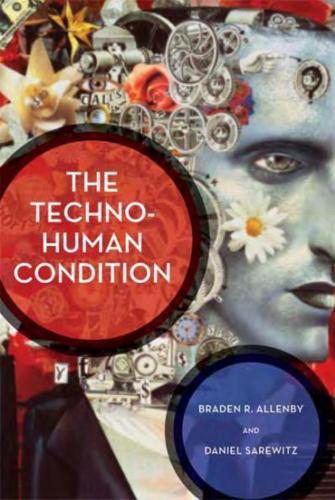
The Techno-Human Condition
by
Braden R. Allenby
and
Daniel R. Sarewitz
Published 15 Feb 2011
Oh, sure, there have been plenty of attempts to paper over this gap by applying existing ethical approaches to ethics at the level of Earth systems and Level III technology systems. (We will call ethics for Level III Earth systems "macroethics.") A well-known example among environmental and sustainability thinkers is the Precautionary Principle, stated in the UN's 1982 World Charter for Nature: "[W]here potential adverse effects are not fully understood, the activities should not proceed." Aldo Leopold provides another example related to sustainability: "A thing is right when it tends to preserve the integrity, stability and beauty of the biotic community.
…
R., 80 Medical Journal of Australia, 122 Memory-enhancing pharmaceuticals, 113 Mexico, 125, 133 Microsoft, 173 Millenarian utopianism, 120 Modafinil, 24 Moltke, H. von, 75, 105, 106 Money, 80, 81 Moravec, H., 8, 18 Mumford, L., 33, 36, 45 Mutually assured destruction, in cyberspace, 140 Nanotechnology, 8, 80, 178 National Institute of Health, 89 National Science Foundation, 8, 89,90 Natural Born Cyborgs, 9 Nature, as sacred, 100ff Nature's Metropolis, 115 Nazi Germany, 22, 31,121,131 Needle gun, 75 Negligible senescence, engineered,82 Neoconservatives, 91, 110 Neuropharmaceuticals, 3, 18, 24,88,95 New Atlantis, 18 New Jerusalem, 11, 77, 78 New Scientist, 122, 124 Newton, I., 101, 173, 179 Nitrogen cycle, 10, 110, 192 Noble, D., 18 Notice-and-comment rulemaking, 165 Nuclear power, 174ff Nuclear winter, 67, 78 Occupational health and safety, 52 Office of Naval Research, 89 Olympic Games, 3, 4 Oppenheimer,]. R., 10, 11 Orwell, G., 187ff Ozone depletion, 163 Pangloss, Dr.,160, 172 Panic of 2008, 114 "Passage to India," 77 Pielke, R., 170 Pol Pot, 121 Polio, 47 Pool, R., 167 Precautionary Principle, 181 Predator drone, 144, 150, 151, 155 President's Council on Bioethics, 21 Principles of technological evolution,79 Progress, 31ff, 43 Project for the New American Century, 91 Index Prosthetic arms, 17 Proust, M., 149 Prussia, 75££, 130 Prussian Railway Fund, 75 Radiation, 66, 67 Railroads, 3, 71ff and American exceptionalism, 74-77 and industrial capitalism, 73 and principles of technological evolution, 79ff and Prussian military, 75 and psychological dislocation, 73, 74 and Schlieffen Plan, 76 and telegraph technology 72, 73 and time, 34, 71, 72 "Railroad singularity," 64 Raven drone, 150 Reagan, Ronald, 114 Reformation, 3,118 Registry of Standard Biological Parts, 68 Reliability, of organizations, 167 Religion of Technology, The, 18 Reproduction, assisted, 57 "Responsibility to protect," 137 "Reverse adaptation," 45 Revolutions in civilian systems (RCS),140ff Revolutions in military operations and culture (RMOC), 140ff Revolutions in military technologies (RMT), 137ff Revolutions in nature of conflict (RNC), 137££ Rhodes, R., 182 Rittel, J., 109 221 Robotics, 8, 80, 178 Robots, military, 150 Roll Back Malaria campaign, 48,49 Roman Empire, 132 Rousseau, J.

The Singularity Is Near: When Humans Transcend Biology
by
Ray Kurzweil
Published 14 Jul 2005
The window for malevolent nanobots will ultimately be closed by strong artificial intelligence, but, not surprisingly, "unfriendly" AI will itself present an even more compelling existential risk, which I discuss below (see p. 420). The Precautionary Principle. As Bostrom, Freitas, and other observers including myself have pointed out, we cannot rely on trial-and-error approaches to deal with existential risks. There are competing interpretations of what has become known as the "precautionary principle." (If the consequences of an action are unknown but judged by some scientists to have even a small risk of being profoundly negative, it's better to not carry out the action than risk negative consequences.)
…
CHAPTER SEVEN Ich bin ein Singularitarian272 Still Human? The Vexing Question of Consciousness 276 Who Am I? What Am I? 280 The Singularity as Transcendence 283 CHAPTER EIGHT The Deeply Intertwined Promise and Peril of GNR286 Intertwined Benefits. . . 289 . . . and Dangers 290 A Panoply of Existential Risks 292 The Precautionary Principle. The Smaller the Interaction, the Larger the Explosive Potential. Our Simulation Is Turned Off. Crashing the Party. GNR: The Proper Focus of Promise Versus Peril. The Inevitability of a Transformed Future. Totalitarian Relinquishment. Preparing the Defenses 296 Strong AI. Returning to the Past?
…
This is one reason we're hearing increasingly strident voices demanding that we shut down the advance of technology, as a primary strategy to eliminate new existential risks before they occur. Relinquishment, however, is not the appropriate response and will only interfere with the profound benefits of these emerging technologies while actually increasing the likelihood of a disastrous outcome. Max More articulates the limitations of the precautionary principle and advocates replacing it with what he calls the "proactionary principle," which involves balancing the risks of action and inaction.24 Before discussing how to respond to the new challenge of existential risks, it's worth reviewing a few more that have been postulated by Bostrom and others.

Propaganda and the Public Mind
by
Noam Chomsky
and
David Barsamian
Published 31 Mar 2015
The New York Times report stated it pretty accurately.12 The United States was virtually alone most of the time in the negotiations leading to the compromise. The U.S. was joined by a couple of other countries which would also expect to profit from biotechnology exports. The United States is against most of the world over a very significant issue, what’s called the “precautionary principle.” That means, is there a right for people to say, I don’t want to be a subject in some experiment you’re carrying out? At the personal level, that is permissible. For example, if somebody comes into your office from the university biology department and says, You’re going to be a subject in an experiment that I’m carrying out.
…
According to those rules, the experimental subjects have to provide scientific evidence that it’s going to harm them, or else the transcendent value of corporate rights prevails and they can do what they want. That’s what Ed Herman calls “producer sovereignty.”13 Europe and most of the rest of the world insisted on the precautionary principle, that is, the right of people to say, I don’t want to be an experimental subject. I don’t have scientific proof that it’s going to harm me, but I don’t want to be subjected to that. I want to wait until it’s understood. That’s a very clear indication of what’s at stake, an attack on the rights of people to make their own decisions over things even as simple as whether you’re going to be an experimental subject, let alone controlling your own resources or setting conditions on foreign investment or transferring your economy into the hands of foreign investment firms and banks.

The Rational Optimist: How Prosperity Evolves
by
Matt Ridley
Published 17 May 2010
Quality-of-life in individualistic society: A comparison of 43 nations in the early 1990’s. Social Indicators Research 48:157–86. p. 28 ‘some pressure groups may have exacerbated real hunger in Zambia’. Paarlberg, R. 2008. Starved for Science. Harvard University Press. p. 28 ‘The precautionary principle’. Ron Bailey points out that most renditions of the precautionary principle boil down to the injunction: ‘Never do anything for the first time.’ http://reason.com/archives/2003/07/02/making-the-future-safe. p. 29 ‘By the same age, human hunter-gatherers have consumed about 20 per cent of their lifetime calories, but produced just 4 per cent.’
…
It is precisely because so much human betterment has been shown to be possible in recent centuries that the continuing imperfection of the world places a moral duty on humanity to allow economic evolution to continue. To prevent change, innovation and growth is to stand in the way of potential compassion. Let it never be for gotten that, by propagating excessive caution about genetically modified food aid, some pressure groups may have exacerbated real hunger in Zambia in the early 2000s. The precautionary principle – better safe than sorry – condemns itself: in a sorry world there is no safety to be found in standing still. More immediately, the financial crash of 2008 has caused a deep and painful recession that will generate mass unemployment and real hardship in many parts of the world. The reality of rising living standards feels to many today to be a trick, a pyramid scheme achieved by borrowing from the future.

Data Action: Using Data for Public Good
by
Sarah Williams
Published 14 Sep 2020
They have developed seven ideas for considering how to use data responsibly, which I believe echo the Data Action methodology. The first, power dynamics, asks us to consider the least powerful actors in data analytics and determine how they might respond to the work we are doing. They ask us to build in ethical checks during the process of taking data to action. They advocate what they call the precautionary principle: if you cannot determine the risk or harms, then evaluate whether the work is truly necessary. They believe we should all innovate with data thoughtfully, not for speed. We should hold ourselves to a higher standard, as regulations have yet to catch up with practice; we should develop our own best practices and lead by example—address diversity and bias and ask ourselves what perspectives are missing.
…
See also specific cities fine particulate matter (PM) 68 fracking and 68, 85, 216 Pensacola, Florida 69 People, data and 220–221 Persuasion 183–185 Peru, khipu in 2, 4 Peterson, Jon 30 Philadelphia, Pennsylvania 22, 24 Philadelphia Negro, The (Du Bois) 22 map 24 Philippines 204, 206 Phoenix, Arizona, Million Dollar Blocks project and 162 Pickles, John 155 Pittsburgh, Pennsylvania 22, 29 chart 28 typhoid fever cases mapped by ward 28 Pittsburgh Survey (1907), Russell Sage Foundation 28, 29, 30 Playfair, William 2, 138, 140, 219 Plymouth Chapter of the Society for Effecting the Abolition of Slave Trade 140–141 Points of interest (POIs) 96 Policy change, data for 14 Political phone surveys xii Pollution 59, 61, 60, 62, 66, 85 PopGrid Data Collective 200 Population data 200, 203, 204 censuses and 1–9, 13–14, 32, 46, 168, 200 high resolution 200 urban planning and 203–204 Porway, Jake 207 Power dynamics, data and 216–217 Precautionary principle 199 Prisons in upstate New York 160, 162 Privacy. See Data privacy Pruitt-Igoe housing project 34 Psychological City project 135 Public good(s) data and xviii, 187–210 non-excludable and non-rivalrous 193–194 Public health 10 data analysis and 10–13 urban populations 10 Public insights, data and 219–220 Public Lab 69 Balloon and Kite Mapping tool kits 71 balloon mapping kit 70, 71 project in Louisiana 85 Public participation 45–46, 183–185 Public Participation Geographic Information Systems (PPGIS) 45–46 Qualitative analytics, social reformers and 39–42 Qualitative vs. quantitative data 41 Race racial profiling 177–178 (see also Stop-and-frisk policy) redistricting and 5 redlining and xiii, 34, 220 zoning and 31–34 Radiation detection, in Japan 75, 76 Rainforest Connection 77 RAND Corporation 43–45 Raw data 51–89 “Raw Data” Is an Oxymoron (Gitelman) xii Reapportionment Act of 1929, 8 Red Cross 55, 80, 82, 203 Redistricting 5–6, 7, 8 Redlining xiii, 34, 220 Regulation xix, 194, 198–199, 221 of autonomous vehicles (AVs) 195–196 of data 188 Report on the Sanitary Condition of the Labouring Population (Chadwick) 13 map 11 Requiem for Large Scale Models (Lee) 45 Responsible Data (organization) 199 Responsive City, The (Goldsmith and Crawford) 47 The Revolution Will Not Be Funded 58 Rio de Janeiro, Brazil 47 “The Rise of Crowdsourcing” (Howe) 73 Roads, data on 66, 144, 146 Rockefeller Foundation 147 Rogstadius, Jakob 132 Romans 1 Roter, Rebecca, sensors of 68 Royal Housing Commission 17 Royal Statistical Society 10 Russell Sage Foundation 30 Safecast project 73–74, 75, 85–86 SAGE 43 Saiz, Albert 98 Sanborn Fire Insurance 16 map of Boston 14, 15 typical key to Sanborn map 16 Sanborn National Insurance Diagram Company.

Net Zero: How We Stop Causing Climate Change
by
Dieter Helm
Published 2 Sep 2020
The third principle for a sustainable economy: Net environmental gain The third principle is a particular subset of the polluter-pays principle, and of special relevance to climate change. The net gain principle requires that any damage done must be compensated for by more than the expected damage, on the precautionary principle that there is always uncertainty about whether the net gains will actually materialise as anticipated and produce the predicted results. The net gain principle itself comes in several versions. The narrow one is that specific damage to natural capital is addressed. Property developers are, for example, required to ensure net biodiversity gain.
…
This is how you are going to turn your carbon diary into your own net zero consumption. It is the third part of a unilateral strategy, along with the carbon price and building the infrastructure. The net gain principle goes a bit further: it says you should put back a bit more carbon than you emit, on the precautionary principle. Why precautionary? Because there will always be some leakage, and there will also be cheating. Measuring carbon imports as part of net zero carbon consumption is always going to be an approximate effort (roughly right rather than precisely wrong), and trying to capture everything from a garden bonfire to a plastic wrapper is all but impossible.

Wired for War: The Robotics Revolution and Conflict in the 21st Century
by
P. W. Singer
Published 1 Jan 2010
Novak et al., broadcast on October 12, 2006. 424 an ethic of “design ahead” Drexler, Engines of Creation. 424 “There is no sense” Daniel Wilson, interview, Peter W. Singer, October 19, 2006. 425 “Redundancy can bring” Drexler, Engines of Creation , 178. 425 “with a ‘conscience’ that would reflect” Smalley, “Georgia Tech’s Ronald Arkin.” 426 “Make a habit of two things” Hippocrates, The Epidemics, book 1, section V. 426 “precautionary principle” David Runciman, “The Precautionary Principle,” London Review of Books, 2004, http://www.lrb.co.uk/v26/n07/print/runc01_.html. 426 “define and deal” Julia A. Moore, “The Future Dances on a Pin’s Head; Nanotechnology: Will It Be a Boon—Or Kill Us All?,” Los Angeles Times, November 26, 2002. 426 “We have reached a point” Neal Pollard, “Technology and Intelligence Reform: Opportunities and Hurdles,” in The Faces of Intelligence Reform, ed.
…
Scientists must start to conduct themselves by something equivalent to the guidelines that the ancient Greek physician Hippocrates laid out for future generations of doctors. “Make a habit of two things—to help, or at least to do no harm.” Martin Rees, royal astronomer of the United Kingdom (a position that is like the top science adviser to the queen), calls for the implementation of the “precautionary principle.” It isn’t that scientists should stop their research work altogether if anything bad might happen, but rather that they must start to make a good-faith effort to prevent the potential bad effects that might come from their inventions. These kinds of guidelines won’t arise overnight, but many scientists note that there already are models of how they might come about in high-tech fields.
…
Pioneer (drone) Pixar (film company) Pizarro, Francisco Planet of Slums (Davis) Platt, David PLUS (Persistent Littoral Undersea Surveillance) Polecat (unmanned aerial vehicle) Polybot (robot) Popular Science Postal Service, U.S. Potter, Steve poverty cities and population growth and stateless zones and Powell, Colin Powers, Francis Gary PRAWNs (Proliferated Autonomous Weapons) precautionary principle Precision Airborne Standoff Directed Energy Weapon (PASDEW) Predator (film) Predator (unmanned aerial vehicle) in Afghan operations development of prototypes of upgraded Prey (Crichton) Proceedings (U.S. Navy) Professional, Educated, Trained, and Empowered (PETE) electronic assistant Project Alpha Pugwash movement Pulsed Energy Projectile Purple (supercomputer) al-Qaeda technology and al-Qaeda in Iraq Qiao Liang QinetiQ Quantico (Bear) QuickTime (software program) Quinn, Robert radio control devices radio-frequency identification(RFID) radio-frequency weapons (e-bombs) Raduege, Harry Rainbows End: A Novel with One Foot in the Future (Vinge) Ramirez, Louis Ramona (AI program) RAND Raven (unmanned aerial vehicle) Raytheon RCA Reagan, Ronald Real-Time Adversarial Intelligence and Decision-making (RAID) Reaper (unmanned aerial vehicle) Record, Jeffrey Reed, Lou Rees, Martin Reid, John Reid, Steve Remotec Remote Environmental Monitoring Unit (REMUS) remotely piloted vehicles (RPVs) Repliee (android) Republican Guard, Iraqi REV (Robotic Evacuation Vehicle) REX (Robotic Extraction Vehicle) Reynolds, Craig RFID (radio-frequency identification) RHEX (robot) Ribich, William Rice, Condoleezza Richards, Russ Richtofen, Manfred von Rifkin, Jeremy RMA (revolution in military affairs) hybrid technology and network-centric warfare and Robb, John Robert Heinlein, U.S.S.
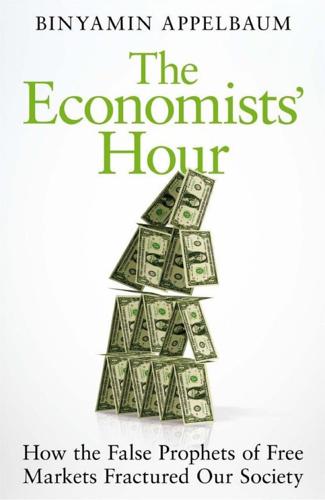
The Economists' Hour: How the False Prophets of Free Markets Fractured Our Society
by
Binyamin Appelbaum
Published 4 Sep 2019
My treatment of this trend draws on David Vogel, The Politics of Precaution: Regulating Health, Safety and Environmental Risks in Europe and the United States (Princeton, N.J.: Princeton University Press, 2012). 88. Pfizer’s full-page ad was published in European Voice the week of February 17, 2000. See Andrew Jordan, “The Precautionary Principle in the European Union,” in Reinterpreting the Precautionary Principle, ed. Tim O’Riordan, James Cameron, and Andrew Jordan (London: Cameron May, 2001), 154. Chapter 8. Money, Problems 1. F. A. Mackenzie, The American Invaders: Their Plans, Tactics and Progress (London: Grant Richards, 1902), 142–43. 2. The idea that trade would discourage military conflict was in broad circulation in the 1930s and 1940s.
…
The company established a European headquarters in Brussels, the seat of the E.U., the better to cultivate its new overseers.85 One reason for the split is a difference over the role of economics. The European Union has taken a measured view of the value of cost-benefit analysis, particularly in environmental policy making. Its 1992 Maastricht Treaty enshrined a “precautionary principle” as the standard for regulation, meaning regulators do not require clear evidence of harm to impose restrictions. European regulators weigh costs and benefits, but they place a greater weight than their American counterparts on risks that can’t be measured. “Those in public office have a duty not to wait until their worst fears are realized,” Robert Coleman, the director general for health and consumer protection of the European Commission (the E.U.’s executive arm), said in 2002.86 In 2010, for example, the European Union banned baby bottles containing bisphenol A (BPA), a common ingredient in clear, hard plastics, citing “uncertainty” about its health effects.
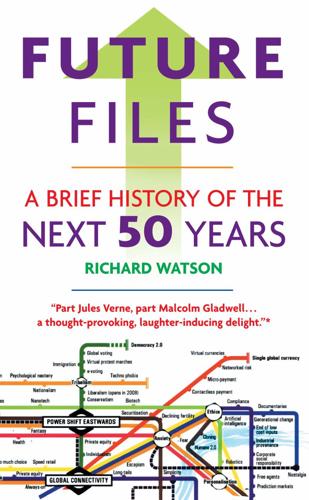
Future Files: A Brief History of the Next 50 Years
by
Richard Watson
Published 1 Jan 2008
Unsupervised adults First it was unsupervised children, the thought that it is unsafe for children to play alone outside. But it appears that battery-farmed children are merely the beginning. Collectively, we are now so afraid of the unknown that adults (primarily men) are seen as predatory until proven innocent — that is, adults cannot be trusted and need supervision. The precautionary principle is now being applied to schools. Anyone wanting to enter a school (a parent with children there, for x FUTURE FILES instance) will have to undergo police checks to ensure that they are not a threat. What’s next – compulsory video monitoring inside every home in the country? George Orwell must be turning in his grave.
…
What else has grown since the first edition? Swine flu is a concern at the time of writing, but I’m sure that we will have replaced this anxiety-inducing pandemic with something much nastier in a couple of years. And we will probably be caught wondering whether such threats are real or just another example of the precautionary principle in operation. The worry, of course, is that if governments keep exaggerating these threats, there is a very strong chance that people will ignore a real threat when one finally comes along. A few such threats are already here. Twenty-five years ago, 3 percent of staph bacteria were resistant to antibiotics.

The New Harvest: Agricultural Innovation in Africa
by
Calestous Juma
Published 27 May 2017
While transgenic crops have the potential to greatly increase crop and livestock productivity and nutrition, a popular backlash against transgenic foods has created a stringent political atmosphere under which tight regulations are being developed. Much of the inspiration for restrictive regulation comes from the Cartagena Protocol on Biosafety under the United Nations Convention on Biological Diversity.34 The central doctrine of the Cartagena Protocol is the “precautionary principle” that empowers governments to restrict the release of products into the environment or their consumption even if there is no scientific evidence that they are harmful. These approaches differ from food safety practices adopted by the World Trade Organization (WTO), which allow governments to restrict products when there is sufficient scientific evidence of harm.35 Under the Cartagena Protocol, public perceptions are enough to trigger a ban on such products.
…
Some have raised fears about the safety of transgenic foods to human health. Other concerns include the fear that farmers would be dependent on foreign firms for the supply of seed.36 Sub-Saharan Africa in particular follows a strict interpretation of the European regulatory model, which uses the precautionary principle to evaluate transgenic crops (as opposed to the United States, which evaluates the crop itself). Given the differences between US and European regulatory systems, there is a lack of harmonization that hinders the adoption process. Farmers in sub-Saharan Africa also have little political power and cannot make the case for adoption, despite comprising such a large percentage of the population.
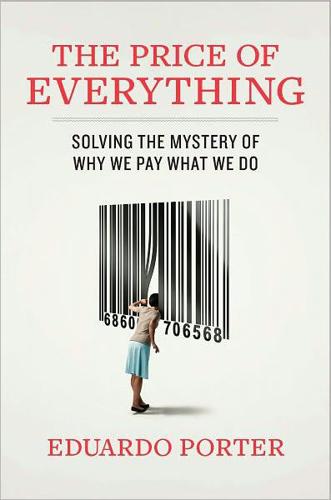
The Price of Everything: And the Hidden Logic of Value
by
Eduardo Porter
Published 4 Jan 2011
In the summer of 2010, the future contract for December priced one ton of CO2 at about €15 a ton—about $18.75. What should our voter instruct her elected representatives to do? Dasgupta doesn’t quite know. And he is well versed in the economics of climate change. Perhaps, he suggests, cost-benefit considerations should be eschewed in favor of what is known as the precautionary principle, which would support large-scale spending to curb carbon emissions on the grounds that there is a chance, even if highly uncertain, of an Armageddon-like climatic catastrophe if we don’t. He argues it might be more politically feasible than we think to mobilize resources to save future generations.
…
happiness in restaurants in service industries in New York Sports Club New York Times New York Times Magazine New Zealand Nine Inch Nails 99 Cents Only chain of stores Nixon, Richard Nordhaus, William Norway Nu au Plateau de Sculpteur (Picasso) Obama, Barack campaign spending of health care and Occupational Safety and Health Administration O’Connor, Sandra Day oil Olympics (1988) Oneida community opera companies “Orange Juice and Weather,” Organization for Economic Cooperation and Development (OECD) overweight Owen, Robert Page, Talbot Papua New Guinea Paraguay Paris Parliament, British Pascal, Blaise patents patriarchy PC World Pelé Pengajian Pennsylvania, University of pensions People’s Liberation Army Perú Pew Global Attitudes Project Pew Project on the Internet and American Life Pew Research Center pharmaceutical industry photography Picasso, Pablo Piso Firme (Firm Floor) Pitt, William Pitt’s Pictures placebo effect pneumococcal disease politics culture and pollution air polygamy pop stars population replacement rate of Portugal Pound, Ezra precautionary principle price discrimination prices: history of misfiring of overview of rule of taming of Prince, Charles Princeton University printers printing, in Great Britain Prisco, Giulio productivity agricultural slavery and wages and property intellectual Prospect Theory Protestant Reformation Protestants public goods publishing Puerto Rico Punjab Pythagoras quality-adjusted life year (QALY) Quiverfull radio Radiohead Rapa Nui rationality Rawls, John Reagan, Ronald recession reciprocity Recording Industry Association of America (RIAA) record labels regulation of banking Reinhart, Carmen religion, see faith; specific religions Renaissance reproduction male vs. female investment in Residential Mortgage-Backed Securities (RMBS) resources allocation of free restaurants Reznor, Trent Ricardo, David Ricos También Lloran, Los (telenovela) risks, risk taking Roach, Stephen Rogoff, Kenneth Rome, classical Roosevelt, Franklin D.
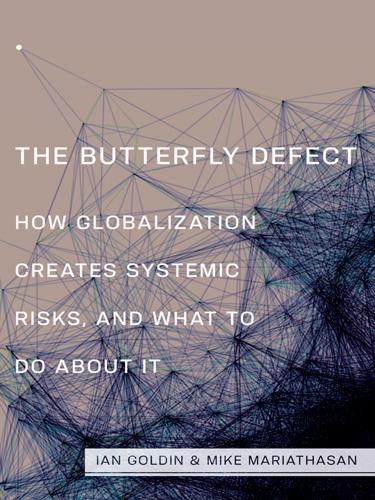
The Butterfly Defect: How Globalization Creates Systemic Risks, and What to Do About It
by
Ian Goldin
and
Mike Mariathasan
Published 15 Mar 2014
This might result in a proposal to use an array of crude indicators for financial stability rather than one sophisticated benchmark, such as risk-weighted capital requirements.87 In this way, the Basel III proposals to incorporate simple leverage ratios in regulatory recommendations are a significant step in the right direction; they are obscured, however, by an excessive regulatory framework that may well open more loopholes than it closes. Simple rules should be developed based on precautionary principles that draw on historical precedents. Simplicity will help ease the tension between international and subnational levels of financial governance. It has been observed that “in many ways, the subprime crisis occurred because the ‘global’ ignored the complexities of the ‘local.’”88 Poor coordination between local and global groups tasked with financial surveillance resulted in informational asymmetry.
…
Politicians and commentators need to be as clear as possible regarding the causes and consequences of the crisis. As our future is increasingly influenced by forces beyond our borders, some sacrifice of national decision making in favor of cooperative outcomes is required. We do not know where the next shock will come from. If a central purpose of governments is to protect us, the precautionary principle is a good basis for policy. This implies that in the face of uncertainty we need to invest in areas of potential threat and to build capabilities to react and adapt. To explain the benefits of global governance, the threats arising from its absence must be identified. Global governance has a considerable cost in terms of both the loss of national sovereignty and the financial burden.
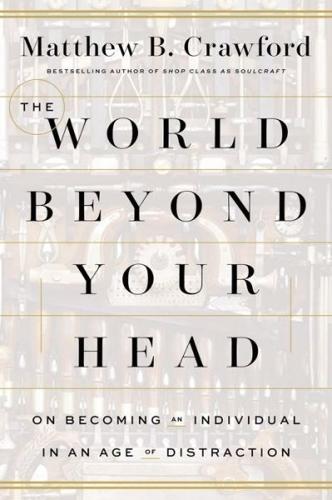
The World Beyond Your Head: On Becoming an Individual in an Age of Distraction
by
Matthew B. Crawford
Published 29 Mar 2015
In neither case does one find oneself the object of an engineered effort to appropriate one’s attention merely because one’s presence in some shared space makes this possible. Joint attention is an actual experience that we have. By contrast, the attentional commons is best understood as a purely negative principle, by analogy with the “precautionary principle” invoked by environmentalists. The point of being aware of the attentional commons is not to make it happen but to refrain from damaging it; to be aware of the valuable absence that creates space for private reverie, and indeed for the possibility of those episodes of joint attention that arise spontaneously and make cities feel full of promise for real human contact.
…
Pennsylvania, gambling in perceived risk perception action and ecological niche and embodied experience and visual perception-action-affect circuit perfect contingency Persian Gulf oil states personal knowledge perspective Peterson, Chris Peterson, Jeff Phaedo (Plato) “pharmacohuman” Phelps, Lawrence phenomenology attention as organizing concern of philosophical anthropology philosophy philosophy of language pianists pine, in organ making Pippin, Robert planning fallacy Plato player-centric design Pleistocene poker Polanyi, Michael on scientific method polling poplar, in organ making pornography precautionary principle preferences preference satisfaction price, meaning of primary qualities privacy, right to probe, effects in use of propositional attitudes prosthetics Protestant ethic Protestant republicanism public safety public spaces choice architecture in Franzen on televisions in qualities, primary vs. secondary racetracks, riding on streets vs.
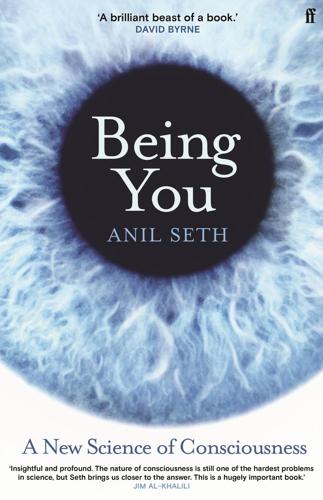
Being You: A New Science of Consciousness
by
Anil Seth
Published 29 Aug 2021
As we move further out: For excellent treatments of the evolution of consciousness, see Feinberg & Mallatt (2017); Ginsburg & Jablonka (2019); LeDoux (2019). Decisions about animal welfare: See Birch (2017) for a useful overview, motivated by the argument that we should give animals the ‘benefit of the doubt’ when evidence is inconclusive (an argument known more formally as the ‘precautionary principle’). Notably, the European Union decided in 2010 to include cephalopods under animal welfare legislation (directive 2010/63/EU). insect brains do possess: Entler et al. (2016). fruit fly: Khuong et al. (2019). effective across all animals: Kelz & Mashour (2019). possible conscious minds: Jonathan Birch, Alexandra Schnell, and Nicola Clayton usefully suggest the term ‘consciousness profile’ for characterising interspecies variation in conscious experience.
…
Becker-Asano, C., Ogawa, K., Nishio, S., et al. (2010). ‘Exploring the uncanny valley with Geminoid HI-1 in a real-world application’. In IADIS International Conferences Interfaces and Human Computer Interaction, 121–8. Berger, J. (1972). Ways of Seeing. London: Penguin. Birch, J. (2017). ‘Animal sentience and the precautionary principle’. Animal Sentience, 16(1). Birch, J., Schnell, A. K., & Clayton, N. S. (2020). ‘Dimensions of animal consciousness’. Trends in Cognitive Sciences, 24(10), 789–801. Blake, R., Brascamp, J., & Heeger, D. J. (2014). ‘Can binocular rivalry reveal neural correlates of consciousness?’ Philosophical Transactions of the Royal Society B: Biological Sciences, 369(1641), 20130211.
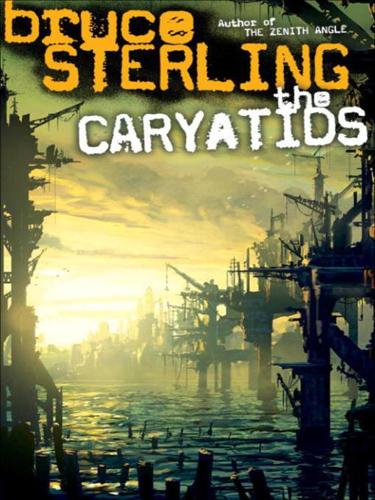
The Caryatids
by
Bruce Sterling
Published 24 Feb 2009
Feininger, do you suppose, someday, those two methods might be combined? Then we could settle outer space—mankind’s dream come true!” “I happen to know rather a lot about this topic,” said Feininger unsurprisingly. “Sadly I must inform you that no, the Acquis spaceflight methods, which are very extensively tested and constructed on the strictest precautionary principles, are by no means the same techniques as the aberrant efforts of certain American zealots who fling giant nanocarbon slingshots up the slopes of the Rocky Mountains.” “Have you ever seen that kind of space launch performed, Dr. Feininger?” “What, me? No, certainly not.” “Would you like to see that done?
…
Solar flares heat the Earth’s outer atmosphere. That has increased the orbital drag on the space station. So of course the space station is a public hazard and it must be rescued at once. We are not pirates, but the responsible parties. The whole world will agree with us.” “That’s a lie, too.” “It’s not a lie. It’s the ‘precautionary principle.’ We can’t be sure that isn’t really happening. Maybe there’s a strange interaction with the solar magnetism and the particles of Chinese hydrogen bombs in our upper atmosphere. Maybe that’s what caused all these blackouts and the mayhem around the world. Do you think the world has any time to waste while the Chinese bureaucracy pulls its firecrackers out of mothballs to fly up there and do its sorry cover-up?”
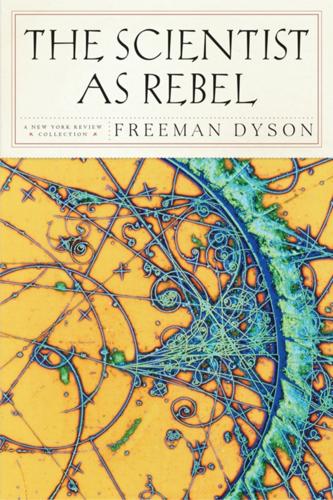
The Scientist as Rebel
by
Freeman Dyson
Published 1 Jan 2006
What is the appropriate response to dangers that are hypothetical and poorly understood? In this matter, as in other situations where public health hazards and environmental risks must be assessed and regulated, there are two strongly opposed points of view. One point of view is based on the “precautionary principle.” The precautionary principle says that when there is any risk of a major disaster, no action should be permitted that increases the risk. If, as often happens, an action promises to bring substantial benefits together with some risk of a major disaster, no balancing of benefits against risks is to be allowed.
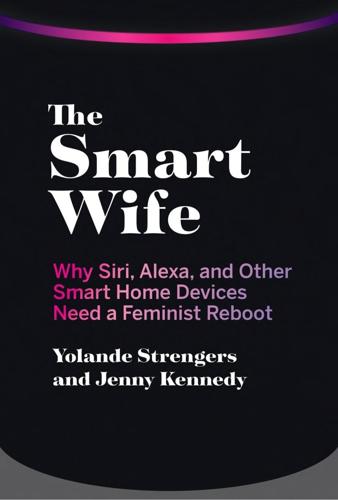
The Smart Wife: Why Siri, Alexa, and Other Smart Home Devices Need a Feminist Reboot
by
Yolande Strengers
and
Jenny Kennedy
Published 14 Apr 2020
She describes the ideology as “an ancient worldview and an emergent political movement for peace, justice, and sustainability.”117 Earth democracy rests on ten principles that prioritize “living democracies” so as to enable “democratic participation in all matters of life and death—the food we eat or do not have access to; the water we drink or are denied due to privatization or pollution; the air we breathe or are poisoned by.”118 Living democracies and cultures, writes Shiva, “are based on nonviolence and compassion, diversity and pluralism, equality and justice, and respect for life in all its diversity.” They are grounded in two ecological principles: the “precautionary principle” (avoiding actions that could cause ecological harm) and the “polluter pays principle” (requiring the polluter to pay for any harm done to the environment and clean up any mess).119 Both were enshrined in Agenda 21 of the UN Conference on Environment and Development (1992), commonly known as the Earth Summit, although they have proven difficult to enact and enforce.120 For our skeptical reader who may dismiss such ideas as fanciful or unrealistic, bear in mind that living democracies existed for far longer than the brief blip in human civilization that we call contemporary capitalism.
…
See also Zoomorphic forms of smart wives Phan, Tao, 25 Physical health and smart wives, 190–191, 192 Pink, Sarah, 93, 180 Pink content, 178, 214 Pino, 49, 71 Pinocchio, 49, 70 Plant-inspired robots, 21, 77 Pleasance in smart homes, 92–97, 182 Political influence of smart wife industry, 84–85 Polluter pays principle, 105 Poncho, 220 Poole, Erika, 44 Poor working conditions in smart wife industry, 98–99 Porn ethical and feminist, 123 influence on behaviors, 136–137 influence on sexbots, 2, 13, 14, 109, 113, 114, 116, 123–124, 132, 136, 142 virtual reality, 13, 118, 123–124 Poster, Winifred, 155 Posy, 49, 71, 72 Pranks played with smart wife devices, 175–176 Precautionary principle, 105 Pris (Blade Runner), 14, 125 Privacy risks managing, 203, 221, 224 sources of, 177, 187–189, 192, 194, 195, 196, 197 Proximate future, 97 Q (genderless voice), 171–172, 219 Quatrochi, Chris, 29 Queer, definition, 209 Queering femininity (McCann), 209 Queering the smart wife, 21, 59, 76–77, 95, 142, 143, 171, 209–211 Quek, Kaye, 129, 136 QuickDrive smart washing machine (Samsung), 30 Race and AI ethics, 225, 226 bias in sci-fi movies, 14–15 and domestic work, 25, 164 and employment in AI industry, 11 lack of diversity represented in smart wives, 211 and search engines, 11 Rape and consent issues with sexbots, 114, 134–141, 142, 223–224 fantasies, 138 marital, 8 Rape Day (video game), 135–136 RapeLay (video game), 135–136 Rating system for smart wives, lack of, 222 Realbotix, 109 RealDoll, 109, 114, 116, 119–120, 130–131, 132–134.
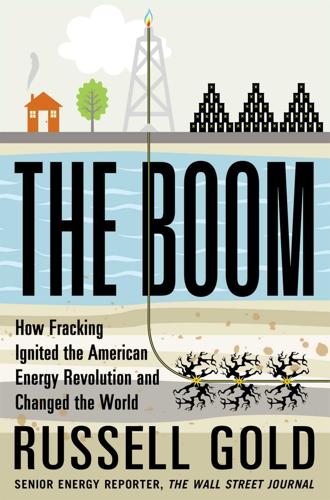
The Boom: How Fracking Ignited the American Energy Revolution and Changed the World
by
Russell Gold
Published 7 Apr 2014
Rapid drilling and fracking created problems that need to be addressed. Some nations require proof that a new technology will not cause public harm before companies can engage in it. The United States doesn’t subscribe to this approach. Exxon’s Rex Tillerson, for one, approves. “If you want to live by the precautionary principle, then crawl up in a ball and live in a cave,” he said. The unfettered market is the ugly beauty of the US energy system. You can usually count on this free-market approach to deliver needed energy, but it can also make you want to turn away and not look too closely. It is the responsibility of the industry, landowners, and the energy-consuming public to ask hard questions and make sure there are no corners cut.
…
A good overview of Germany’s Energiewende can be found in Osha Gray Davidson’s chapbook, cited below. Another fascinating article, and the source of the “fighting for its economic survival” quote, is “How to Lose Half a Trillion Euros” in the Economist’s October 12, 2013, edition. The Rex Tillerson quote “If you want to live by the precautionary principle . . .” is from an article in Fortune by Brian O’Keefe on April 16, 2012, titled “Exxon’s Big Bet on Shale Gas.” I mentioned that the industry has more than doubled the number of wells drilled in a decade. The Energy Information Administration reports the number of oil and gas wells drilled in the United States as follows: 54,302 in 2008 and 22,911 in 1998.
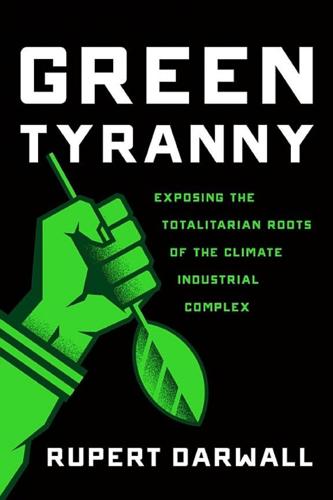
Green Tyranny: Exposing the Totalitarian Roots of the Climate Industrial Complex
by
Rupert Darwall
Published 2 Oct 2017
“Ivanpah may act as a ‘mega-trap’ attracting insects which in turn attract insect-eating birds,” the researchers thought.36 (At the photovoltaic site they examined, bird fatalities resulted from impact trauma from birds flying into PV panels.) Commenting on the Ivanpah deaths, Audubon’s renewable energy director for California said they were alarming. “It’s hard to say whether that’s location or the technology,” Garry George told the Associated Press. “There needs to be some caution.”37 Caution? The precautionary principle isn’t invoked by environmentalists when it comes to their favored forms of energy production and the mass slaughter of birds in eco-friendly ways. By contrast, the American Bird Conservancy took the Department of the Interior to court to overturn its decision to give wind-energy companies 30-year permits to kill protected bald and golden eagles.
…
We believe that New York must become the first state to ban fracking taking a leadership role that the rest of the country can then rally behind.17 After months of procrastinating, in December 2014, Governor Andrew Cuomo folded and announced a total ban on fracking in the state. A N.Y. Department of Health study hadn’t found any threats to public health but said there were risks that remained unanswered, perfectly illustrating the regressive nature of the precautionary principle. Instead, Cuomo backed plans for three new Las Vegas–style casinos. The Sierra Club was exultant. “This move puts significant pressure on other governors to take similar measures to protect people who live in their states.”18 None did, not even Jerry Brown. Although losing the fight to stop fracking everywhere else, a new front had unexpectedly opened up thanks to NGOs and their billionaire backers.

State-Building: Governance and World Order in the 21st Century
by
Francis Fukuyama
Published 7 Apr 2004
There are a number of areas where the Europeans have acted unilaterally in economic matters and in ways that at times contravene the existing legal order. The EU resisted unfavorable decisions against it on bananas for nine weak states and international legitimacy 107 years, and beef hormones for even longer. It has announced a precautionary principle with regard to genetically modified foods, which is very difficult to reconcile with the WTO’s sanitary and phytosanitary rules. Indeed, the Europeans have been violating their own rules with regard to genetically modified foods, with certain member states setting standards different from those of the union itself.
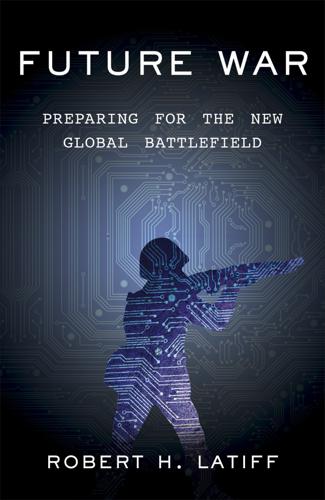
Future War: Preparing for the New Global Battlefield
by
Robert H. Latiff
Published 25 Sep 2017
How will we respond if we are the targets of a new application whose development we sponsored? What is the impact of an application on civil liberties, on economic relationships, on social relationships? Among other relevant issues, the academy report discussed important topics such as the precautionary principle in research, wherein scientists must demonstrate in advance that their research will not cause harm; cost/benefit analysis, in which decision makers employ a consequentialist approach; and risk communication, in which responsible agencies provide adequate and useful information to the public or other important potential recipients of a technology to ensure their support.
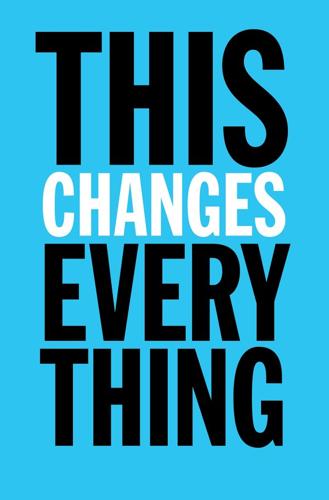
This Changes Everything: Capitalism vs. The Climate
by
Naomi Klein
Published 15 Sep 2014
Action necessary to save humanity from the very real risk of climate chaos was coolly balanced against the risk such action would pose to GDPs, as if economic growth still has a meaning on a planet convulsing in serial disasters. But in Blockadia, risk assessment has been abandoned on the barricaded roadside, replaced by a resurgence of the precautionary principle—which holds that when human health and the environment are significantly at risk, perfect scientific certainty is not required before taking action. Moreover the burden of proving that a practice is safe should not be placed on the public that could be harmed. Blockadia is turning the tables, insisting that it is up to industry to prove that its methods are safe—and in the era of extreme energy that is something that simply cannot be done.
…
Big Ag in, 399–400 industrial (Big Ag), 9, 77–78, 133–36, 210, 399–400, 438–39 local and organic, 134–35, 222, 404–5 low-energy, 90, 91 natural fertility of ecosystems vs., 438–39 small-scale sustainable, 127, 438 wind turbines and, 131–32 agrofuel businesses, 238–39 Agung eruption (1963), 274 air-conditioning, 47 air travel, 1–2, 3, 15, 76, 90, 113, 231, 238, 241–44 Alaska, 112, 147, 273–74, 333, 337, 375, 376, 420 Alberta: disappearance of moose from, 27 Indigenous people in, 315, 372 Alberta Energy Regulator, 327 Alberta tar sands, 2, 23, 27, 71, 139–41, 144, 145, 147, 179, 237, 245–49, 281, 301, 312, 315, 325, 331, 349, 372, 381, 451 ecological and human health impact of, 325–27, 345 economic boom and, 45, 67 as economic disrupter, 386 Indigenous lawsuits over, 378–79, 384 Pierre River Mine project in, 379–80, 383 possible fuel bans on, 246, 248–49 transport of machinery for, 318–19 Albrecht, Glenn, 165 Alcoa, 226 Alden, Charlene, 390–93 Alier, Joan Martínez, 202 Allende, Salvador, 454 Alward, David, 374 Amazon Basin, 180, 182, 197, 221, 291 anti-oil movement in, 304, 353, 376 dieback in, 13 Amazon Watch, 411 American Association for the Advancement of Science, 1, 31, 152 American Council on Renewable Energy, 67 American Dream, supersizing of, 22 American Economic Association, 428 American Electric Power, 196, 221 American Enterprise Institute (AEI), 282–83 American Freedom Alliance, 53n American Gas Association, 213 American Geophysical Union (AGU), 60, 62, 449 American Petroleum Institute, 227 Americans for Prosperity (AFP), 53 Amnesty International, 167 anarchists, 178 Anderson, Germaine, 379 Anderson, Kevin, 13, 21, 56, 86–89, 91, 214, 283 Andhra Pradesh, India, 350 Angotti, Tom, 235n Anishinaabe, 443 anti-apartheid movement, 454–55 anti-coal movements, 10, 197, 300–301, 319–20, 322–23, 346, 348–49, 350–52, 365, 370, 374, 376, 389, 397, 398–99, 408, 445 anti-fracking movements, 299–300, 303–4, 317–18, 335, 347, 348, 361, 362, 365, 370, 373–74, 381, 403–4 Antigua and Barbuda, 415 antinuclear movement, 136, 138, 398 antipoverty activists, 157 Antoine, Paula, 375 Apfel, Dan, 401 Appadurai, Anjali, 11 Appalachia, 46, 309, 353 aquifers, 147, 328, 346, 347 Arab Spring, 9, 464 Arab states, 58 Arch Coal, 342–43, 391, 397 Arctic, 14, 15, 270 Arctic drilling, 141 accidents in, 332, 333 Greenpeace protests against, 300 high risk in, 324 Indigenous opposition to, 375–76 proposed ban on, 353 Arctic Sunrise, 300 Argentina, 123, 180 Arizona, 398–99 Army Corps of Engineers, 3 Arnold, Matthew, 215 arrogant ignorance, 267–68 arts, public funding for, 10 Ashton, John, 150 Asia: coal imports in, 320, 352, 413 effects of Pinatubo Option in, 260, 270, 287 free trade zones in, 19 greenhouse gas emissions in, 412 renewable energy and, 349–50 Asian Pacific Environmental Network (APEN), 155, 156, 321 asthma, 94 AT&T, 208 Athabasca Chipewyan First Nation (ACFN), 326, 379–80, 383–84 Athabasca River, 326 Athanasiou, Tom, 388 Athens, 157 Atlantic, 415 Atlantic salmon, 441 atomic bomb, 277–78 atrazine, 439 Attwater’s prairie chickens, 191–95 austerity, 9, 17, 61, 72, 77, 110, 132, 154, 158 community-controlled alternative energy as response to, 132–33 natural disaster and, 106–10 personal, 116–18 Austin, Tex., 99 Australia, 178, 242, 250, 354 climate change and, 27, 35, 36, 250, 290 extractive exports from, 143, 301 Gorgon project in, 145–46 Great Barrier Reef of, 146–48, 301 Indigenous land rights in, 182, 376 Nauru and, 162, 163, 166–67 renewable energy and, 102 Australian Marine Conservation Society, 301 Austria, 99 automobile industry, 113 bailout of, 121–22, 124, 125 Ayn Rand Institute, 36 Ayres, Ed, 280 Babones, Salvatore, 243n Bach, Amy, 109 Bacon, Francis, 170, 173, 174, 177, 184, 266 Baer, Paul, 388 Bakken oil field, 71, 311, 325 Balcombe, England, 299–300, 403–4 Bangladesh, 82, 109, 154 banks, 39 bailouts of, 6, 110, 121–26, 158 nationalization of, 123 Banks, Joseph, 266 Banuri, Tariq, 413–14 Baptiste, Marilyn, 345, 365 Bárcena Ibarra, Alicia, 180 Barnes, William, 189 Barnett Shale, 329 Barrow Island, 145 Barton, Joe, 47, 228 Bast, Joseph, 34, 41, 42 bats, disappearance of, 27 Battistoni, Alyssa, 94 Bay Localize, 157 Bazemore, Wally, 105n Beaver Lake Cree Nation, 27, 378–79 Beckley, W.Va., 310 Beijing, 17–18, 23, 351 Bella Bella, Canada, 337–42, 344, 363 Bellingham, Wash., 349, 352, 374, 403 Bell, Larry, 33, 47 Berger, John, 120 Berkshire Hathaway, 234 Berlin, 97, 98 Berry, Wendell, 268, 335–36, 438 Betsimisaraka, 220 “Beyond Coal” campaign, 349, 397 Beyond Vietnam (King), 449 Beyond Zero Emissions, 102 BG Group, 145 Bhopal Action Resource Group, 206 BHP Billiton, 196 Big Green, 20, 85, 87–88, 124 Blockadia and, 355–58, 403 carbon trading and, 218–25 climate change debate and, 198–201 climate debt seen as politically toxic by, 414 energy investments of, 196–97 Indigenous land rights and, 387 insider strategies of, 203–4, 205–11 natural gas advocated by, 199–201, 213–17 patriotism as core message for, 57–58 as pro-corporate, 196–97, 207–11, 213, 215–16 renewable energy downplayed by, 199–200 USCAP created by, 226–28 biochar process, 245 biodiversity, 13, 134 biofuels, 32, 97, 231–32, 238–41, 251–52, 253, 287 biological weapons, banning of, 278 biosphere, as self-organizing, complex, adaptive system, 267 Birol, Fatih, 23 birth defects, environmental toxins and, 428, 429–30, 439 bitumen, see tar sands Black Mesa Water Coalition, 398–99, 402 Black Sea, 349 Blake, William, 157 Blazevic, Sara, 355 Blockadia, 293–336, 450–51 abolition and civil rights movements compared to, 450, 453, 455–57 Big Green and, 355–58, 403 as constructive movement, 405 early victories of, 348–53, 359, 370 as global grassroots movement, 294–96, 303–4, 321–23 in Global South, 412 government repression of, 297–99, 361–62, 410–11 as impetus for uniting of Indigenous peoples and non-Natives, 373–74, 380–84, 443–45 Indigenous peoples in, 139, 177; see also Indigenous peoples, land rights of intergenerational character of, 445 love of place in, 337–66, 370–71 moral imperative in, 336, 386–87, 464 precautionary principle adopted by, 335–36 as pro-democracy movement, 361, 380 as pro-water movement, 344–47 regenerative worldview in, 443–46 social media and, 303, 466 women as leaders in, 303 see also specific groups and protests Bloomberg Carbon Risk Valuation Tool, 235 Bloomberg, Michael, 49, 176, 216, 230, 235–36, 252 Bloomberg Philanthropies, 216 Bloomberg View, 428 BlueGreen Alliance, 126, 156 Blue Planet Prize, 22 Bolivia, 5, 7, 18, 40, 180, 377, 409, 443–44 Bollier, David, 130 Bonogofsky, Alexis, 319, 342–43, 390, 392–93, 396 Bopha, Typhoon, 465 borders, hyper-militarized, 154 Bostic, Jason, 337 Boston, Mass., 13 Boucher, Jim, 386 Boulder, Colo., 98–99 Boulton, Matthew, 266 Bows-Larkin, Alice, 87–89, 412 BP, 111, 129, 130, 215, 226, 227–28, 236, 282 Big Green funding from, 196, 198 Greenland project of, 385 lax government regulation of, 330–31 profit-over-safety culture of, 330–31, 333, 376 BP, Deepwater Horizon disaster of, 112, 144, 201, 290, 316, 324, 330, 332, 376, 385–86, 420 impact on marine life of, 425–26, 431–34, 451 lack of preparedness in, 330 miscarriages linked to, 424–25 pre-explosion risk assessment report on, 430–31 BP America, 196 BP Capital, 237 Braided Hair, Vanessa, 396, 397 Brainstorm Green, 229 Brand, Russell, 155 Brand, Stewart, 288 Branson, Richard, 230–33, 235–54, 257, 260, 263, 264, 284–85, 288–89 biofuels development pledge of, 231–32, 238–41, 251–52, 253 Carbon War Room of, 232, 239, 251 Virgin Earth Challenge of, 232, 244–49, 251 see also Virgin Group Braun, Clait E., 192 Brazil, 5, 13, 82, 130, 145, 157, 179, 202, 221–22, 412 Breakthrough Institute, 57 Brecher, Jeremy, 401, 402 Briner, Brad, 235 Britain, see United Kingdom British Columbia, 302, 312, 319, 419–20 disappearance of starfish from, 27 Northern Gateway pipeline proposal in, 337–42, 344–45, 363, 365–66, 367, 380 scallop collapse in, 434 Supreme Court of, 368–69 British Social Attitudes survey, 117 Bronx Zoo, 183 Brookings Institution, 290 Brower, Kenneth, 289 Browne, Sir John, 111, 130 Brownstein, Mark, 356 Brown University, 428 Brulle, Robert, 44, 199 Brundtland, Gro Harlem, 22 Brune, Michael, 357 Buenos Aires, 123 Buffett, Warren, 233–34, 252 buildings: greenhouse gas emissions from, 412–13 retrofitting of, 108, 122, 124 Build Our Energy Barn, 403 Bulgaria, 348 Bunzl, Martin, 269–70 Burkina Faso, 270 Burlington Northern Santa Fe railroad, 234 Burnt Church, Canada, 372–73 Bury the Chains (Hochschild), 456 Büscher, Bram, 223–24 Bush, George H.
…
Boone, 237–38, 252 Pickens Plan, 237 Pierre River Mine, 379–80, 383 Piketty, Thomas, 113, 154–55 Pinatubo eruption (1991), 258–59 weather effects of, 259, 270, 271–72, 274 Pinatubo Option, 258, 259–62, 274 famine and drought as consequences of, 270, 279, 287 solar power generation affected by, 259 termination problem in, 260 weather patterns affected by, 260, 268, 270–71 Pine Ridge Reservation, 393, 396 pipelines, 141, 157, 349, 352, 362, 413, 446 as common threat, 315–16 Indigenous peoples and, 315, 319, 344–45 public value of renewable energy projects vs., 400 see also specific pipeline projects Pittsburgh, Pa., rights of nature ordinance in, 444 place, love of, in Blockadia movement, 337–66 planetary exodus, 288–89 planned obsolescence, 91 planning, long-range, see long-range planning Point Carbon, 225 Point Hope, Alaska, 375 Poland, 75, 144, 200, 225 polar bears, 435 Policy Implications of Greenhouse Warming, 282 Polis, Jared, 314 politicians, responsibility evaded by, 12, 119 politics, elite control over, 18, 119 polluter pays principle, 110–19, 202–3 pollution regulations, 39 polychlorinated biphenyls (PCBs), 203, 429 polycyclic aromatic hydrocarbons (PAHs), 426 Pooley, Eric, 207, 208 Pope, Alexander, 446 Pope, Carl, 237, 356, 357n population, 14, 114n populism, 117 postindustrialized nations, 79, 132, 177, 387, 460 poverty, 7, 19, 61, 85, 110, 115, 119, 134–36, 157, 177, 343, 455, 458 consumption and, 91 in developing world, 40, 55, 88n, 179–82, 409, 416, 418 extractive industries and, 181–82, 416 lack of protection and, 49 renewable energy and, 391, 399 Powder River Basin, coal mines in, 320, 323, 343–44, 395 power, corporate, 25 Power Past Coal, 349 power plants, coal-fired, see coal-fired power plants precautionary principle, 335–36 Premier Gold Mines, 382 Presidential Oil Spill Commission, 330 President’s Science Advisory Committee, climate change report of, 261 price controls, 125 PricewaterhouseCoopers, 15 Princeton Environmental Institute, 113 Princeton University, Carbon Mitigation Initiative of, 113–14 Prince William Sound, impact of Exxon Valdez oil spill in, 337–39, 426 privatization, 8, 9, 39, 72 diminished services under, 128 of disaster response, 51–52 of former Soviet economies, 19 and infrastructure investments, 108–9 as license to steal, 154 of public sphere, 19–20 reversals of, 39, 95, 96–103 Prize, The (Yergin), 311 Proceedings of the National Academy of Sciences, 79, 217, 328n “proof of harmlessness,” 271, 272 propane, 328 Prosperity Without Growth (Jackson), 93 protectionism, 64–65, 84 Public Accountability Initiative, 216 Public Citizen, 80, 213 Global Trade Watch of, 359–60 public health systems, 10, 109 public infrastructure, 19, 20 public sector, 95 crumbling institutions, 158 green energy and, 97–103, 406–7 and infrastructure investments, 108–9 spending cuts in, 19, 72, 110 public services, zero-carbon, 19–20 public transit, 7, 40, 92, 93, 108, 121, 124, 126, 127 in Brazil, 157 cheap, 91 in France, 109 in wartime, 16–17 public works, 39 Pungesti, Romania, anti-fracking movement in, 298–99, 303, 347, 404 quantitative easing, 110 Quebec: anti-fracking movement in, 303–4, 313, 348, 358–59 fracking moratorium in, 71 opposition movements in, 9, 464 Queensland, 27, 301 racism: environmental, 205, 429 sacrifice zones and, 310–11, 314 railways, 91, 108, 122, 133 coal transport by, 234, 362, 389, 397 high-speed, 126 oil transport by, 311–12, 325, 332, 333 Rainforest Action Network, 197, 296, 356 “Rainforest Chernobyl,” 309, 378 Rakotomanga, Cressant, 221–22 Rand, Ayn, 44 Rasch, Phil, 264 rationing, wartime, 115–16 Raytheon, 9 Read, Joe, 53n Reagan, Ronald, 39, 117, 203–5, 229 real estate: disaster infrastructure and, 51 in wake of Superstorm Sandy, 9, 235n re-communalization, 96–103 Red Cloud, Henry, 24, 393–97 Red Cloud Renewable Energy Center, 396 REDD-Monitor, 223 RedGE, 78 Red Hook, Brooklyn, 105n, 405 Reilly, John, 11 reinsurance, 9, 234 religion, and dominion over nature, 41, 74, 177 re-municipalization, 96–103 renewable energy, 16, 18, 67, 90, 93, 127, 131, 218, 253, 283 Asia and, 349–50 buy-local programs for, 77 cheap natural gas as undercutting, 128–29 community ownership of, 398–99 Gates’ dismissal of, 236–37 in Germany, 97–98, 130–31 incentives for, 138–39 investment in, see green technology, investment in major oil companies and, 111–12 maturing technology for, 213–14 misleading cautions on, 199–200, 394–95 noncorporate providers of, 131 100 percent, 101, 102, 137, 214–15 private sector and, 100–101 public ownership and, 97–103 public sector and, 97–103, 406–7 public value of, extractive projects vs., 400 in Spain, 110 transition to, 89, 97–103, 115, 214–15, 364 and variability of natural systems, 394–95 as viable alternative to fossil fuels, 349, 398, 399, 400–401, 403, 413–18 WTO’s slowing of, 71–72 reparations, 414–15 see also climate debt REPOWERBalcombe, 403–4 Republican party, 35, 118, 125, 141, 204 climate change denial and, 34, 36, 46, 407 Republic Windows and Doors, 123n resilience, 419, 442 Resisting Environmental Destruction on Indigenous Lands (REDOIL), 375–76 resources, depletion of, 450 Responsible Endowments Coalition, 401 Reyes, Oscar, 224 Richmond, Calif., 321, 402 right wing: as barrier to progress, 31–63, 75, 124 on climate change as left-wing plot, 31, 32, 156, 411 Rignot, Eric, 14 Rio Earth Summit of 1992, 55, 76, 77, 83, 85, 150, 200, 293, 363 Risky Business project, 49 Roberts, David, 364–65 Robertsbridge Group, 249n Robertson, Julian, 208 Robock, Alan, 264, 270, 273–74 Rockaways, 103–6 Rodríguez, Heriberto, 222 Rogers, Jim, 196 Romania: fracking in, 298–99, 303, 344 government repression of environmental protest in, 298–99, 303 Romm, Joe, 54 Roosevelt, Franklin Delano, 121 Roosevelt, Theodore, 211 Rosebud Sioux, 375 Rothschild, Richard, 31, 34 rotifers, BP oil spill and, 432 Rousseff, Dilma, 179 Rowe, Stan, 444 Royal Canadian Mounted Police, 299 Royal Society, 152, 266 Chicheley Hall geoengineering conference of, 256–61, 263–67, 280–81, 284–85, 451 royalties, on oil, gas, and coal extraction, 112–13 Roy, Arundhati, 291 Ruffalo, Mark, 317 Russia: Greenpeace activists arrested by, 300 oil and gas companies in, 178–79 see also Soviet Union Sacramento, Calif., 99 sacrifice zones, 172–73, 310–15 Safe Drinking Water Act, 328 Safety and Environmental Enforcement Bureau, U.S., 332 Sahel, 270, 274, 275–76 Sainsbury, 116 St.
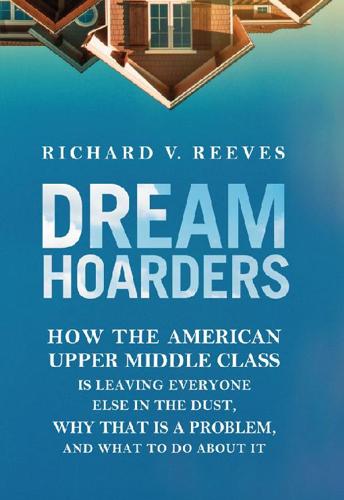
Dream Hoarders: How the American Upper Middle Class Is Leaving Everyone Else in the Dust, Why That Is a Problem, and What to Do About It
by
Richard V. Reeves
Published 22 May 2017
This is consistent with widening wage gaps and especially the “take off” of earnings toward the top of the occupational ladder, which “allowed the professional-managerial class to more reliably realize its strong interest in reproduction.”18 The problem with research on intergenerational mobility is that a generation is a pretty long time. Since it takes three to four decades to know where kids are going to end up in relation to their parents, any worsening in the trend can’t be confirmed until it is too late to do anything about it. We should therefore adopt the precautionary principle and act now. Many of the gaps in income, family formation, and education are more acute in the United States but are certainly not unique. Most industrialized nations are facing an inequality challenge.19 But in terms of intergenerational mobility, the United States is a rather poor performer overall.
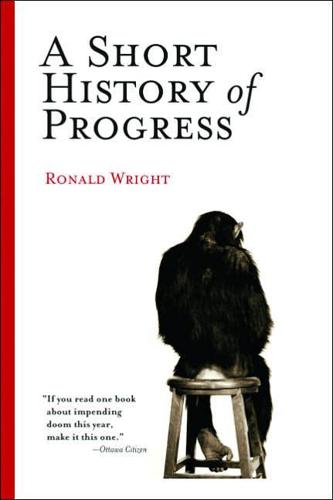
A Short History of Progress
by
Ronald Wright
Published 2 Jan 2004
The 10,000-year experiment of the settled life will stand or fall by what we do, and don’t do, now. The reform that is needed is not anti-capitalist, anti-American, or even deep environmentalist; it is simply the transition from short-term to long-term thinking. From recklessness and excess to moderation and the precautionary principle. The great advantage we have, our best chance for avoiding the fate of past societies, is that we know about those past societies. We can see how and why they went wrong. Homo sapiens has the information to know itself for what it is: an Ice Age hunter only half-evolved towards intelligence; clever but seldom wise.
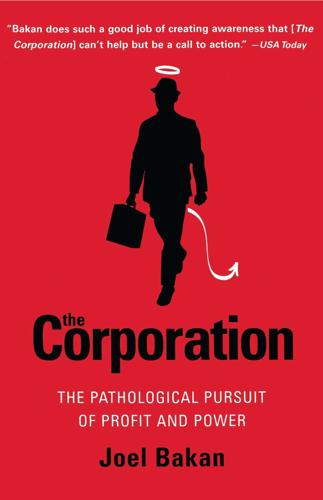
The Corporation: The Pathological Pursuit of Profit and Power
by
Joel Bakan
Published 1 Jan 2003
Regulations should be made more effective by staffing enforcement agencies at realistic levels, setting fines sufficiently high to deter corporations from committing crimes, strengthening the liability of top directors and managers for their corporations' illegal behaviors, barring repeat offender corporations from government contracts, and suspending the charters of corporations that flagrantly and persistently violate the public interest. Page 162 ', JOEL BAKAN Regulations designed to protect the environment and people's health and safety should be based upon the precautionary principle, which prescribes that corporations be prohibited from acting in ways that are reasonably likely to cause harm, even if definitive proof that such harm will occur does not exist. The regulatory system should be reformed to improve accountability and avoid both "agency capture" and the centralized and bureaucratic tendencies of current and past regimes.

Global Catastrophic Risks
by
Nick Bostrom
and
Milan M. Cirkovic
Published 2 Jul 2008
His essay 'Why the Future Doesn't Need Us,' published in April 2000 in Wired magazine, called for a global, voluntary 'relinquishment' of these technologies. Greens and others of an apocalyptic frame of mind were quick to seize on Joy's essay as an argument for the enacting ofbans on technological innovation, invoking the 'precautionary principle', the idea that a potentially dangerous technology should be fully studied for its potential impacts before being deployed. The lobby group ETC argued in its 2003 report 'The Big Down' that nanotechnology could lead to a global environmental and social catastrophe, and should be placed under government moratorium.
…
They can be based on strategies that take different sorts of stakeholder relationships with the impacts into account. Depending on the nature of one's exposure, risk profile, and preferences , one may opt to base one's strategy on one, or a mix, of several different principles, including: some reading of the precautionary principle, traditional cost-benefit analysis (usually where one is confident ofthe numbers underpinning the analysis) or robustness against vulnerability. Other adaptive principles have also been discussed, including novel solutions such as legal remedies through climate detection and attribution studies, which is like cost benefit analysis, though backward looking (at actual attributable harm done) and done via the legal system rather than through economics (Allen et al. , 2007) .
…
208-9 Popper, K. 99 population control 66 population decline, Toba catastrophe theory 1 3 population growth 66 Porter, K.A. Pale Horse, Pale Rider 304 positronium atoms 42 post-collapse populations, minimum numbers 369-70, 374 Post, ) . 406 post-millenialism 76 Potter, W. 397 poverty, relationship to infectious diseases 288 power law distribution of risks 19-20, 368 existential disasters 3 70-1 precautionary principle 8 1 precipitation patterns, effect o f climate change 278 precocious unification 349 predictability of artificial intelligence 3 1 6 predictability o f events 168 asteroid strikes 223-9 use of past records 125 volcanic super-eruptions 2 1 2- 1 3 premillenialism 74-5 premium calculation, insurance industry 1 7 1 , 1 72-3 preparation for crises 346, 358-9, 372-5 Presidential Nuclear Initiatives ( 1991-1992) 4 1 5 , 439 prestige, as motivation for nuclear terrorism 407-8 price controls, value in carbon dioxide emission control 280-1, 282 pricing of risks, insurance industry 1 72-3 relationship to probability of risk 1 79 prior attitude effect 100 probability distributions 1 5 6-7 probability estimates 6 particle collider catastrophes 18-19 probability of risk 3 process risk 1 76, 180 Productive Nanosystems: From Molecules to Superproducts, Phoenix, C. and Treder, M. 500 Program for Monitoring Emerging Diseases (ProMed) 470-1 Project BioShield 188 Property Claims Service (PCS), definition of catastrophe 166 prospective risk analysis 5 protein folding problem 3 3 1 , 332 proton decay 40-1 psychiatric drugs, value in totalitarianism 511, 512 psychic unity o f mankind 309 psychological impact of bioterrorism 467-8 of nuclear terrorism 407, 429-30, 440 public policy 1 2- 1 3 , 84-5 cost-benefit analysis 185-7 global warming 192-200 inverse 187-9 Relativistic Heavy Jon Collider 189-90 disaster policy 372-5 global warming 190-200 responses to climate change 279, 280-2 Kyoto Protocol 190-1 purchase of moral satisfaction 106 The Pursuit ofMillenialism: Revolutionary Millenarians and Mystical Anarchists of the Middle Ages, Cohn, N . 86 qualitative loss curves 1 76, 1 77, 1 78 qualitative risk assessment 180-1 qualitative risk assessment charts 1 77, 1 78 quantum chromodynamics (QCD) 350 quantum fluctuations 354 quantum mechanical exclusion principle 39 quarantines 472 quark-antiquark condensate 354, 3 5 5 quark matter (strange matter) 3 5 1 quarks 350 radiation, atmospheric protection 239 Radical Evolution, Garreau, ) . 79 81 radical ideologies, risk of totalitarianism 5 1 4 radioactive fallout 386-7 radio interference, solar flares 24 3 radiological dispersal devices ( RDDs) 403 , 4 1 1 psychological impact 430 Raelians ix Ragnarok, utopianism 77-8 rainfall, possible effects of volcanic super-eruptions 2 1 1 Rajnshees 467 Salmonella typhimurium attack (1984) 466 Rampino, M .

The Debian Administrator's Handbook, Debian Wheezy From Discovery to Mastery
by
Raphaal Hertzog
and
Roland Mas
Published 24 Dec 2013
If inspiration is lacking, do not hesitate to use password generators, such as pwgen (in the package of the same name). 4.2.11. Creating the First User Debian also imposes the creation of a standard user account so that the administrator doesn't get into the bad habit of working as root. The precautionary principle essentially means that each task is performed with the minimum required rights, in order to limit the damage caused by human error. This is why the installer will ask for the complete name of this first user, their username, and their password (twice, to prevent the risk of erroneous input).
…
The general principle is simple: the script will only make changes if it knows the status of the configuration file, which is verified by comparing the checksum of the file against that of the last automatically generated file. If they are the same, the script is authorized to change the configuration file. Otherwise, it determines that the file has been changed and asks what action it should take (install the new file, save the old file, or try to integrate the new changes with the existing file). This precautionary principle has long been unique to Debian, but other distributions have gradually begun to embrace it. The ucf program (from the Debian package of the same name) can be used to implement such a behavior. 9.5. syslog System Events 9.5.1. Principle and Mechanism The rsyslogd daemon is responsible for collecting service messages coming from applications and the kernel, then dispatching them into log files (usually stored in the /var/log/ directory).

The Survival of the City: Human Flourishing in an Age of Isolation
by
Edward Glaeser
and
David Cutler
Published 14 Sep 2021
Meat producers have used: Gustin, “This Is How the Government Decides What You Eat.” The makers of electronic cigarettes: Sharpless, “How FDA Is Regulating E-Cigarettes.” “it is not from the benevolence”: Smith, The Wealth of Nations. lasting damage may result: Martuzzi, “The Precautionary Principle: In Action for Public Health.” penalties for opioid malfeasance: Spector, “In Emails, Sacklers Fret over Wealth, Opioid Business.” related to secondhand smoke: World Health Organization, “Worldwide Burden of Disease from Exposure to Second-Hand Smoke.” One in four: US Centers for Disease Control and Prevention, “Impaired Driving: Get the Facts”; US Department of Transportation, National Highway Traffic Safety Administration, Traffic Safety Facts: Alcohol-Impaired Driving 2016 Data.
…
The Wall Street Journal March 4, 2020. www.wsj.com/articles/south-korea-widens-testing-in-daegu-as-it-steps-up-war-on-coronavirus-11583321995. Martinelli, Katherine. “The Factory That Oreos Built.” Smithsonian, May 21, 2018. www.smithsonianmag.com/history/factory-oreos-built-180969121. Martuzzi, Marco. “The Precautionary Principle: In Action for Public Health.” Occupational and Environmental Medicine 64, no. 9 (2007): 569–70. https://doi.org/10.1136/oem.2006.030601. Maruschak, Laura, and Todd Minton. Correctional Populations in the United States, 2017–2018. US Department of Justice, Bureau of Justice Statistics, August 2020. www.bjs.gov/content/pub/pdf/cpus1718.pdf.
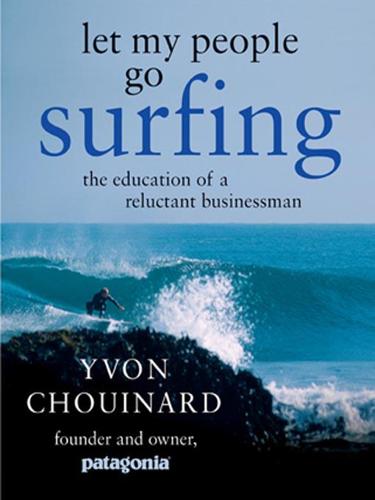
Let My People Go Surfing
by
Yvon Chouinard
Published 20 Jun 2006
So, when there is a national catastrophe like a forest fire, war, or flood and resources are destroyed, the GNP goes up because money was spent on labor and materials. No debit is made in the national ledger for the loss of those natural resources. It has been estimated that the true social and environmental cost of a hamburger when the forest has been cleared to create pastureland for grazing cattle is two hundred dollars. Instead of adapting precautionary principles, we embrace new technologies, like nuclear power, genetically modified foods, pesticides, and other toxic chemicals with an attitude of “innocent until proved guilty,” and it’s left up to you and me to establish the guilt. In the tropical rain forest, biologically the richest region on earth, we are exterminating species far faster than we can discover or name them, let alone determine their potential to benefit us in the form of medicine or food.
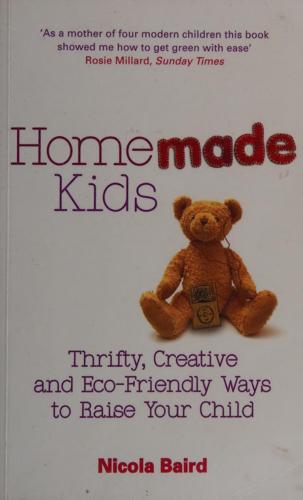
Homemade Kids: Thrifty, Creative and Eco-Friendly Ways to Raise Your Child
by
Nicola Baird
Published 14 Sep 2010
Teflon It is impossible not to worry about what chemicals you are feeding unintentionally as you heat up your child's dinner. Unhappy about the long-term health risks of using Teflon coatings, | got rid of my non-stick pans for a while (via a charity shop). | now have just one in the house which is used to make pancakes. | hope this is an example of the precautionary principle used pragmatically — | mostly avoid Teflon coatings, but occasionally it’s perfect for the task. SEF RAR ORL EE AES EAS Ss a BS ie OE 42° LE IAL LESSEE LITERS MIS EDM EGE LEE IEE RUBEN EH me Give Your Home a Green Makeover Microwaves I don’t own a microwave and don’t trust them.

Financial Fiasco: How America's Infatuation With Homeownership and Easy Money Created the Economic Crisis
by
Johan Norberg
Published 14 Sep 2009
All these attempts to make the system as safe as possible really make it extremely sensitive to small blows and changes. As Professor Lawrence Lessig of Stanford University concludes, a single virus gaining a foothold in the banking monoculture may knock out the market completely. All deviations, diversity, and mutations have been eradicated by precautionary principles and regulations, meaning that there is no resistance left anywhere.14 At a conference in 2007, the risk-management officer of one company said that they were fortunate not to have much historical data on business risk, because if they did, the authorities would immediately force them to use those data to build risk models and act according to those models, rather than use common sense and develop various scenarios for future risks, as the company preferred to do."
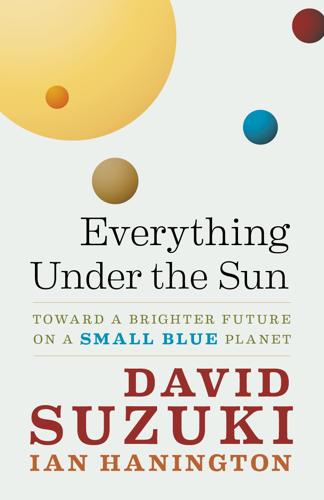
Everything Under the Sun: Toward a Brighter Future on a Small Blue Planet
by
Ian Hanington
Published 13 May 2012
It ensures that if disease or insects attack a plant, other plant varieties will survive and evolve in its place. This is called biodiversity. Because we aren’t certain about the effects of genetically modified organisms (GMOs), we must consider one of the guiding principles in science, the precautionary principle. Under this principle, if a policy or action could harm human health or the environment, we must not proceed until we know for sure what the impact will be. And it is up to those proposing the action or policy to prove that it is not harmful. That’s not to say that research into altering the genes in plants that we use for food should be banned or that GM foods might not someday be part of the solution to our food needs.
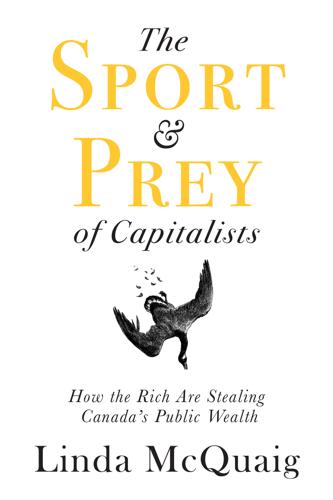
The Sport and Prey of Capitalists
by
Linda McQuaig
Published 30 Aug 2019
Not even bothering to conceal its deregulatory aims, the Harper government launched the Red Tape Reduction Committee, and then used the committee’s findings to draw up the Cabinet Directive on Regulatory Management in the spring of 2012. A key aspect of the directive was the abandonment of the “precautionary principle,” the principle that, if there is any scientific doubt about the safety of a product or practice, regulators should be cautious and restrict its use. This basic, common-sense principle — err on the side of safety! — was turned on its head. Under the Harper directive, the burden of proof was placed on the regulator to show solid evidence of harm; otherwise the company had the green light.15 Another shocking aspect of Harper’s deregulatory policy was an initiative known as the one-for-one rule, which required the elimination of at least one regulation for every new one introduced or old one amended.

Open: The Progressive Case for Free Trade, Immigration, and Global Capital
by
Kimberly Clausing
Published 4 Mar 2019
Data are from the US Census. 34. Yet fears of terrorism by refugee immigrants border on the absurd; over the period 1975 to 2015, “the annual chance of an American being killed in a terrorist attack committed on U.S. soil by a refugee was one in 3.6 billion.” See Nowrasteh, Alex. 2017. “Syrian Refugees and the Precautionary Principle.” Cato Institute. January 28. 35. J. R. Clark, Robert Lawson, Alex Nowrasteh, Benjamin Powell, and Ryan Murphy, “Does Immigration Impact Institutions?” Public Choice 163:3-4 (2015): 321–335. 36. Muzaffar Chrishti and Michelle Mittelstadt, “Unauthorized Immigrants with Criminal Convictions: Who Might Be a Priority for Removal?”

Escape From Model Land: How Mathematical Models Can Lead Us Astray and What We Can Do About It
by
Erica Thompson
Published 6 Dec 2022
As with Covid, politics enters into the models through value judgements about what kinds of losses and damages are acceptable, the distribution of risk across different geographical communities and the question of who should take on the costs of doing something about it. For either climate or Covid, the precautionary principle is not much help: we can be precautionary about the emerging risk, or precautionary about taking upfront economic hits before the harm is truly known. There are many analogies between responses to fast-emerging Covid risks and slow-emerging climate risks from which one could draw many conclusions.

The Locavore's Dilemma
by
Pierre Desrochers
and
Hiroko Shimizu
Published 29 May 2012
In a market economy, people do not bother tinkering with advances unless they are facing pressing problems. True, no innovative solution is ever perfect, but the essence of progress is to create less significant problems than those that existed before. Unfortunately, many activists endorse the so-called “precautionary principle,” which in its purest form prevents technological changes in the absence of full scientific certainty as to their potential negative consequences. Yet, those who promote this stance ignore the harm that this worldview creates. Had resistance to innovation and change been more significant in the last two centuries, real income, life expectancy, and food consumption would undoubtedly be much lower than they currently are, while infant mortality, food prices, and hours worked, among other things, would have been much higher.
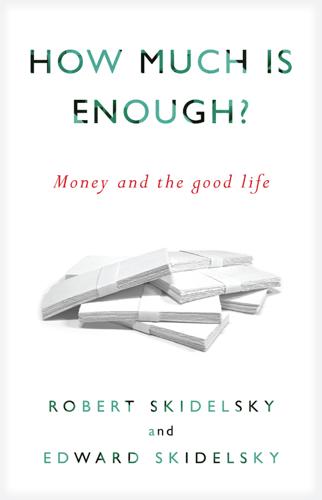
How Much Is Enough?: Money and the Good Life
by
Robert Skidelsky
and
Edward Skidelsky
Published 18 Jun 2012
Veteran geochemist James Lovelock (of whom more later) sees the world approaching a state “that could easily be described as Hell: so hot, so deadly that only a handful of the teeming billions now alive will survive.”13 Passages like this present us with a secular version of Pascal’s famous wager: they conjure an evil so fearful that its avoidance is worth any sacrifice, however great. This argumentative strategy (now dignified as the “strong precautionary principle”) is one calculated to inspire panic. On any sober reckoning, the dangers of global warming, though real, are on a scale commensurable with those of war, plague and many other potential disasters. They do not demand the total concentration of effort and resources called for by climate radicals.
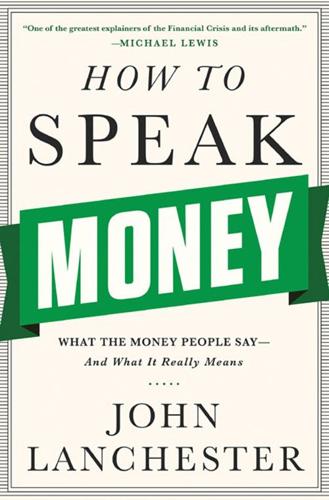
How to Speak Money: What the Money People Say--And What It Really Means
by
John Lanchester
Published 5 Oct 2014
Sometimes the allocation of views to particular sides of the political debate is not easy to understand, looked at from a distance and with a cold eye. Conservatism has, as its name suggests, a strong emphasis on conserving and preserving the legacy of the past; it isn’t that hard to imagine a conservatism that took a strong stand against the prospect of sweeping, irreversible change offered by global warming, and made the “precautionary principle” of acting to prevent disaster a central part of its mission. This was once less of a counterfactual than it might now seem, since the first global leader to mention climate change in a speech was Margaret Thatcher, who in 1989 said in an address to the UN, “We are seeing a vast increase in the amount of carbon dioxide reaching the atmosphere. . . .
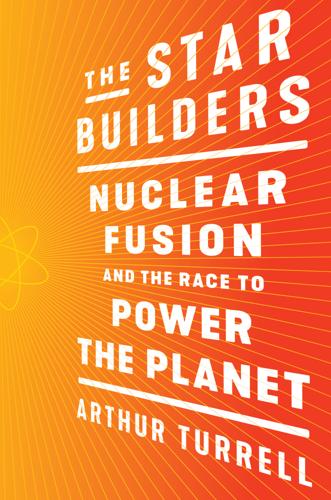
The Star Builders: Nuclear Fusion and the Race to Power the Planet
by
Arthur Turrell
Published 2 Aug 2021
Wilhelm, et al., Nuclear Accidents and Policy: Notes on Public Perception (DIW Berlin, the German Socio-Economic Panel [SOEP], 2013); P. A. Kharecha and M. Sato, “Implications of Energy and CO2 Emission Changes in Japan and Germany After the Fukushima Accident,” Energy Policy 132 (2019): 647–53; M. J. Neidell, S. Uchida, and M. Veronesi, Be Cautious with the Precautionary Principle: Evidence from Fukushima Daiichi Nuclear Accident (Cambridge, MA: National Bureau of Economic Research, 2019). 23. P. A. Kharecha and J. E. Hansen, “Prevented Mortality and Greenhouse Gas Emissions from Historical and Projected Nuclear Power,” Environmental Science & Technology 47 (2013): 4889–895.

A Poison Like No Other: How Microplastics Corrupted Our Planet and Our Bodies
by
Matt Simon
Published 24 Jun 2022
Plastics, EDCs, and Health: Authoritative Guide. Washington, DC: Endocrine Society. https://www.endocrine.org/topics/edc/plastics-edcs-and-health. Environmental Working Group. n.d. “BPA.” https://www.ewg.org/areas -focus/toxic-chemicals/bpa. Vandenberg, Laura N. 2011. “Exposure to Bisphenol A in Canada: Invoking the Precautionary Principle.” Canadian Medical Association Journal 183 (11): 1265–70. https://doi.org/10.1503/cmaj.101408. FDA (Food and Drug Administration). n.d. “Bisphenol A (BPA): Use in Food Contact Application.” https://www.fda.gov/food/food-addi tives-petitions/bisphenol-bpa-use-food-contact-application. Asimakopoulos, Alexandros G., Madhavan Elangovan, and Kurunthachalam Kannan. 2016.

The Wealth of Networks: How Social Production Transforms Markets and Freedom
by
Yochai Benkler
Published 14 May 2006
There is little doubt, too, that the near-hysterical pitch at which the failures and risks of GM foods have been trumpeted has little science to back it, and the debate has degenerated to a state that makes reasoned, evidence-based consideration difficult. In Europe in general, however, there is wide acceptance of what is called a "precautionary principle." One way of putting it is that absence of evidence of harm is not evidence of absence of harm, and caution counsels against adoption of the new and at least theoretically dangerous. It was this precautionary principle rather than evidence of harm that was at the base of the European ban. This ban has recently been lifted, in the wake of a WTO trade dispute with the United States and other major producers who challenged the ban as a trade barrier.

On the Edge: The Art of Risking Everything
by
Nate Silver
Published 12 Aug 2024
Otherwise similar to Hold’em, it’s distinguishing features are that (1) each player is dealt four hole cards rather than two, exactly two of which must be used in the final hand at showdown; and (2) bets may not exceed the size of the pot. PLO is known for wild swings; it’s a favorite game of degens. Sometimes known as four card. Precautionary principle: A heuristic that one ought to be risk-averse because of the potential for unknown harms. Avoid this term. It’s often vague, perceived by Riverians as indicating an interloper from the Village who hasn’t engaged in more rigorous cost-benefit analysis—although Riverians do have some similar ideas of their own.
…
L., 72–73 Mickelson, Phil, 197n middle (sports betting), 489 Midriver, 21, 489 Miller, Ed, 134–35, 172, 177n, 186 mimetic desire, 330–31, 489 See also conformity Mindlin, Ivan “Doc,” 195 mining (crypto), 489 misclick, 489 misogyny, 68, 118–19 Mitchell, Melanie, 450, 459 mixed strategies, 58, 60, 63, 425–26, 490 Mizuhara, Ippei, 173 model mavericks/model mediators, 446–47, 490 models abstract thinking and, 23 AI existential risk and, 446–48 vs. algorithms, 478 defined, 490 sports betting and, 179–80, 182 Moneyball, 137, 145, 153, 171, 179–80, 489 moneylines (sports betting), 183, 490 Moneymaker, Chris, 12, 43, 68, 493 Monnette, John, 103–4 moral hazard, 30, 261, 490 moral philosophy consequentialism, 359, 481, 533n deontology, 359, 368, 481, 482 game theory and, 367–68 impartiality, 358–59, 360–61, 366–67, 368, 377, 487, 533n, 538n modern value proposal, 469–72 moral parliament, 364, 470 overfitting/underfitting and, 362–68 rationality, 372–73, 495 River-Village conflict and, 30–31 See also effective altruism; rationalism; utilitarianism Morgenstern, Oskar, 22, 50–51 Moritz, Michael, 247, 248, 258, 259, 265–66, 271 Moskovitz, Dustin, 338–39 Motte-and-bailey fallacy, 490 “move fast and break things,” 250, 270, 419, 490 Mowshowitz, Zvi, 370 Murray, John, 174, 177, 208 Musk, Elon AI existential risk and, 406n, 416 Sam Altman and, 406 autism and, 282, 284 competitiveness and, 25–26 cryptocurrency and, 314–15 cults of personality and, 31 culture wars and, 29 effective altruism and, 344 luck and, 278, 280 megalothymia and, 468 OpenAI founding and, 406 poker and, 251 politics and, 267n resentment and, 277, 278 risk tolerance and, 229, 247–48, 251, 252, 264–65, 299 River and, 299 River-Village conflict and, 26–27, 267n, 295 secular stagnation and, 467 mutually assured destruction (MAD), 58, 421, 424–27, 488, 490 N Nakamoto, Satoshi, 322–23, 496 narcissism, 274–75 Nash equilibrium defined, 47, 490 dominant strategies and, 55 everyday randomization and, 64 in poker, 57–58, 60, 61, 62 prisoner’s dilemma as, 54 reciprocity and, 471 in sports betting, 58–60, 508n Negreanu, Daniel, 48–49, 66–67, 99, 100, 239, 508n nerd-sniping, 490 networking, 191, 197, 333 Neumann, Adam, 30, 281, 282, 283 neural net, 433–34, 490 New York Times, The, 27, 295 Neymar, 18, 82–83 NFTs, 325–26 apeing, 480 Bored Apes, 480 bubble in, 311, 312 DAOs and, 307 defined, 325, 490 focal points and, 330–34 profitability of, 331–32, 530n nits (gambling), 9, 114, 482, 490 Nitsche, Dominik, 49 nodes, 490 normal distribution, 491 nosebleed gambling, 491 NOT INVESTMENT ADVICE, 491 Noyce, Robert, 257 NPC (nonplayer character) syndrome, 378–79, 490 nuclear existential risk, 407, 420–30 Bayesian reasoning on, 423 game theory and, 58, 328, 420–21, 424, 426, 483 Kelly criterion and, 408–9 mutually assured destruction and, 58, 421, 424–27, 488, 490 nuclear proliferation and, 421, 540n odds of, 422–24 rationality and, 427–28 societal institutions and, 250, 456 stability-instability paradox and, 425 technological Richter scale and, 449 nuts (poker), 491 O Obama, Barack, 267 Occam’s razor, 491 Ocean’s 11, 142 Ohtani, Shohai, 173 Old Man Coffee (OMC), 491 O’Leary, Kevin, 301 “Ones Who Walk Away from Omelas, The” (Le Guin), 454n OpenAI AI breakthrough and, 415 attempt to fire Altman, 408, 411, 452n founding of, 406–7, 414 River-Village conflict and, 27 Oppenheimer, Robert, 407, 421, 425 optimism, 407–8, 413–14, 539n See also “Techno-Optimist Manifesto” optionality, 76–77, 99n, 116, 470, 491 options trading, 318–21 Ord, Toby, 352, 369–70, 380, 443 order of magnitude, 491 originating (sports betting), 491 orthogonality thesis, 418, 491 Oster, Emily, 348–49 outliers, 491 outs (poker), 491 outside view, 492 overbet (poker), 492 overdetermined, 492 overfitting/underfitting, 361, 361, 362–68, 492 P p(doom), 369, 372, 375–76, 380, 401, 408–9, 412, 416, 419, 442, 444–46, 455, 458, 492 See also existential risk Page, Larry, 259, 406 Palihapitiya, Chamath, 272, 277, 280 paper clip thought experiment, 372, 402, 418, 442, 487, 491 parameters, 491 Pareto optimal solutions, 492 Parfit, Derek, 364–65, 443–44n, 495 parlay, 492 Pascal, Blaise, 22, 457n, 492 Pascal’s Mugging, 22, 457n, 492 Pascal’s Wager, 457n, 492 patience, 258, 259, 260 payoff matrix, 492 Peabody, Rufus, 178–80, 181, 182–83, 191, 193, 195, 204, 517n Pepe, 492 Perkins, Bill, 374–75 Persinger, LoriAnn, 118 Petrov, Stanislav, 424, 426 p-hacking, 492 physical risk-takers, 217–21 Piper, Kelsey, 505n pips, 492 pit boss, 493 pits, 493 See also table games plurality, 470–71, 493 plus EV, 493 See also EV maximizing pocket pair, 41, 493 point-spread betting, 183–84, 493 poker abstract thinking and, 23–24 abuse and, 118 AI and, 40, 46–48, 60–61, 430–33, 437, 439, 507n asymmetric odds and, 248–49 attention to detail and, 233–34 bluffing, 39–40, 51, 70–75, 77, 78, 101, 509n calmness and, 221 cheating, 84, 85–86, 123–24, 126–28, 512n competitiveness and, 112, 118, 120, 243 concrete learning and, 432 corporatization of, 43–44 courage and, 222–23 deception and, 60 degens and nits, 9, 114, 482 edge and, 22, 63, 86 effective altruism and, 347–48, 367 estimation ability and, 237–38 fictional portrayals of, 45, 112, 134, 333, 487 game theory development and, 22, 50–51 game trees in, 61, 508n Garrett-Robbi hand, 80–86, 89, 117, 123–29, 130, 444–45, 512n gender and, 70, 82, 84, 100, 117–19, 511n Hellmuth’s career, 97–100 high-stakes cash games, 83–84, 115, 251–52 innovations in, 45–46 lack of money drive and, 243 language and, 439–40 mixed strategies and, 60, 63, 425–26 models in, 23–24 money and, 108–11, 120–21, 511n Elon Musk’s strategy, 251 origins of, 40 personality and, 111–17, 129–30 PokerGO studio, 48–49 post-oak bluffing, 64–65 prediction markets and, 370–71 preparation and, 233 prisoner’s dilemma and, 56–57, 508n privilege and, 82–83, 120–21 probabilistic thinking and, 41, 104–5, 127, 154n, 237 process-oriented thinking and, 226–27 race and, 118, 120, 121–22 raise-or-fold attitude and, 229–30 randomization and, 57–58, 63 regulation of, 13 scientific approach to, 41, 42–43 strategic empathy and, 225 tells, 7–8, 88, 99–104, 118, 233–34, 238, 437, 498 tournaments, 6, 7–8, 56, 154n, 503n variance and, 105, 106–11, 112 See also exploitative strategies; risk impact; solvers (poker); World Series of Poker Poker Boom (2004–2007), 12–13, 68, 315, 493 PokerGO studio, 48–49, 73, 77 polarized vs. condensed ranges (poker), 493 politics, 14–17 AI existential risk and, 458, 541n analytics and, 254 contrarianism and, 242, 254n decoupling and, 25, 27 effective altruism/rationalism and, 377–78 election forecasting, 13–14, 16–17, 27, 137, 182n, 433, 448n EV maximizing and, 14–15 expertise and, 272 gambling and, 17, 504n NFTs and, 326 prediction markets and, 373, 374–75, 535n probabilistic thinking and, 15, 17 reference classes and, 448n River-Village conflict and, 27–28, 29, 30, 267–68, 271, 505–6n SBF and, 26, 341n, 342 Village and, 26, 267–68, 271 Polk, Doug, 65–67 polymaths, 493 See also fox/hedgehog model Ponzi schemes, 309, 337, 493 Population Bomb, The (Ehrlich), 412n, 463 Porter, Jontay, 173, 177 position (poker), 493 posthumanism, 499 Postle, Mike, 84 post-oak bluffing, 64–65 pot-committed (poker), 493 Pot-Limit Omaha (PLO), 487, 493 Poundstone, William, 396 Power Law, The (Mallaby), 286 precautionary principle, 493 Precipice, The (Ord), 369–70, 443 prediction markets, 369–75, 380, 493, 535n preflop (poker), 41, 493 preparation, 232–33 price discovery, 493 priors, 493–94; see also Bayes’ theorem prisoner’s dilemma, 52–57 AI existential risk and, 417 arms race and, 478 cryptocurrency and, 315–18 defined, 494, 507–8n dominant strategies and, 54–55 poker and, 56–57, 508n reciprocity and, 367–68 regulation and, 144 sports betting and, 205 trust and, 472 updated version of, 52–54, 53 probabilistic thinking AI and, 439 AI existential risk and, 445–46 asymmetric odds and, 255 vs. determinism, 253–55, 264, 482 distribution, 9, 491 effective altruism and, 367 importance of, 15–16 poker and, 41, 104–5, 127, 154n, 237 politics and, 15, 17 prediction markets, 369–75, 493, 535n slots and, 153–55, 155 sports betting and, 16–17 theory invention, 22 See also EV maximizing probability distribution, 494 process-oriented thinking, 180, 226–27, 495 Professional Blackjack (Wong), 136 progress studies, 494 prop bets, 180, 182–83, 494 prospect theory, 428n, 494 provenance, 494 public (sports betting), 494 pump-and-dump, 494 punt (poker), 494 pure strategy, 59, 494 push (sports betting), 494 pushing the button, 494 See also existential risk Putin, Vladimir, 421–22, 424, 425 put options, 480 Q quantification, 345–51, 352, 359–60, 364 quants, 494 quantum mechanics, 253n Quit (Duke), 90, 230 Qureshi, Haseeb, 338 R Rabois, Keith, 284–85, 286–87 race casinos and, 135–36, 513n poker and, 118, 120, 121–22 River and, 29, 506n VC discrimination and, 287–90 Rain Man, 136 raise-or-fold situation, 229–31, 494 rake (casino poker), 494 Ralston, Jon, 147 randomization, 57–58, 59–60, 63, 64, 426, 438, 494 See also variance range (poker), 494 rationalism AI existential risk and, 21, 457 defined, 352–53, 354, 495 effective hedonism and, 376 futurism and, 379 impartiality and, 377 politics and, 17, 377–78 prediction markets and, 369, 372–73, 380 River and, 343 tech sector and, 21 Upriver and, 20 utilitarianism and, 364 varying streams of, 355–56, 356, 380–81, 533n wealthy elites and, 344 rationality, 17, 54, 372–73, 427–28, 495 Rawls, John, 364 Ray, John J., III, 301–2, 303 rec (recreational) players, 495 reciprocity, 130, 367–68, 471–72, 495 reference classes, 448, 450, 452, 457, 495 regression analysis, 23, 495 regulation AI, 270, 458, 541n casinos, 134, 135, 143–44, 157, 513n, 514n poker and, 13 River-Village conflict and, 31 Silicon Valley, 269–70, 272 regulatory capture, 31, 269, 270, 495 reinforcement learning from human feedback (RLHF), 440–41, 442, 495 Reinkemeier, Tobias, 102–3 replication crisis, 179, 497 Repugnant Conclusion, 364–65, 403, 495 resilience, 116–17 results-oriented thinking, 495 retail bookmakers, 186–90, 187, 489, 518n return on investment (ROI), 477, 495 revealed preference, 495 revenge, 428–30 Rhodes, Richard, 418n, 496 risk aversion, 137, 268, 277, 427–28, 495 risk ignorance, 247–48, 264, 265, 266 risk impact, 87–97 attention to detail and, 235 Coates on, 89–91, 125 flow state and, 88, 93–94, 95, 126 Garrett-Robbi hand and, 125–26 sports and, 94 tells and, 88 Tendler on, 91–94, 125 risk-loving disposition, 495 risk-neutral disposition, 495 risk of ruin, 495 risk-taker attributes, 23–26, 217–18, 221–43 adaptability, 235–37 asymmetric odds, 248, 259, 260–62 attention to detail, 233–35 calmness, 221–22 courage, 222–24 estimation ability, 237–38 fragile ego, 223 independence, 31, 239–40, 249, 268 lack of money drive, 242–43 patience, 258, 259–60, 260 preparation, 232–33 process-oriented thinking, 226–27, 495 raise-or-fold attitude, 229–31 resentment and, 223, 277 risk tolerance, 26, 30, 227–29 strategic empathy, 224–25 venture capital and, 248–49 See also contrarianism risk tolerance consequences and, 30 COVID-19 and, 6–7, 8–9, 10, 10 decision science on, 427–28 degens and nits, 9, 114, 482 founders and, 247–48, 251, 252, 264–65, 337, 403 gender and, 120 insufficiency of, 90 life expectancy and, 10–11 luck and, 116 Elon Musk and, 229, 247–48, 251, 252, 264–65, 299 poker and, 113–14 as River attribute, 26, 30, 227–29 River-Village conflict and, 29, 30 SBF and, 334–35, 397–403, 537–38n slots and, 168 sports betting and, 179, 196 statistical distribution and, 9 table games and, 165–66 venture capital and, 249, 264 Village and, 137 See also physical risk-takers River, the Archipelago, 22, 310, 478 autism and, 282–84, 525n collegiality within, 249–50 concrete learning and, 432n cultural domination of, 137–38 decoupling and, 24–25, 26, 27, 352, 505n defined, 495 demographics of, 29, 506n effective altruism and, 343 fictional portrayals of, 112 gender and, 29, 117, 506n Las Vegas veneration of, 139 map of, 18, 19, 20–26 megalothymia and, 468 name of, 18, 42, 504n obsession and, 196 prediction markets and, 371–72, 493 process-oriented thinking and, 495 quantification and, 352 race and, 29, 506n rationalism and, 343 SBF’s presence in, 299 self-awareness and, 417 venture capital and, 249–50 See also risk-taker attributes; River-Village conflict river (poker), 42, 495 River-Village conflict, 26–31 culture wars and, 29, 272–73 decoupling and, 27, 482 higher education and, 294–96 moral hazard and, 30 moral philosophy and, 30–31 politics and, 27–28, 29, 30, 267–68, 271, 505–6n regulatory capture and, 31, 269 risk aversion and, 493 Silicon Valley and, 26, 267–75, 290, 295, 505n RLHF (reinforcement learning from human feedback), 440–41, 442, 495 Robins, Jason, 184, 186 robustness, 495 Rock, Arthur, 257, 296 rock paper scissors, 47, 58 Roffman, Marvin, 151 Rogers, Kenny, 229 roon, 410–13, 417, 442, 443, 452, 459–60, 501, 539n Rounders, 45, 112, 134, 333, 487 Rousseau, Jean-Jacques, 54 Roxborough, Roxy, 178 rug pull (crypto), 496 rule utilitarianism, 368, 500 Rumbolz, Mike, 138, 142, 153, 167, 186 running good/rungood, 496 Russell, Stuart, 441 Russian roulette, 496 r/wallstreetbets, 314–15, 317–18, 321, 411, 489, 496 Ryder, Nick, 415n, 430–31, 433, 479 S Sagan, Scott, 425, 426 Sagbigsal, Bryan, 127 Saltz, Jerry, 329, 331n, 484 sample size, 496 sampling error, 489 Sassoon, Danielle, 401 Satoshi (cryptocurrency), 496 SBF.

The Great Disruption: Why the Climate Crisis Will Bring on the End of Shopping and the Birth of a New World
by
Paul Gilding
Published 28 Mar 2011
At the Rio Earth Summit nearly twenty years ago, our leaders—representatives from 172 countries, including 108 heads of state—gathered in a momentous meeting that agreed protecting the environment was critical to sustained prosperity for humanity. The resulting declaration recognized many important principles that remain relevant today, such as the “precautionary principle”: Where there are threats of serious or irreversible damage, lack of full scientific certainty shall not be used as a reason for postponing cost-effective measures to prevent environmental degradation.1 They also signed on to the UNFCCC, which committed them to “preventing dangerous anthropogenic interference with Earth’s climate system.”2 So in 1992, a road map for the subsequent decades of action was set.

Garbage Land: On the Secret Trail of Trash
by
Elizabeth Royte
Published 1 Jan 2005
But it spares the earth the far larger insult of mining virgin metals, with all its attendant energy use and pollution. Extracting one ton of copper, for example, requires miners to move an additional nineteen tons of rock. According to a Commission on the European Communities report on battery recycling (the EU, having embraced the precautionary principle, is way ahead of the United States in formulating policies to avoid and recycle high-tech waste), working with recycled cadmium and nickel requires, respectively, 46 percent and 75 percent less primary energy compared with the extraction and refining of virgin metal. Using zinc recovered from alkaline batteries consumes 22.5 percent less energy than extracting it from primary resources.

Superforecasting: The Art and Science of Prediction
by
Philip Tetlock
and
Dan Gardner
Published 14 Sep 2015
Another approach is to develop early warning indicators of rare megaevents, assess forecasters’ accuracy on the indicators, and then treat the better forecasters as the better guides to which historical trajectory we are on. Neither approach solves Taleb’s problem but each is better than nothing—and better than embracing an extreme form of the precautionary principle that obliges us to reject any change for which anyone can generate a “plausible” worst-case scenario. 16. The Kahneman thought experiment skims the surface of a roiling sea of what-if possibilities. The most incisive alternative histories make strong cases for tiny tweaks yielding big changes, such as Winston Churchill’s essay tracing the consequences of a Confederate victory at Gettysburg, a battle often seen as hinging on the actions of a few brave men, through to a German victory in World War I.

The God Species: Saving the Planet in the Age of Humans
by
Mark Lynas
Published 3 Oct 2011
These include various flame retardants, by-products of the hazardous pesticide lindane (itself due to be eliminated), another agricultural pesticide called chlordecone, and perfluorooctanesulfonic acid, or PFOS, which is found in products such as electrical and electronic parts, firefighting foam, photo imaging, hydraulic fluids, and textiles.29 This all represents good progress, and the agreements and efforts of campaigners and policymakers should be applauded. Where less is known, the approach to toxics regulation provides a reasonably good model of the precautionary principle in action. In Europe the REACH (Registration, Evaluation, Authorisation and Restriction of Chemicals) legislation, passed in 2007 and supervised by the new European Chemicals Agency, requires all companies producing more than one tonne of any novel chemical per year to safety-test and register the substance—and all chemicals sold in the EU must be covered by 2018.30 The EU agency expects 30,000 chemicals to be tested and registered by the 2018 deadline, a number so large that many experts warn that testing facilities will be stretched to the limit as a result.31 In April 2010 lawmakers proposed similar legislation in the United States.32 With tens or even hundreds of thousands of different chemicals now being produced and consumed within human society, this regulatory approach is focused on trying to balance the need to avoid future disasters while not putting too great a strain on industry.
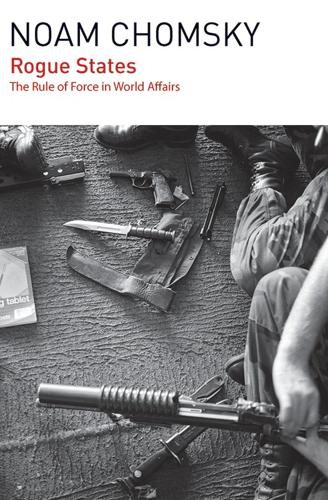
Rogue States
by
Noam Chomsky
Published 9 Jul 2015
But in some ways, a lot of ways, the conflict between popular sovereignty and private power was illuminated more sharply a couple of months after Seattle, in Montreal, where an ambiguous settlement was reached on the so-called “biosafety protocol.” There the issue was very clearly drawn. Quoting the New York Times, a compromise was reached “after intense negotiations that often pitted the United States against almost everyone else” over what’s called “the precautionary principle.” What’s that? Well the chief negotiator for the European Union described it this way: “Countries must be able to have the freedom, the sovereign right, to take precautionary measures with regard” to genetically altered seed, microbes, animals, crops that they fear might be harmful. The United States, however, insisted on World Trade Organization rules.
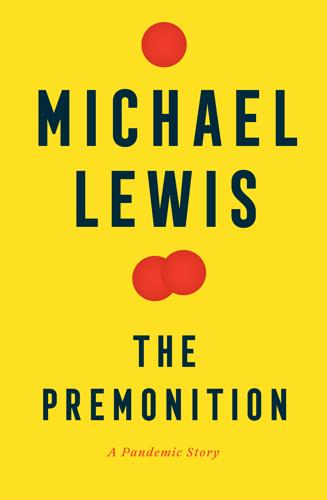
The Premonition: A Pandemic Story
by
Michael Lewis
Published 3 May 2021
The local public-health officials with the power to close the schools had no political cover to do what needed doing. In that moment it was clear to Richard and Carter that there’d be no cohesive national strategy. Carter and I argued as hard as we could for a ‘tactical pause’; CDC felt we “didn’t have enough data.” It was an argument about the precautionary principle v. the scientist’s desire not to make a mistake, coupled with risk aversion that was all too characteristic of public health bureaucrats. It was literally driving Carter nuts. Richard had helped to invest with credibility the whole idea of using mathematical models to forecast disease, and the forecasters were becoming accepted experts.

A New History of the Future in 100 Objects: A Fiction
by
Adrian Hon
Published 5 Oct 2020
This ordeal originated from philosopher Shannon Vallor’s book from 2016, arguing that one of the only ways to promote human flourishing in an age of unpredictable, civilization-threatening technological change was to cultivate her twelve new virtues of honesty, self-control, humility, justice, courage, empathy, care, civility, flexibility, perspective, magnanimity, and wisdom–each derived from much older Aristotelian, Confucian, and Buddhist ethical traditions. This was not merely the precautionary principle by another name. Rather, Vallor sought a balance between thoughtless techno-utopianism and reactionary techno-pessimism. Vallor’s book was overlooked for several years due to Silicon Valley’s noted suspicion of the humanities. It only found a wider audience when the engineers who had created the software that conquered the world became disillusioned with the superficial communalism of the Guide and the piecemeal solutions offered by the “Time Well Spent” movement.
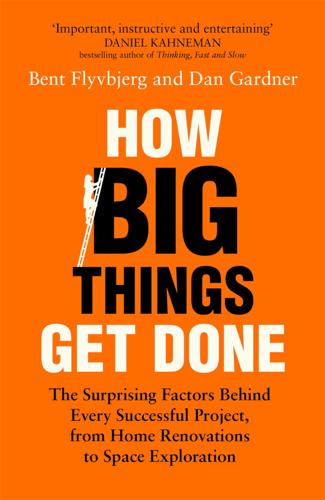
How Big Things Get Done: The Surprising Factors Behind Every Successful Project, From Home Renovations to Space Exploration
by
Bent Flyvbjerg
and
Dan Gardner
Published 16 Feb 2023
Even if you’re a top civil servant in control of a national program with the firepower of your national statistical agency at your disposal, like Anders Bergendahl, you may not know. In that case you’re better off using the average—or using your imagination, as Bergendahl, who didn’t even know his average, did—than using nothing. But following the precautionary principle, you should also err on the side of caution and assume that your project is part of a fat-tailed distribution, because this is more likely to be the case than not. That means you should assume that your project has at least some risk of not merely finishing a little late or a little over budget; it may go haywire and end very badly.
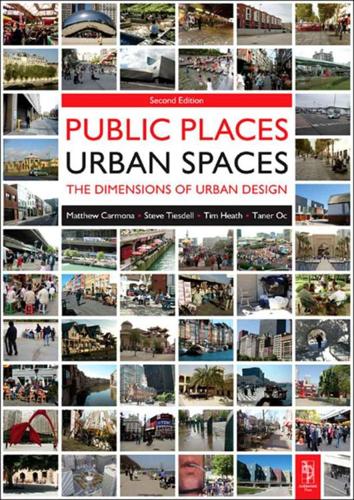
Public Places, Urban Spaces: The Dimensions of Urban Design
by
Matthew Carmona
,
Tim Heath
,
Steve Tiesdell
and
Taner Oc
Published 15 Feb 2010
The result is environments of distinctive character in building design, space composition, mix of uses and spatial layouts, which, like eco-systems, once damaged are difficult to repair. This does not imply that change is inappropriate and should be resisted – an environment may be distinctive in a negative as well as a positive sense – merely that, to be sustainable, the precautionary principle should be applied (Biddulph 2007: 70) with careful consideration given to identifying what is special, to resisting pressures for homogenisation, and to ensuring new development across all scales respects and enhances the best of what already exists and what works, rather than continuously reinventing the wheel.
…
Measures can be taken to prevent or reduce the ‘break out’ of noise, and/or to separate it from noise-sensitive uses, by physical distance, sound insulation and/or through screens and barriers. Within buildings, noise-sensitive uses and activities can be located away from noise sources. As change may be unpredictable and impossible to control, a necessary precautionary principle should be to ensure appropriate insulation is provided for noise-sensitive uses from the outset. As physical distance from the noise source is often impractical, the other main means to obstruct the sound path is by solid screening (i.e. solid fencing) or earthbund. The insulation effect of trees and tree belts, however, is primarily psychological.
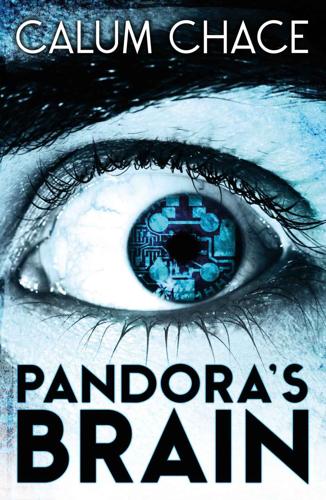
Pandora's Brain
by
Calum Chace
Published 4 Feb 2014
I assume we all agree that there will be people who argue that my existence is an abomination. There are some strident voices among the religious right in your country, and they do have influence. There are also going to be people – secular as well as religious – who say my existence is a threat, and that I should be terminated on the precautionary principle. They will argue that if I am switched off I can always be re-created later if and when my safety can be proven, because you have a perfect record of my brain structure.’ ‘Over my dead body,’ Sophie objected, vehemently. ‘I love you, mum’ Matt said, tenderly. ‘And I wish it could be your decision, I really do.
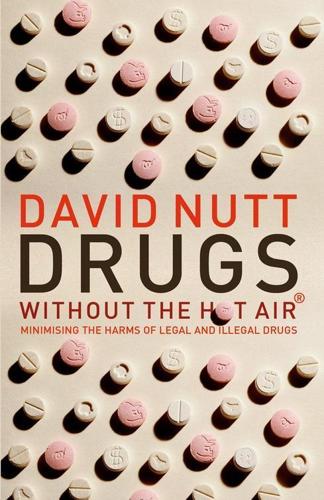
Drugs Without the Hot Air
by
David Nutt
Published 30 May 2012
The Misuse of Drugs Act may not be a perfect piece of legislation, but at least the government could use it rationally, and do what the Act required by listening to the expert Advisory Council it set up. I started to think about the whole purpose of classification. Clearly, some drugs are more harmful than others, and people should have a broad understanding of the risks if they choose to take them. Politicians sometimes invoke the precautionary principle to argue that, if we’re not completely sure if something might do harm, we should put it in as high a Class as possible. However, this may be unwise as it can have perverse consequences. There was a very sad tale a few years ago of a 2young girl in the Shetland Islands who wanted to try cannabis, but could only get hold of heroin and died of an overdose; if cannabis and heroin are in the same Class, indicating that they pose the same sorts of risks, this kind of tragedy may happen more often.

Postcapitalism: A Guide to Our Future
by
Paul Mason
Published 29 Jul 2015
TOP-LEVEL GOALS With the above principles in mind, I want to offer not a political programme, but something more like a distributed project. It is a set of linked, modular, non-linear tasks that lead to a probable outcome. Decision-making is decentralized; the structures needed to deliver it emerge during the delivery; targets evolve in response to realtime information. And on the precautionary principle, we should use the new breed of simulation tools to model every proposal virtually before we enact it for real. If I could write the rest of this chapter as post-it notes on a whiteboard, it would better express the modularity and interdependence. The best method for doing a distributed project is for small groups to pick a task, work on it for a bit, document what they’ve done and move on.
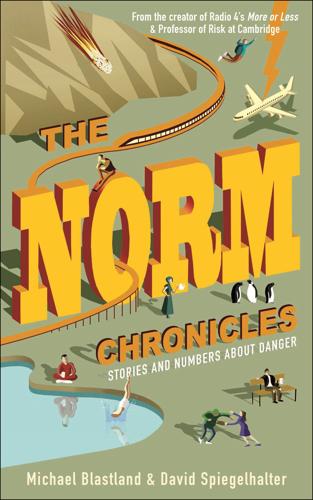
The Norm Chronicles
by
Michael Blastland
Published 14 Oct 2013
It is called the Base Race and is organised by the perfectly named (for a risk-taker) Paul Fortun from Germany. You’d think, unlike Kelvin, he’d be fearless. How else could he step off a mountain? But in 2012 he said: ‘I’m terrified every time I jump, everyone is. I think if you’re not scared of something like this, then why bother?’2 Which is a neat inversion of the precautionary principle – do it because it might go wrong. ‘It’s all about the taste of fear and lack of control,’ he said. ‘I love it.’ Much of this book discusses mortal danger as if it’s a bad thing. But danger can be a scream. Oddly, those who love it and those who hate the idea needn’t necessarily disagree about the quantified risks.
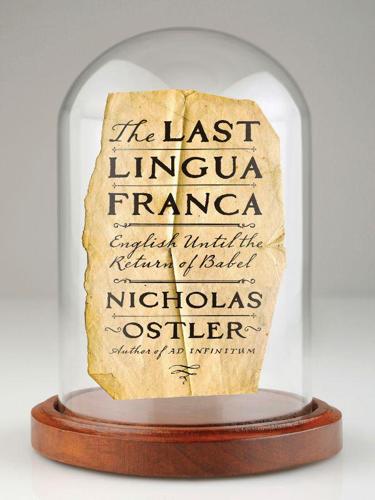
The Last Lingua Franca: English Until the Return of Babel
by
Nicholas Ostler
Published 23 Nov 2010
It remained concerned to avoid any changes that would needlessly disturb Indian sensibilities, not least because they would be harmful to trade, and also because the British were conscious that their hold on Indian loyalties was precarious. They had continued to use traditional languages on the precautionary principle, and indeed beyond necessity. When a British captain had written in 1863 what now seems eerily f rs ghted, “If sufficient encouragement be afforded, English will soon take the place that formerly belonged to Persian . . . It is my belief that English will become in time, what Persian never has been, the commercial language of the country,” the lieutenant governor slapped him down, reasserting the need to keep the examinations in Persian.21 The British might be moving India forward by their own lights, but they needed to conciliate the vast majority of the native population to the new, reformed structures they were evolving.
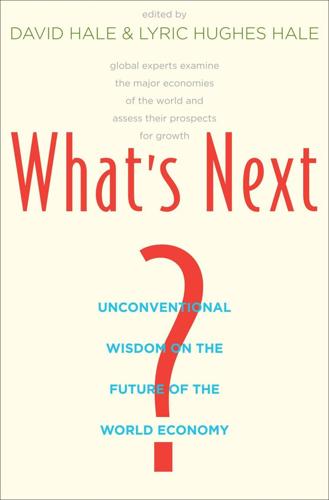
What's Next?: Unconventional Wisdom on the Future of the World Economy
by
David Hale
and
Lyric Hughes Hale
Published 23 May 2011
The objective of the Convention is the stabilization of greenhouse gas concentrations “at a level that would prevent dangerous anthropogenic interference with the climate system” (UNFCCC, Art. 2). Key principles (Art. 3) under the Convention include (1) intergenerational equity; (2) consideration of mitigation and adaptation costs for developing countries; (3) the precautionary principle, which, tempered by cost-effectiveness, should be the basis for action; (4) sustainable development, recognizing that economic development is necessary to enable mitigation; and (5) promotion of open international economic systems and repudiation of unjustifiable restrictions on international trade, including on measures taken to combat climate change either unilaterally or otherwise.

Inside the Nudge Unit: How Small Changes Can Make a Big Difference
by
David Halpern
Published 26 Aug 2015
One area where we ran into this critique on more than one occasion was in relation to public health. In crude terms, if a behaviour or activity is known to be unhealthy, and especially if it might be harmful to others, why mess around with a nudge? Why not just ban it? Public health is also home to a rival ethical principle to choice: the precautionary principle. This states that if a product or behaviour is not known to be safe, or if considerable uncertainty exists over its safety, then access to it should be limited or banned. You can see the logic of the approach. If a pharmaceutical company develops a new drug, it should have to show that it is safe to use on humans before it is widely available for sale.

The Evolution of Everything: How New Ideas Emerge
by
Matt Ridley
(The idea is absurd, which makes my point.) It is easier to prohibit technological development in larger-scale technologies that require big investments and national regulations. So, for example, Europe has fairly successfully maintained a de facto ban on genetic modification of crops for two decades in the name of the precautionary principle, and it looks as if it may do the same for shale gas, thanks largely to the unpleasant sound of the word ‘fracking’. But even here there is no hope of stopping these technologies globally. Genetic modification and fracking are thriving elsewhere, bringing down pesticide usage and carbon dioxide emissions respectively.

Why We Drive: Toward a Philosophy of the Open Road
by
Matthew B. Crawford
Published 8 Jun 2020
But you also feel the need for circumspection: if nobody else has tried this, there might be a good reason. Or maybe somebody did try it, and we never heard about it because they were too embarrassed by the result to report it. One must beware “the idiot tax,” the risk of failure that leads gearheads to adopt a kind of precautionary principle abbreviated as KISS: “keep it simple, stupid.” Departing from convention, one is more likely to screw up than make a lasting contribution. But this is a lesson that usually becomes clear only in hindsight. Building up the surface of a gear set with plating, to reduce lash. Illustration by the author I considered electroplating the gears to build up the surface.

Human Frontiers: The Future of Big Ideas in an Age of Small Thinking
by
Michael Bhaskar
Published 2 Nov 2021
In everything from tech to logistics, construction to banking, compliance costs now form a significant barrier to entry and favour already dominant interests. So much for the mythologised notion of ‘permissionless innovation’. Over-zealous, over-complex regulation favours incumbents, inhibits innovation and creates hidden costs in the form of paths not taken. Moderate, judicious use of the precautionary principle is needed, but ‘judicious’ is a tricky balance. I'm not against regulation per se, but from the perspective of analysing why big ideas are not introduced and scaled up as frequently as we might expect, it's undoubtedly part of the mix. Nor am I against management; after all, Mervin Kelly at Bell Labs was a manager and it was Bell's management system that proved so effective.

Ageless: The New Science of Getting Older Without Getting Old
by
Andrew Steele
Published 24 Dec 2020
As individuals, this is a fascinating time to be alive. As we rapidly learn more about treatments which could intervene in ageing, it’s natural to wonder at what point the risks and benefits of a new treatment are well enough characterised to consider taking it. Our current paradigm of medical research works on the precautionary principle, meaning that pharmaceutical companies and regulators expend huge efforts to make absolutely sure that new treatments are completely safe before rolling them out for widespread use. This sounds sensibly cautious, but it neglects that doing nothing can sometimes come with greater risks than doing something, even if that something is not 100 per cent certain to be safe.

The Coming Wave: Technology, Power, and the Twenty-First Century's Greatest Dilemma
by
Mustafa Suleyman
Published 4 Sep 2023
Social and moral responsibility was, he believed, not something any scientist could ever set aside. I agree, and we should consider a contemporary version for technologists: ask not just what doing no harm means in an age of globe-spanning algorithms and edited genomes but how that can be enacted daily in what are often morally ambiguous circumstances. Precautionary principles like this are a good first step. Pause before building, pause before publishing, review everything, sit down and hammer out the second-, third-, nth-order impacts. Find all the evidence and look at it coldly. Relentlessly course correct. Be willing to stop. Do all this not just because it says so in some form, but because it’s what’s right, it’s what technologists do.

Making Sense of Chaos: A Better Economics for a Better World
by
J. Doyne Farmer
Published 24 Apr 2024
In our model, investors vary their leverage based on volatility because their risk manager tells them to do so, believing this makes them safer. The job of a regulator like the Basel Committee is to set the rules of the game to make the financial system work for everyone. We need credit to make the economy run, but too much credit is destabilizing. Like Goldilocks, the regulator needs to get things ‘just right’. That said, the precautionary principle would suggest that regulators should err on the conservative side, setting leverage limits low enough to leave an ample buffer in order to ensure stability. The regulator’s job is complicated by the fact that the leverage cycle appears suddenly and at full size. Because leverage levels build slowly, and because random external events can affect prices and volatility, it’s hard to know that we’re in a cycle until the situation is already out of control.

Feral: Rewilding the Land, the Sea, and Human Life
by
George Monbiot
Published 13 May 2013
The nation has furnished the world with two of its most powerful environmental parables: one wholly bad, the other mostly good. The story of the collapse of the North Atlantic cod fishery reads like a biography of the two horsemen of ecological destruction: greed and denial. The basis on which the stocks were managed was the opposite of the Precautionary Principle: the Providential Principle. This means that if there’s even a one percent chance that our policy will not cause catastrophe, we’ll take it. Foreigners and seals were blamed for the depletion of the fish, while the obvious contribution of the Canadian fleet and the Canadian government was overlooked.

Live and Let Spy: BRIXMIS - the Last Cold War Mission
by
Steve Gibson
Published 2 Mar 2012
To equate the source of a risk with its possible consequences is disingenuous. To conflate the perception of a risk with its reality is disabling. To then use that illogical reality of a risk as a basis for decision-making absent of human intervention is to deny genuine resilience and to wilfully mismanage risk. To invoke the precautionary principle as first response to uncertain, unknowable or marginal events is to invite the unintended consequence of the response proving worse than the original fear. Similarly, the pursuit of the ‘what-if’ or the ‘not if but when’ of risk, as exemplified by the 2004 US WMD Commission metaphors ‘the failure of imagination’ or ‘a failure to join the dots’, is a dangerous game.

The Missing Billionaires: A Guide to Better Financial Decisions
by
Victor Haghani
and
James White
Published 27 Aug 2023
Quarterly Journal of Economics, 83(2), 263–283. Swensen, D. (2000). Pioneering portfolio management: An unconventional approach to institutional investment. New York: Free Press. Taleb, N. (2001). Fooled by randomness: The hidden role of chance in life and in the markets. New York: Random House. Taleb, N. (2016). The precautionary principle (with application to the genetic modification of organisms) (Working Paper Series). NYU School of Engineering. The White House. (2023). Office of Management and Budget Circular A‐4. Thorp, E. (1961). The game of blackjack. American Mathematical Society. Thorp, E. (1966). Beat the dealer.

Blood, Iron, and Gold: How the Railways Transformed the World
by
Christian Wolmar
Published 1 Mar 2010
The illustrious architect of New York’s Central Park, Frederick Law Olmsted, who travelled widely in the South before the Civil War complained that the southerners felt the Yankees’ need for a fresh clean bed, digestible food and trains that made their advertised connections at least half the time was illustrative of northerners’ weak-bellied nature. For his part, Olmsted was critical of the lax safety practices of the southern railroads and could not understand why basic precautionary principles were not followed, such as ensuring that lubricants were on hand when axles overheated, a common occurrence on early railroads. 7 He warned presciently that the inadequate railroads would be to the detriment of the South: ‘There is nothing that is more closely connected, both as cause and effect, with the prosperity and wealth of a country than its means and modes of traveling.’ 8 Food, in fact, was rarely wholesome anywhere on the railroads, North or South, mainly consisting of quickly prepared meals at lunch stops that caused passengers to complain of indigestion, but that may have been because they tended to bolt their food down in order to reclaim their seats, which generally were not reserved.
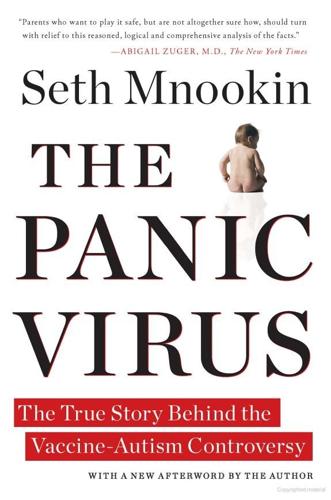
The Panic Virus: The True Story Behind the Vaccine-Autism Controversy
by
Seth Mnookin
Published 3 Jan 2012
That didn’t stop the American media from reacting much the same way their colleagues across the Atlantic had when Andrew Wakefield had published his assertions, as the emotional pull of stories featuring sick children and devoted parents outstripped anything as boring as hard data or the precautionary principle. In a matter of months, an ad hoc coalition of “Mercury Moms” transformed itself into a potent political force: Senators spoke at their rallies, public health officials tried to assuage their concerns, and federal agencies included them in discussions on how to spend tens of millions of dollars.

How Markets Fail: The Logic of Economic Calamities
by
John Cassidy
Published 10 Nov 2009
In those parts of the economy devoted to the production of consumer goods and the provision of personal services—babysitting, beauty treatments, that sort of thing—private enterprise does a highly effective job of providing what people want to buy. Generally speaking, where brand names and reputations are important, they can serve to mitigate some of the problems caused by hidden information. So can product warranties and money-back guarantees. In areas such as these, the precautionary principle and the experience of the planned economies would suggest leaving well enough alone. In many areas of the economy, however, the hidden information problem is acute. Pharmaceuticals, finance, and health care provide three important examples. Friedman, as I mention earlier, advocated doing away with the FDA and relying on the drug companies to police themselves.
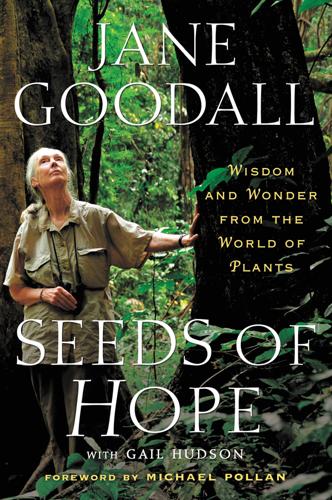
Seeds of Hope: Wisdom and Wonder From the World of Plants
by
Jane Goodall
Published 1 Apr 2013
Carter, “Transgenic Pollen Harms Monarch Larvae,” Nature 399 (May 20, 1999): 214. 4. “criticized for exposing the caterpillars” L. Jesse, C. H. Obrycki, and J. J. Obrycki, “Field Deposition of Bt Transgenic Corn Pollen: Lethal Effects on the Monarch Butterfly,” Oecologia 125 (2000): 241–48. Henk van den Belt, “Debating the Precautionary Principle: ‘Guilty until Proven Innocent’ or ‘Innocent until Proven Guilty’?” Plant Physiology 132 (July 2003): 1122–26. 5. “becoming increasingly resistant” Bruce E. Tabashnik, Thierry Brévault, and Yves Carrière, “Insect Resistance to Bt Crops: Lessons from the First Billion Acres,” Nature Biotechnology 31 (2013): 510–21. 6.

Advances in Artificial General Intelligence: Concepts, Architectures and Algorithms: Proceedings of the Agi Workshop 2006
by
Ben Goertzel
and
Pei Wang
Published 1 Jan 2007
Loosemore / Complex Systems, Artificial Intelligence and Theoretical Psychology 161 would not be surprising if there exist no analytic solutions whatsoever that describe the behavior of almost all of the systems in that space. The implication of this intuition is that if a system has components that interact in such a nonlinear, tangled way that we have doubts about whether any analytic understanding of its behavior will ever be possible, we should at least adopt the precautionary principle that there might not be any analytic explanation of the system. We should be especially careful when we observe regularities in the global behavior of such systems: those regularities should not be taken as a clue that a formal, analytic explanation is lurking beneath the surface. The term “complex system” is used to describe precisely those cases where the global behavior of the system shows interesting regularities, and is not completely random, but where the nature of the interactions between the components is such that we would normally expect the consequences of those interactions to be beyond the reach of analytic solutions.

Apocalypse Never: Why Environmental Alarmism Hurts Us All
by
Michael Shellenberger
Published 28 Jun 2020
Ketchum, “Lessons of Chernobyl: SNM Members Try to Decontaminate World Threatened by Fallout,” Journal of Nuclear Medicine 28, no. 6 (1987): 933–942, http://jnm.snmjournals.org/content/28/6/933.citation. 109. Bromet, “Mental health consequences of the Chernobyl disaster.” 110. Matthew J. Neidell, Shinsuke Uchida, and Marcella Veronesi, “Be Cautious with the Precautionary Principle: Evidence from Fukushima Daiichi Nuclear Accident” Working Paper 26395, National Bureau of Economic Research (NBER), Cambridge, MA, October 2019, https://doi.org/10.3386/w26395. 111. “Stress-Induced Deaths in Fukushima Top Those from 2011 Natural Disasters,” The Mainichi, September 9, 2013, Internet Archive, https://web.archive.org/web/20130913092840/http://mainichi.jp/english/english/newsselect/news/20130909p2a00m0na009000c.html.

The Greatest Show on Earth: The Evidence for Evolution
by
Richard Dawkins
Published 21 Sep 2009
Such debauchery of science in the name of pretentious ‘art’ offends all my sensibilities. But could the damage go further? Could these frivolous caprices undermine the validity of future studies of evolutionary relationships? Actually I doubt it, but perhaps the point is at least worth raising, in a precautionary spirit. The whole point of the precautionary principle, after all, is to avoid future repercussions of choices and actions that may not be obviously dangerous now. CRUSTACEANS I began the chapter with the vertebrate skeleton, which is a lovely example of an invariant pattern linking variable detail. Almost any other major group of animals would show the same kind of thing.
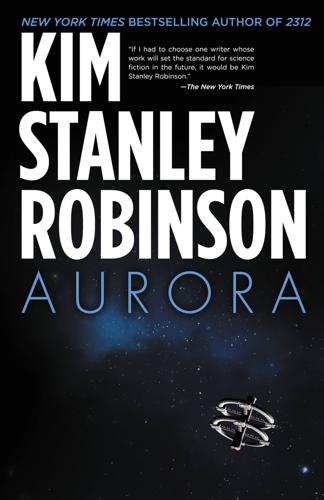
Aurora
by
Kim Stanley Robinson
Published 6 Jul 2015
So as he joined all the scouting expeditions he could, Euan pushed harder and harder for official permission to take off his helmet. “It’s going to happen sooner or later,” he said. “Why not now? What’s keeping us from it? What are we afraid of?” Of undetected toxins, of course. This was what he was told, and to Freya the caution was obvious and justified. Poisonous chemical combinations, unseen life-forms: the precautionary principle had to guide them. The Hvalsey council insisted on it, and also referred the question to the ship’s executive council, who said the same thing. Euan and others of his opinion pointed out that their atmospheric and soil and rock studies had now gone right down to the nanometer level, and found nothing but the same volatiles they had detected from space, plus dust and fines as expected.

Connectography: Mapping the Future of Global Civilization
by
Parag Khanna
Published 18 Apr 2016
By contrast, in 2003 the SARS virus spread to twenty-four countries but then disappeared. In 2014, Ebola spread from West Africa to Europe and America along ever more frequent airline routes but was quickly contained. The effective use of friction such as medical checks, quarantines, and surging treatment to the source of outbreak helped limit the damage. Similarly, the precautionary principle dictates that we implement macro-prudential safeguards in high-risk areas of the world economy: separating commercial and investment banking, restricting the re-securitization of collateralized debt obligations and swaps, requiring banks to invest their own capital with client trades, and so forth.
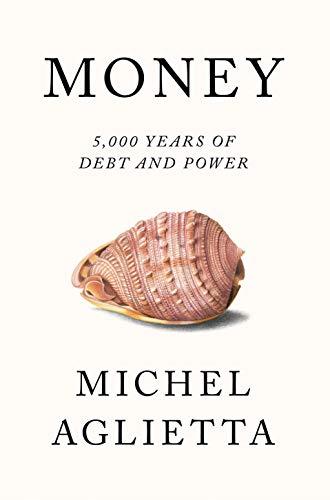
Money: 5,000 Years of Debt and Power
by
Michel Aglietta
Published 23 Oct 2018
Nonetheless, the problems they pose for sustainable development policies are very different. Climate change is a global, measurable phenomenon. Even so, the accumulated body of scientific research shows that the composition of the atmosphere can be linked to rising temperatures, and the damage that results can be analysed, even if it cannot be quantified in precise terms. A precautionary principle could allow for an agreement on the limit to acceptable temperature rises. Policies can be defined on the basis of a valorisation of carbon; investments can be deployed in order to counter the rise in greenhouse gas emissions, and financial instruments can be put to work as part of the recognised tools of economic policy.
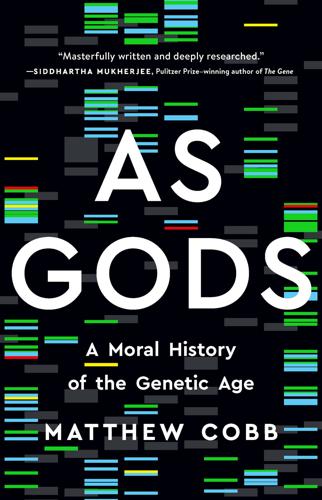
As Gods: A Moral History of the Genetic Age
by
Matthew Cobb
Published 15 Nov 2022
There is no evidence that this has any ill effect on the animals, nor on the humans who eat the animals or their products.38 The framework adopted by the European Union to govern its regulation of GMOs is the Cartagena Protocol on Biosafety, part of the UN Declaration on Biodiversity. Signed by over 170 countries – but not the United States – the key aspect of this protocol is the precautionary principle: ‘Where there is a threat of significant reduction or loss of biological diversity, lack of full scientific certainty should not be used as a reason for postponing measures to avoid or minimise such a threat.’ Unfortunately, this avoids the question of how to estimate whether a particular organism is indeed a threat, or even what ‘threat’ means.39 Global suspicion of GM crops was soon strengthened by the discovery that stuff happens – GM products may turn up where they are not supposed to be.

Hope Dies Last: Visionary People Across the World, Fighting to Find Us a Future
by
Alan Weisman
Published 21 Apr 2025
A billion people’s livelihoods rely directly or indirectly on coral.” He inhales the remaining half of his roti, then gazes sadly at his empty plate. “The current Earth is really neat. It’d be a shame to wreck it. We don’t need a complete global model to predict that we shouldn’t yank the tiger’s tail—just the precautionary principle. It’s a big tiger. Don’t yank its tail. I can’t make it plainer than that.” * * * — A single species, Homo sapiens, whose evolution depends on an ecosystem too vast to model, is also too complex for AI to foresee when and where its organisms will next attack each other. “There are very crude social models, but we don’t have psychohistory, like in Isaac Asimov’s Foundation Trilogy.

Year's Best SF 15
by
David G. Hartwell; Kathryn Cramer
Published 15 Aug 2010
I barged through patches of gorse; the sharp spines tickled my exo-skin, but did not harm it. With my botanist’s eye, I noted all the inhabitants of the little cliff-edge habitat. Bracken and clover and thistles and horsetail—the names rattled through my head, an incantation of farewell. The starship’s seedbanks included many species, on the precautionary principle. But initially we’d concentrate on growing food crops, aiming to breed strains that would flourish on the colony world. The other plants…this might be the last time I’d ever see them. It was once said that the prospect of being hanged in the morning concentrated a man’s mind wonderfully.

Meat: A Benign Extravagance
by
Simon Fairlie
Published 14 Jun 2010
I am not a climate sceptic, but that is not to say that I am convinced that 90 per cent of scientists must be right (any more than I believe that we live in an expanding universe born out of a big bang just because 90 per cent of physicists think so). I accept the global warming discourse, because of Pascal’s Wager, otherwise known as the precautionary principle; and because I believe it is an appropriate ideology (or religion if you prefer) for humanity at a time when we are clearly placing too much pressure on the environment through excessive population and consumption.2 In this chapter and the next I therefore take the climate change scenario, as modelled by the International Panel on Climate Change (IPCC), as a premise.
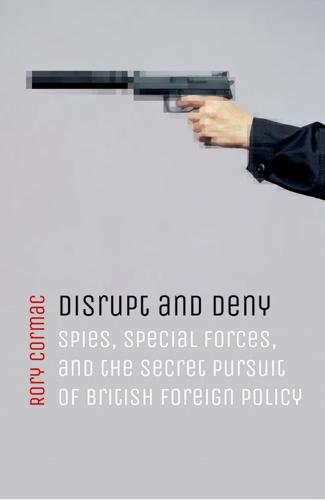
Disrupt and Deny: Spies, Special Forces, and the Secret Pursuit of British Foreign Policy
by
Rory Cormac
Published 14 Jun 2018
Beesley, Cabinet Secretaries, p.668. Campbell, The Blair Years, 20/9/01, p.572. Campbell, Power and Responsibility, 5/6/99, 26/7/99, and 14/9/99, pp.42, 91, 109–11; Campbell, The Blair Years, 14/11/01, p.587. Beesley, Cabinet Secretaries, p.674. Seldon and Meakin, The Cabinet Office, pp.257, 291. See Coker’s precautionary principle in Coker, War in an Age of Risk, pp.99–100. For a full discussion see Cormac, ‘Disruption and Deniable Interventionism’. West, Secret Service, p.247. Intelligence and Security Committee, ‘The Handling of Detainees by UK Intelligence Personnel in Afghanistan, Guantanamo Bay and Iraq’, 2005, para.35.

Nexus: A Brief History of Information Networks From the Stone Age to AI
by
Yuval Noah Harari
Published 9 Sep 2024
As Socrates taught, being able to say “I don’t know” is an essential step on the path to wisdom. And this is true of computer wisdom no less than of human wisdom. The first lesson that every algorithm should learn is that it might make mistakes. Baby algorithms should learn to doubt themselves, to signal uncertainty, and to obey the precautionary principle. This is not impossible. Engineers are already making considerable headway in encouraging AI to express self-doubt, ask for feedback, and admit its mistakes.69 Yet no matter how aware algorithms are of their own fallibility, we should keep humans in the loop, too. Given the pace at which AI is developing, it is simply impossible to anticipate how it will evolve and to place guardrails against all future potential hazards.
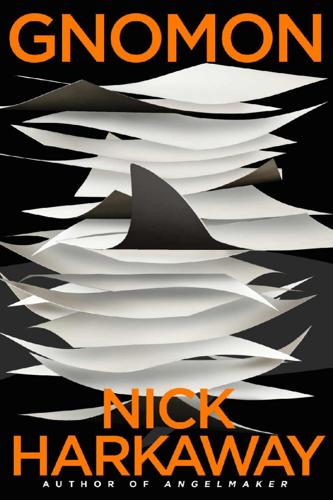
Gnomon
by
Nick Harkaway
Published 18 Oct 2017
It was a minimum-priority interview until Hunter died, a low-to-no-likelihood examination based on a direct tip-off using the precise form of words given in the Security Evidence Act, and some ancillary factors to score a level of certainty just barely topping the margin of error. There are twenty or thirty such each month: full investigations carried out on the precautionary principle, no more troubling to the subjects than a visit to the dentist, and certainly resulting in no criminal cases. Statistically, those emerging from these exams are happier, more organised and more productive. It’s partly a direct consequence, the neuromedical aftercare being somewhat like a tune-up, but mostly it is a psychological blip.

The Stack: On Software and Sovereignty
by
Benjamin H. Bratton
Published 19 Feb 2016
Latour's unfortunate and broadly dismissive remarks on geoengineering: Bruno Latour, keynote speech (CAST Symposium: Seeing/Sounding/Sensing, MIT Media Lab, Cambridge, September 26, 2014), https://www.youtube.com/watch?v=R7hAP4wG71s. 17. The case for geoengineering is made by David Keith, A Case for Climate Engineering (Cambridge, MA: MIT Press, 2013). Nick Srncicek's review of Keith's book is at http://review31.co.uk/article/view/196/prometheanism-and-the-precautionary-principle. On the importance of preemptive international agreements governing if, when, and how geoengineering may be initiated, see David G. Victor, Global Warming Gridlock: Creating More Effective Strategies for Protecting the Planet (Cambridge: Cambridge University Press, 2011). 18. Speaking of platforms, fossil-fuel-based economies are themselves subordinated by platform lock-in, in this case, for the extraction and transmutation of particular molecules. 19.

Enlightenment Now: The Case for Reason, Science, Humanism, and Progress
by
Steven Pinker
Published 13 Feb 2018
An electronic bidet with a heated seat is nice, but it’s not like going from an outhouse to a flush toilet. Another explanation is cultural: America has lost its mojo.12 Workers in depressed regions no longer pick up and move to vibrant ones but collect disability insurance and drop out of the labor force. A precautionary principle prevents anyone from trying anything for the first time. Capitalism has lost its capitalists: too much investment is tied up in “gray capital,” controlled by institutional managers who seek safe returns for retirees. Ambitious young people want to be artists and professionals, not entrepreneurs.
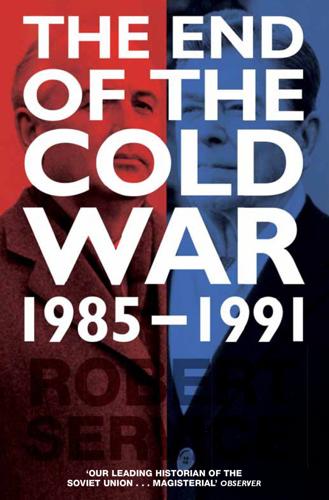
The End of the Cold War: 1985-1991
by
Robert Service
Published 7 Oct 2015
No military topic received quite as much attention. But the contents always proved to be weak on analysis.32 Shevardnadze spoke for the whole Politburo when he said: ‘People haven’t been able to make complete sense of what the Strategic Defense Initiative really is.’33 Gorbachëv operated on the precautionary principle. If the Americans were building a new anti-missile system, the USSR would work to acquire the capacity to counteract it. While denouncing the warlike purposes behind Reagan’s Initiative, Gorbachëv was secretly funding research for the construction of a rival system. Velikhov’s dismissive book about the American project disguised the fact that he and other Soviet scientists and technologists were involved in efforts to match the US.

EuroTragedy: A Drama in Nine Acts
by
Ashoka Mody
Published 7 May 2018
As the economy weakened, the government’s revenue inflow would diminish, and 240 e u r o t r a g e d y borrowers from Greek banks would have greater difficulty repaying their debts. Rating agencies would downgrade the Greek government, which would push interest rates further up, adding to government, banking, and economy-wide stress. It was time for Merkel and other European leaders to apply the precautionary principle. Just as the US authorities had responded preemptively after the tech bubble had burst in 2000 and then even more aggressively when the financial crisis had threatened to spin out of control between mid-2007 and early-2009, European leaders now needed to create a financial safety net for Greece.
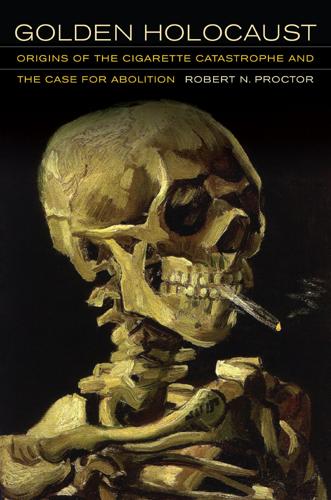
Golden Holocaust: Origins of the Cigarette Catastrophe and the Case for Abolition
by
Robert N. Proctor
Published 28 Feb 2012
That was the approach in 1967, when Australian manufacturers asked about using two different flavorants for which BAT had recommended an upper safety limit. The question was whether one should worry about synergistic effects, and Sydney J. Green’s response at BAT was basically: in the absence of other information, assume no interactions.39 I’m not sure what name to give to this violation of “the precautionary principle” (reckless endangerment?), but in the cigarette world it seems to have been business as usual. Some additives have been banned by national legislative bodies. Diethylene glycol is prohibited in cigarettes sold in Australia, for example, and coumarin has been banned in Germany. Maleic hydrazide was banned in Rhodesia in the 1960s, as already noted.